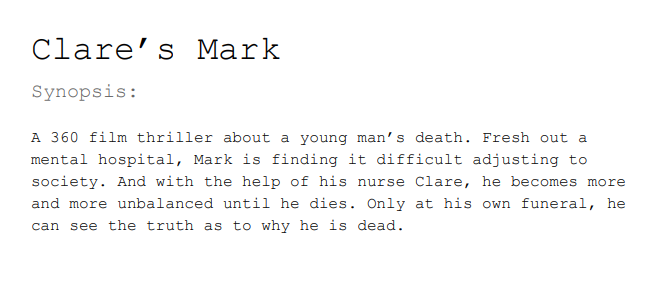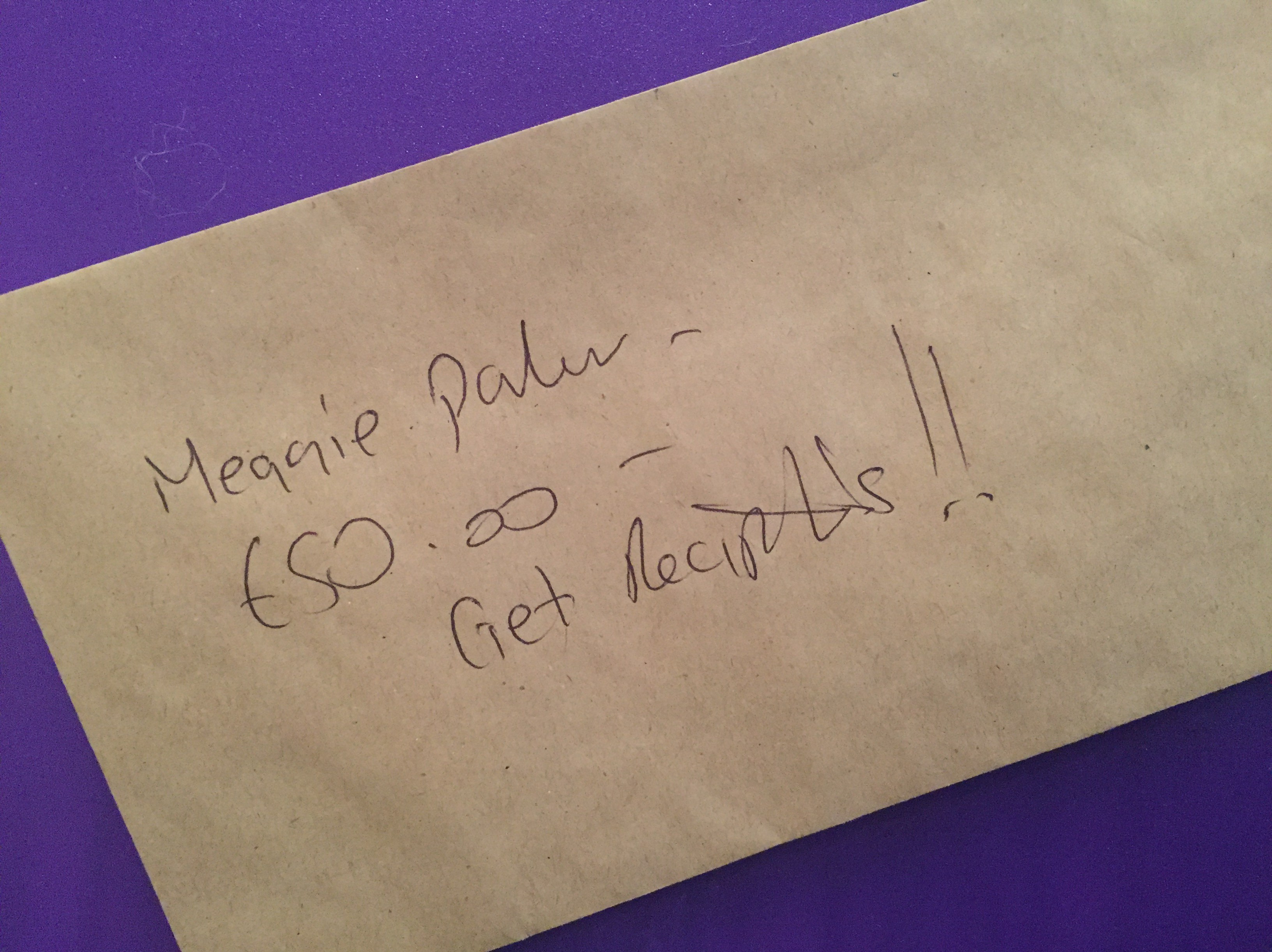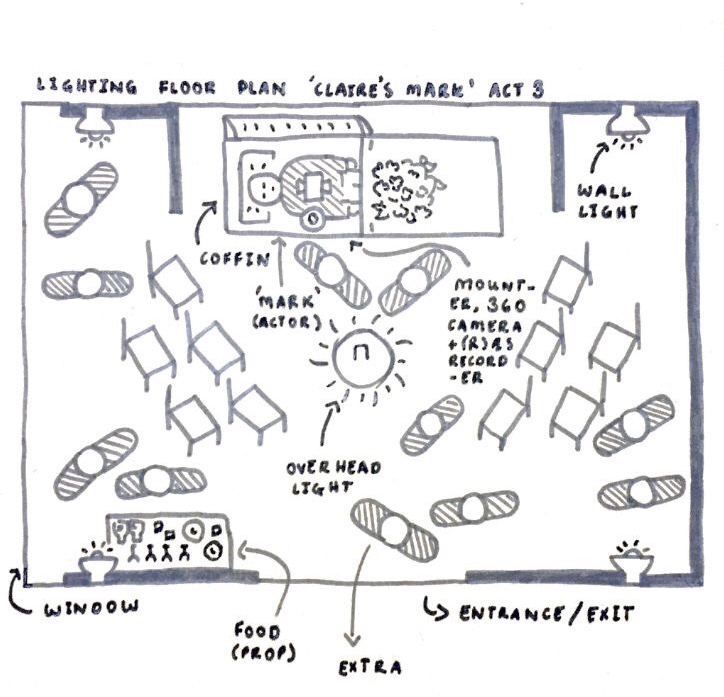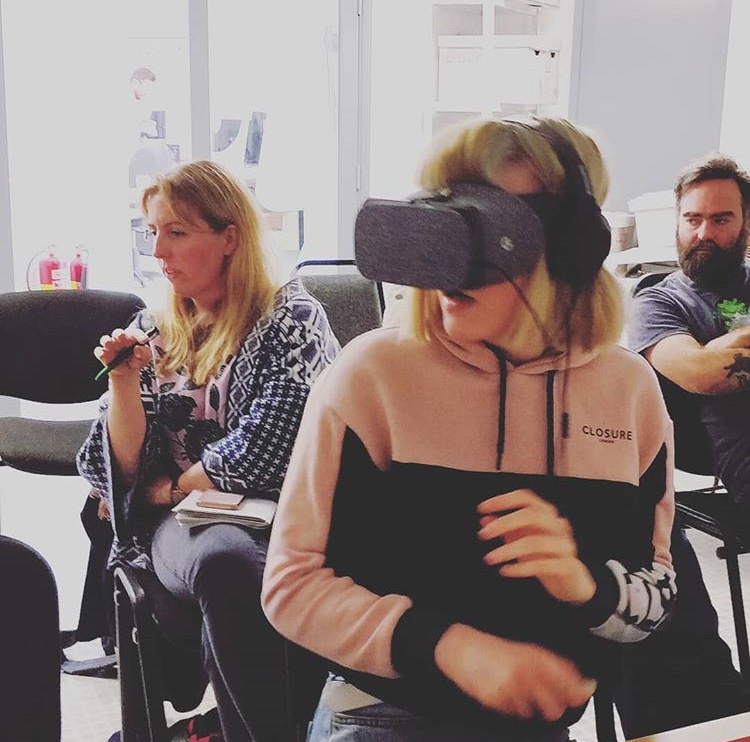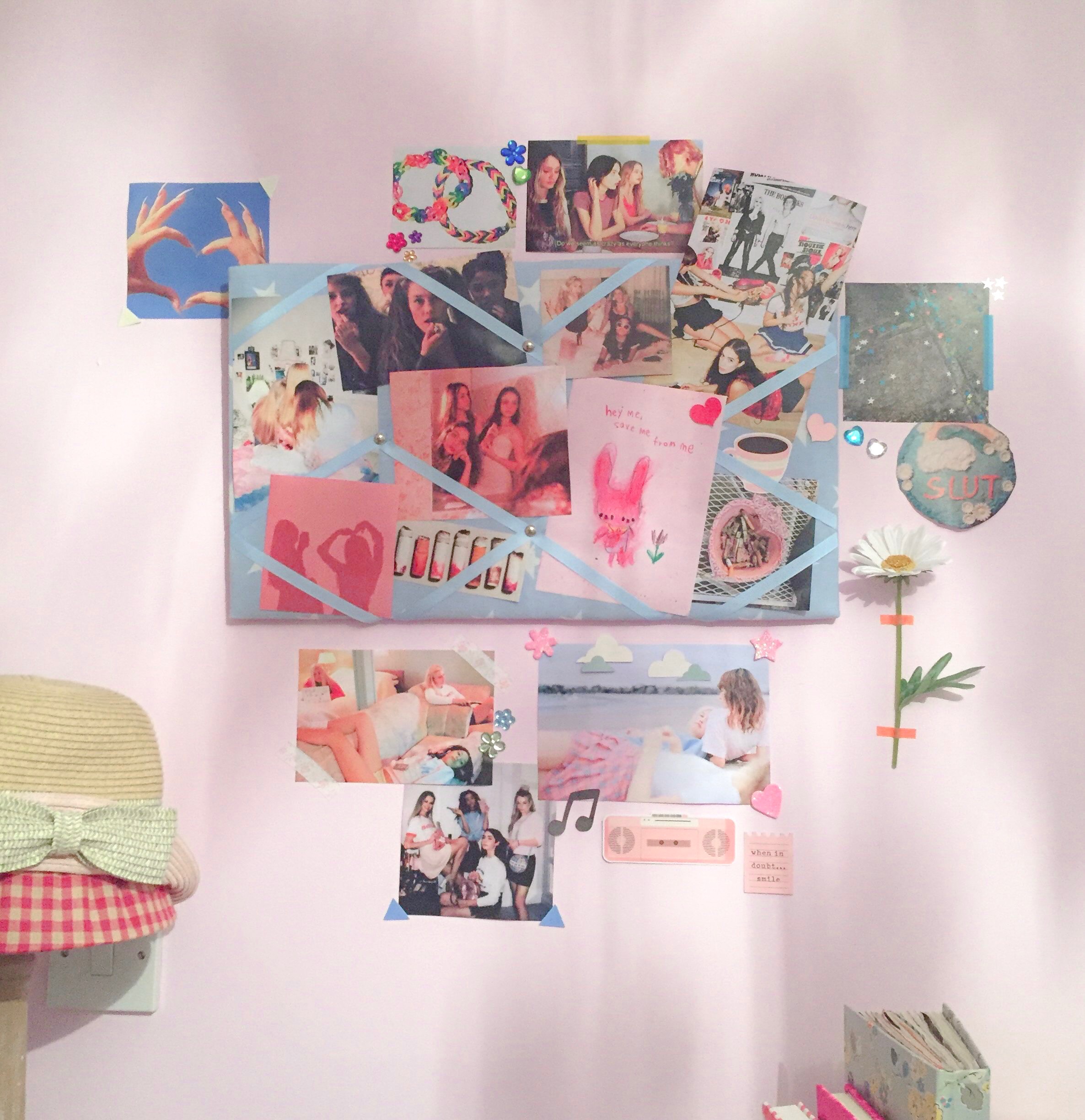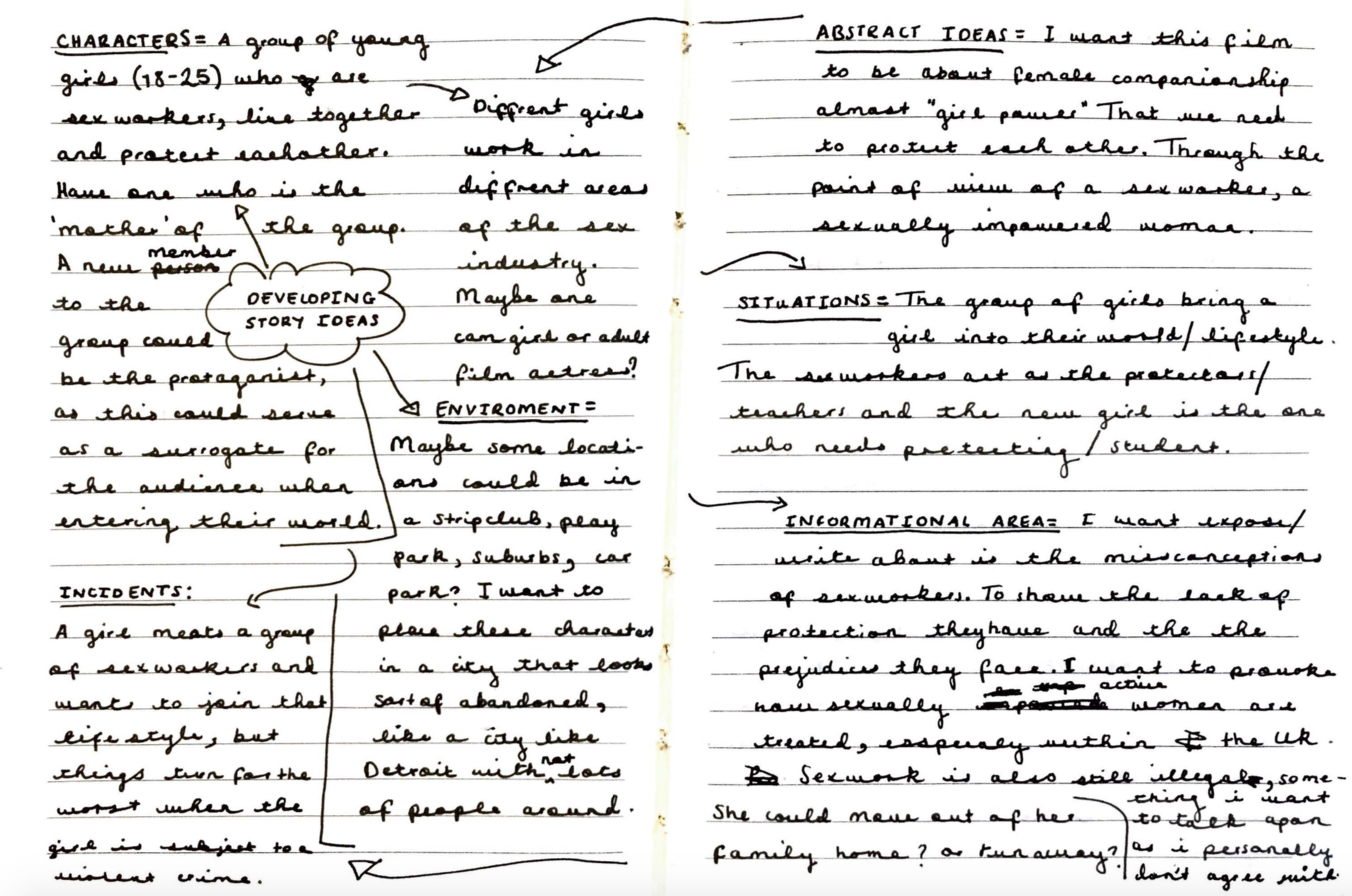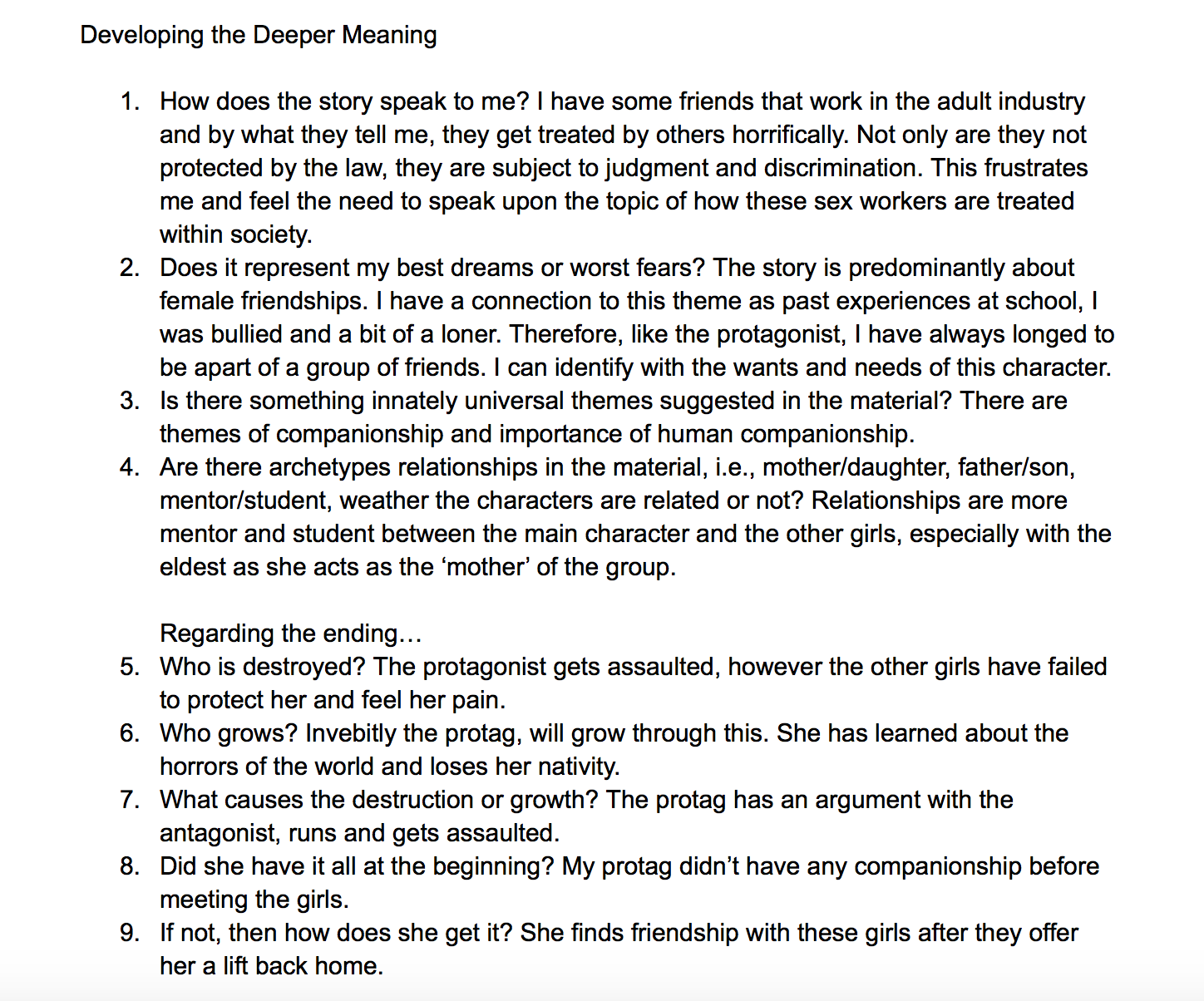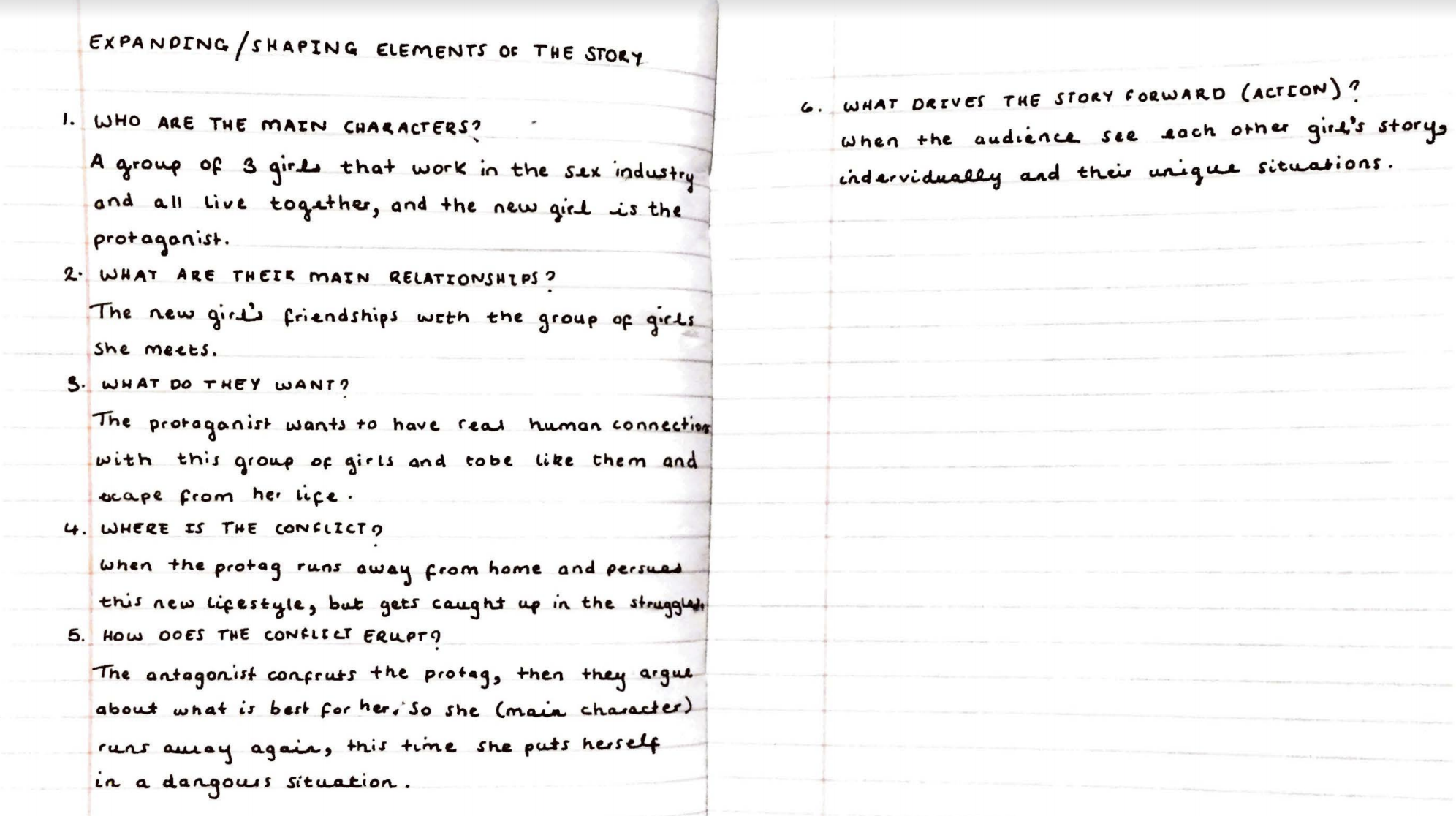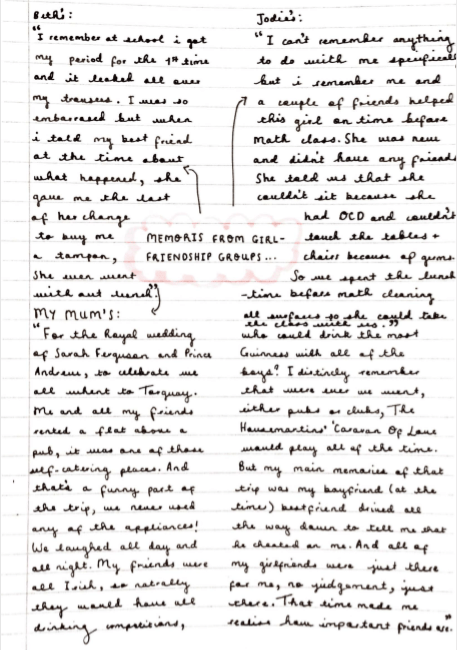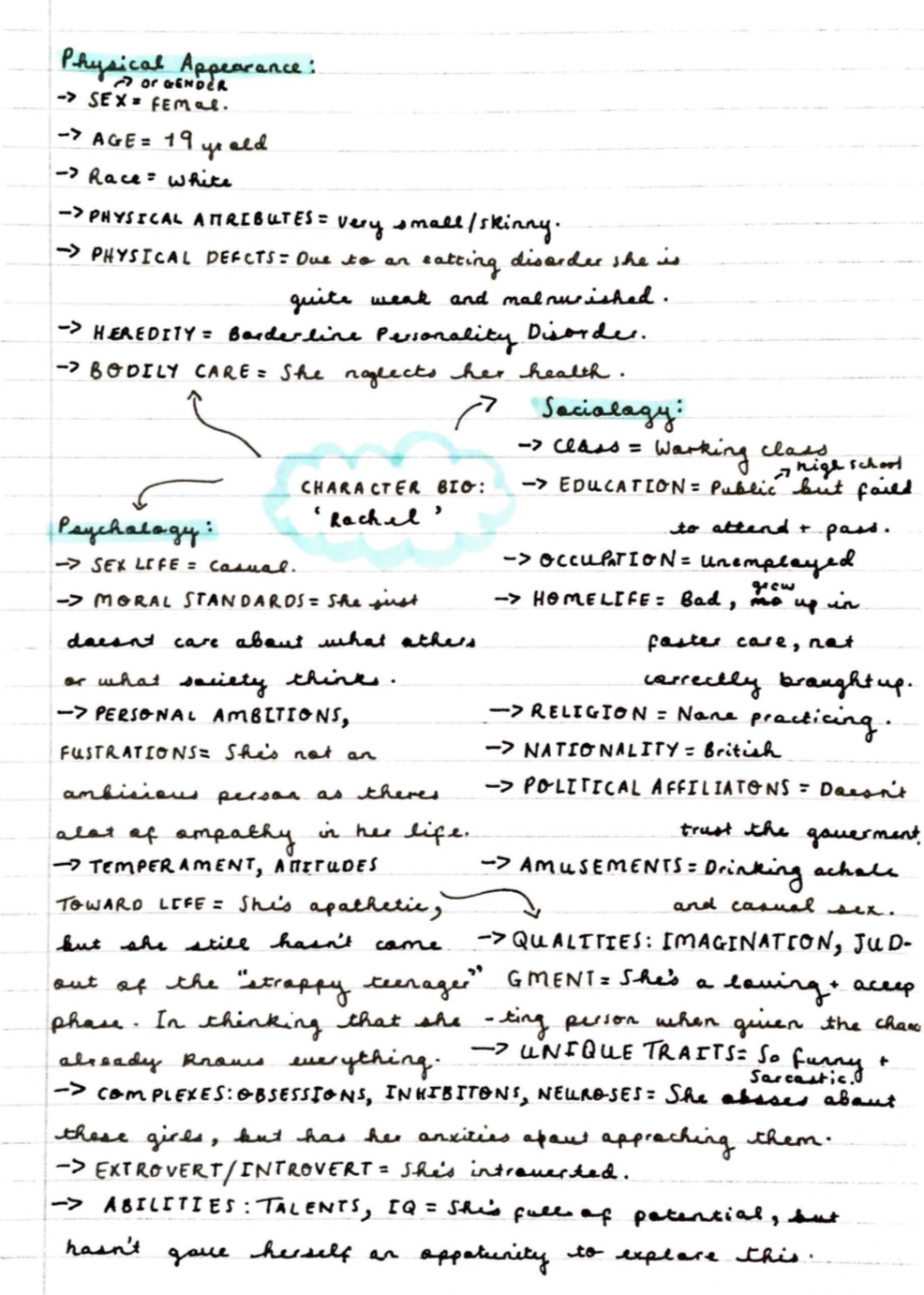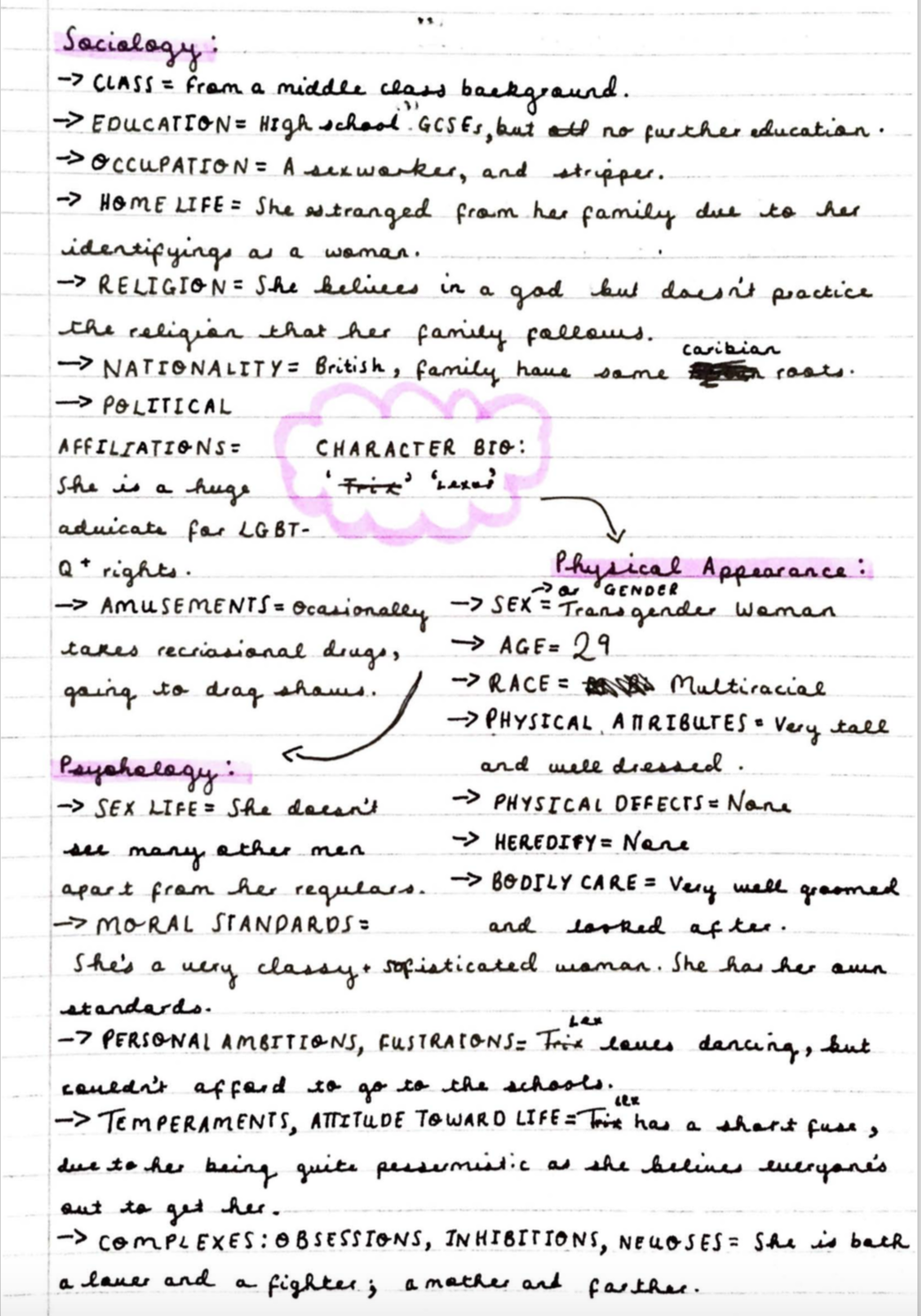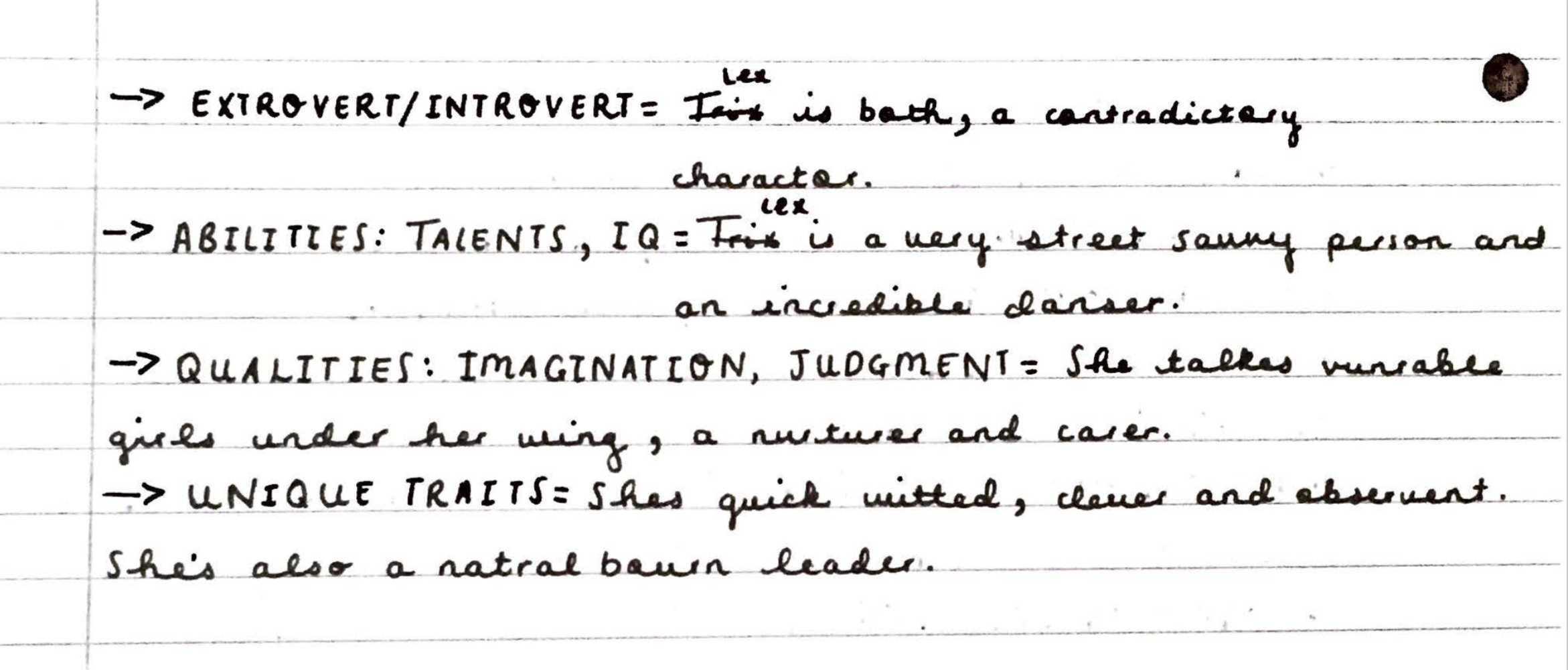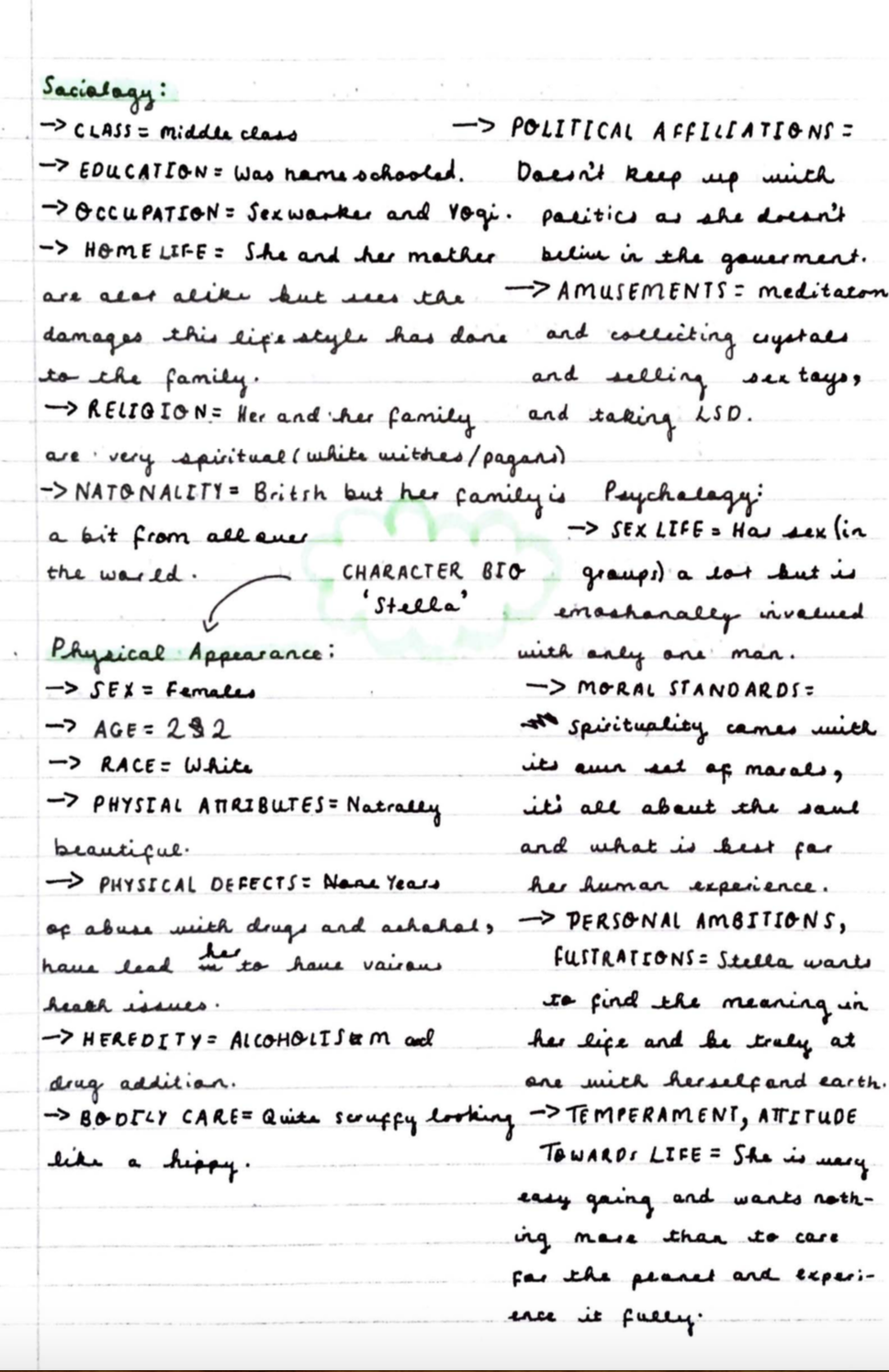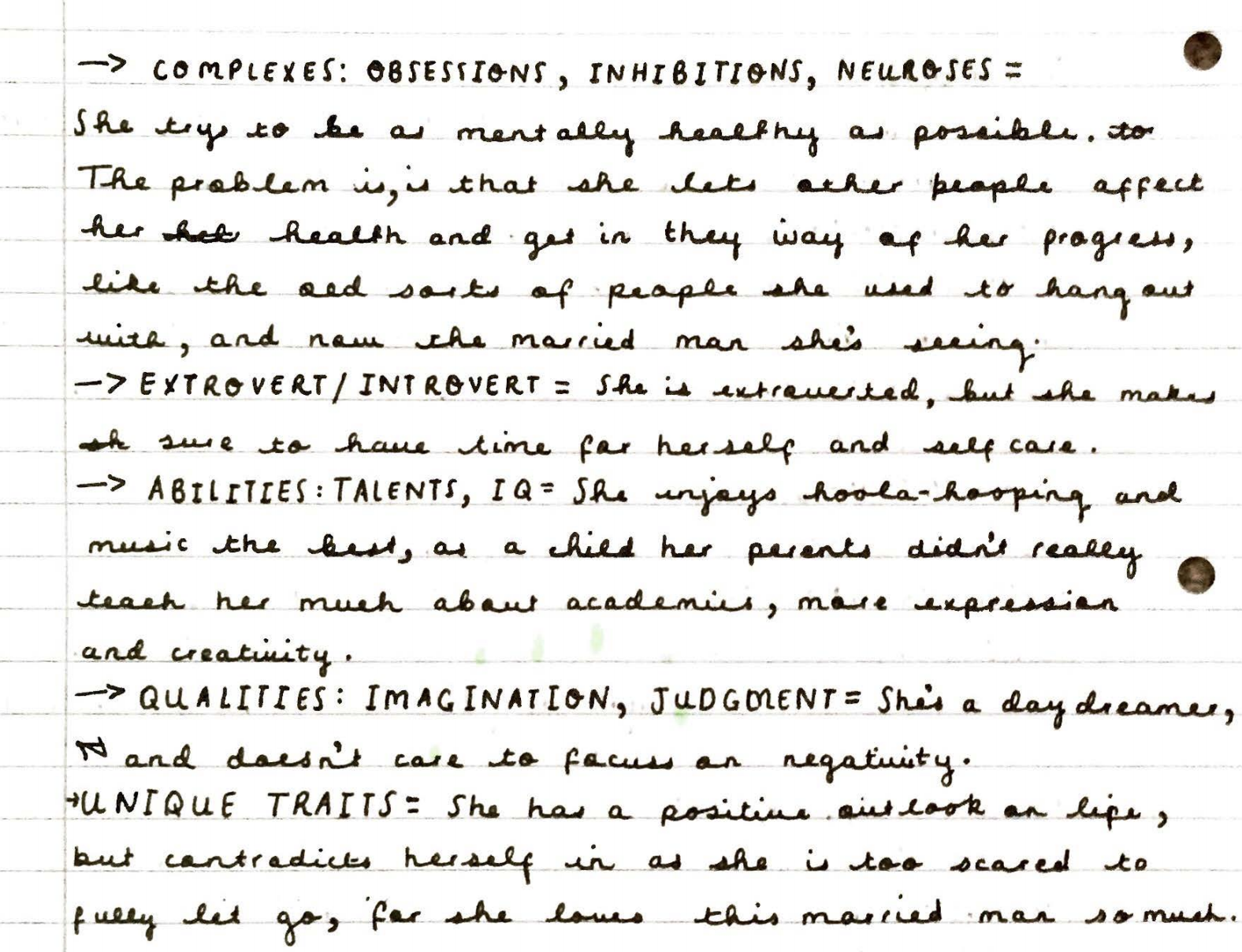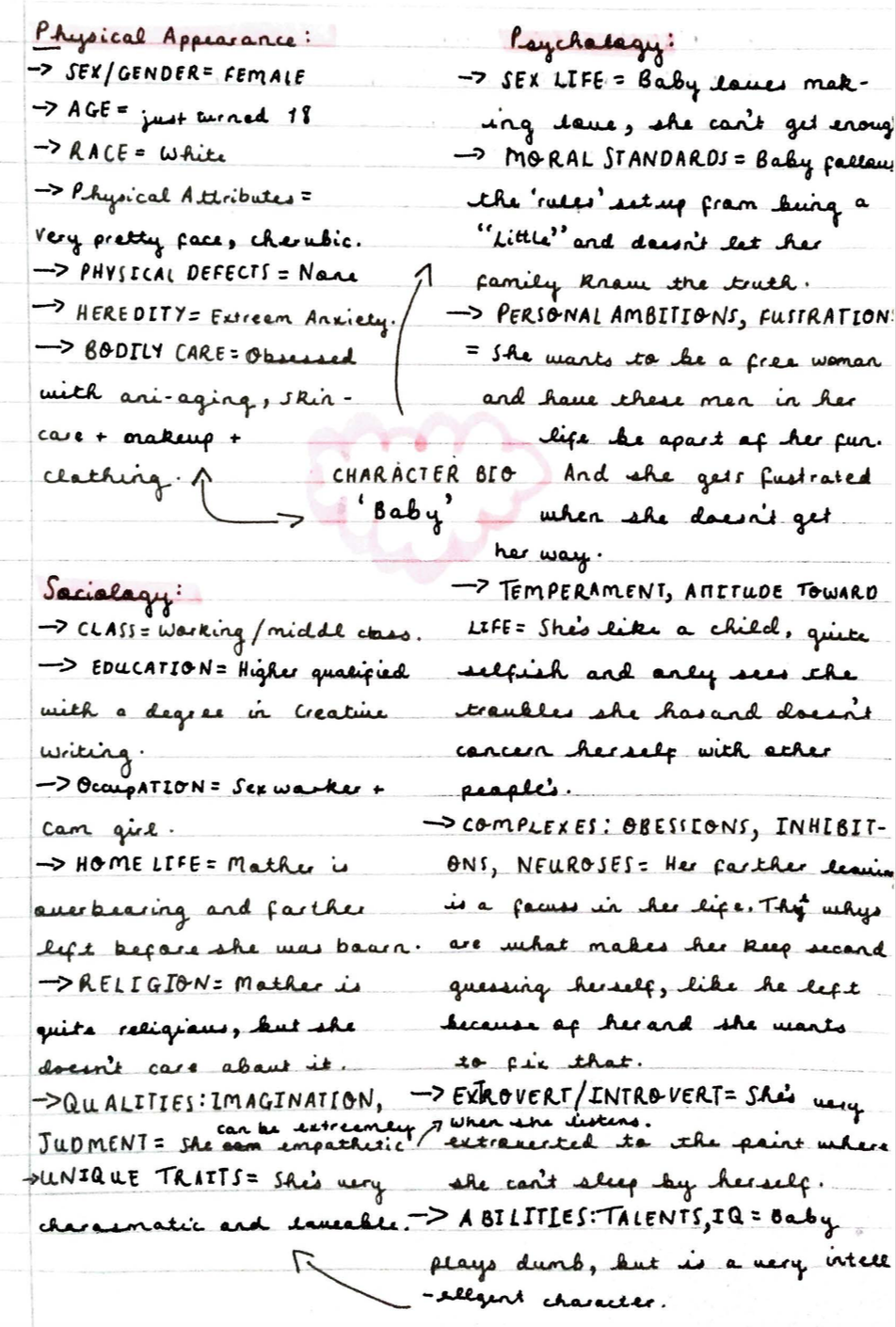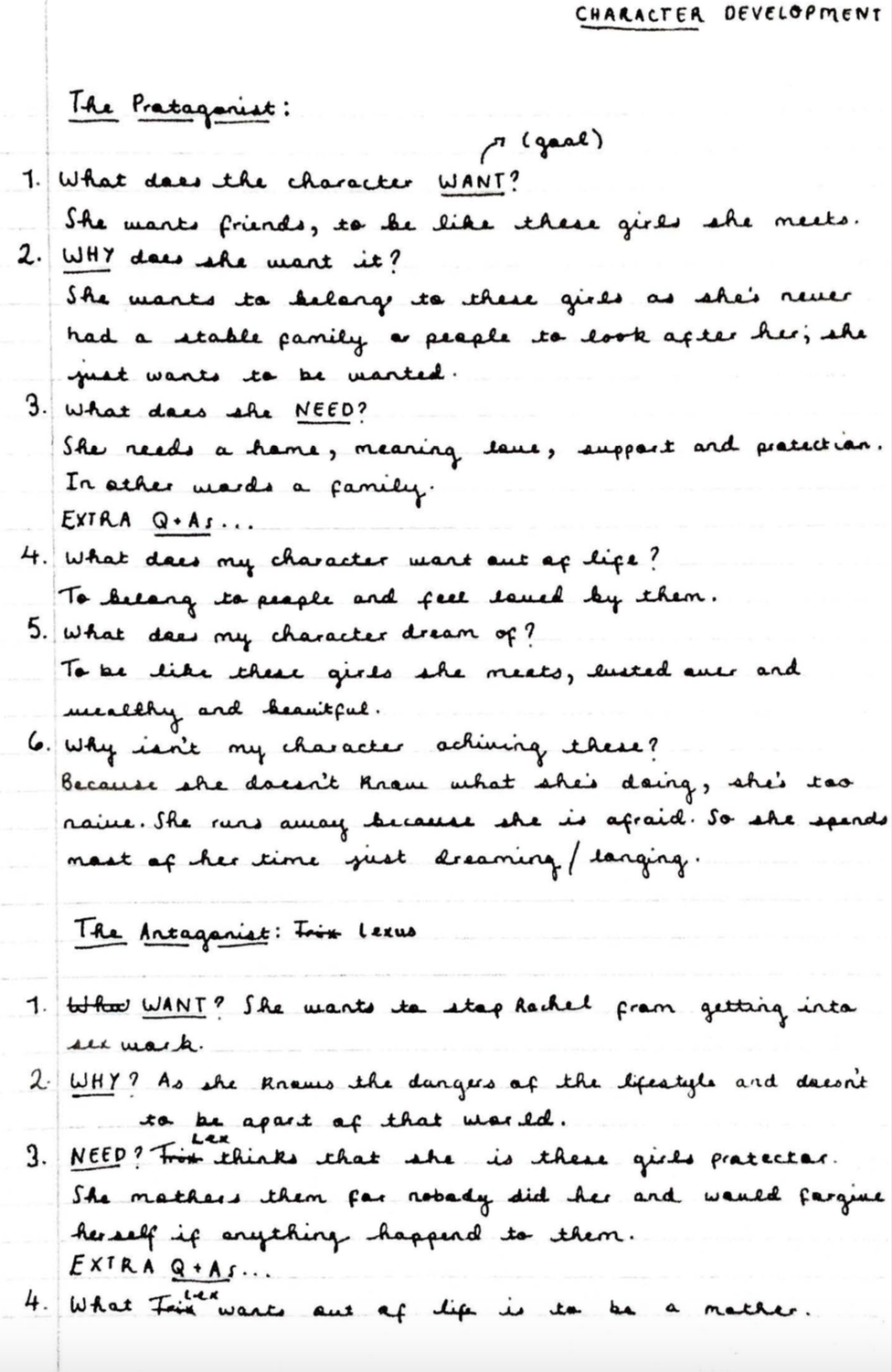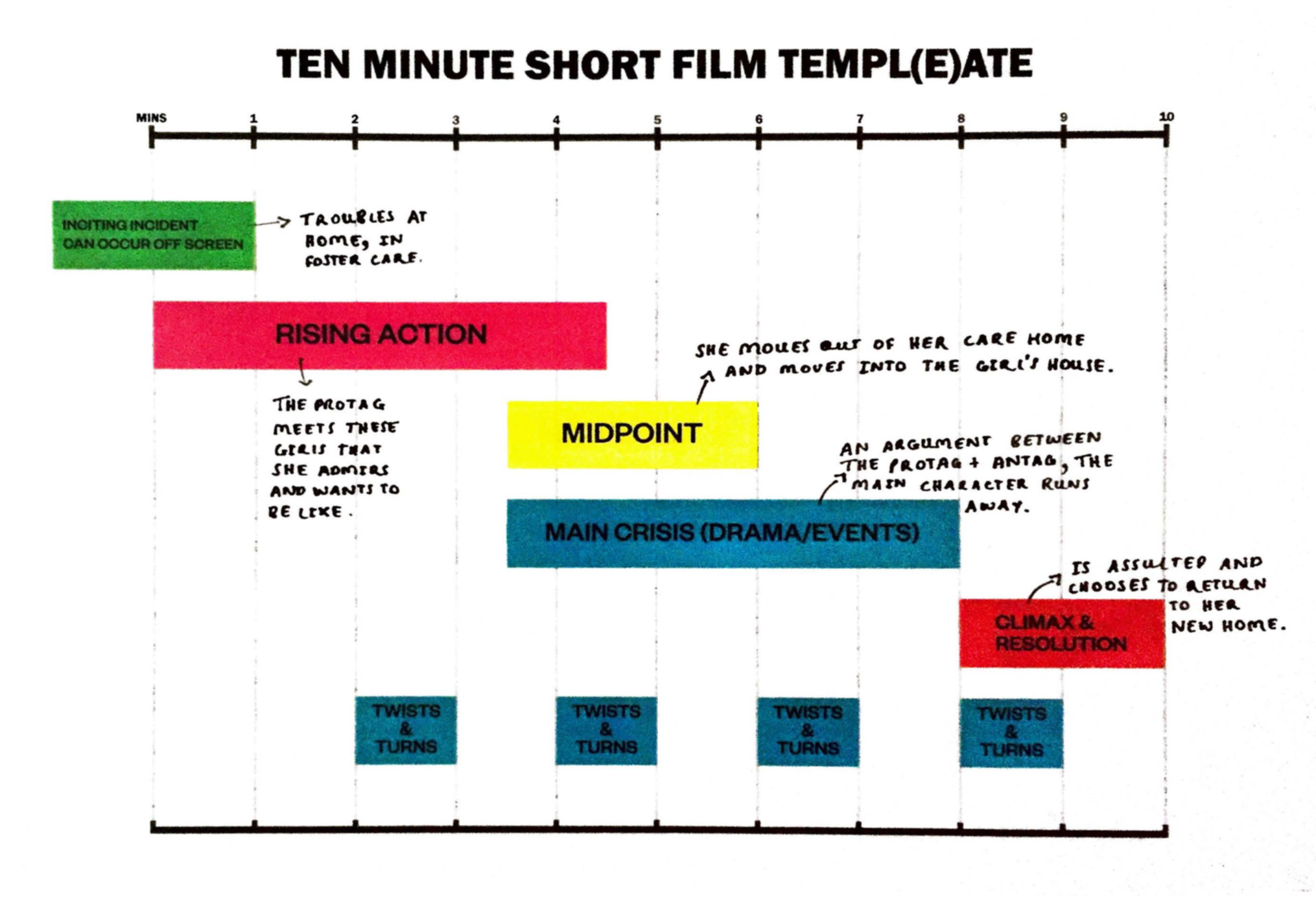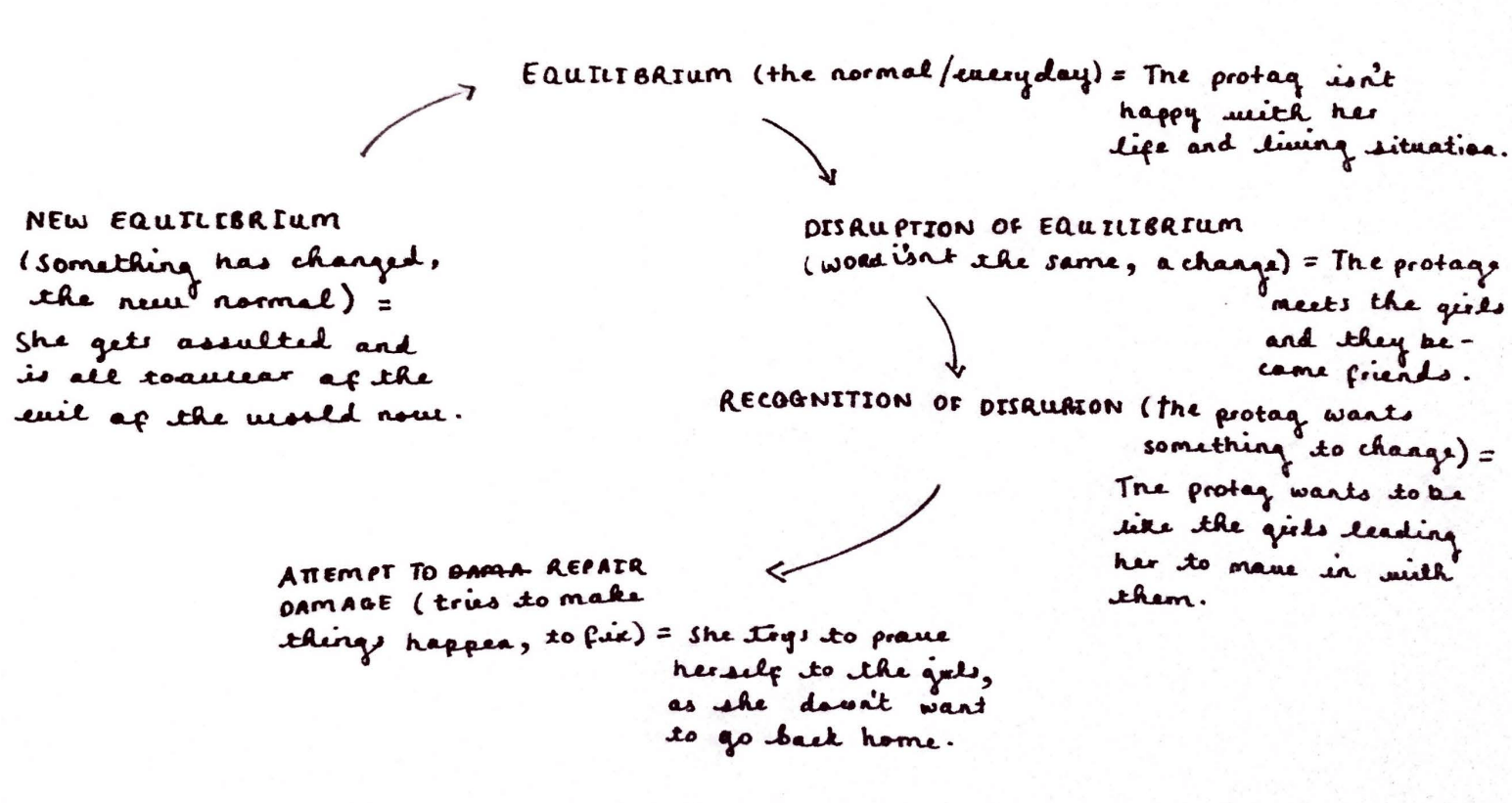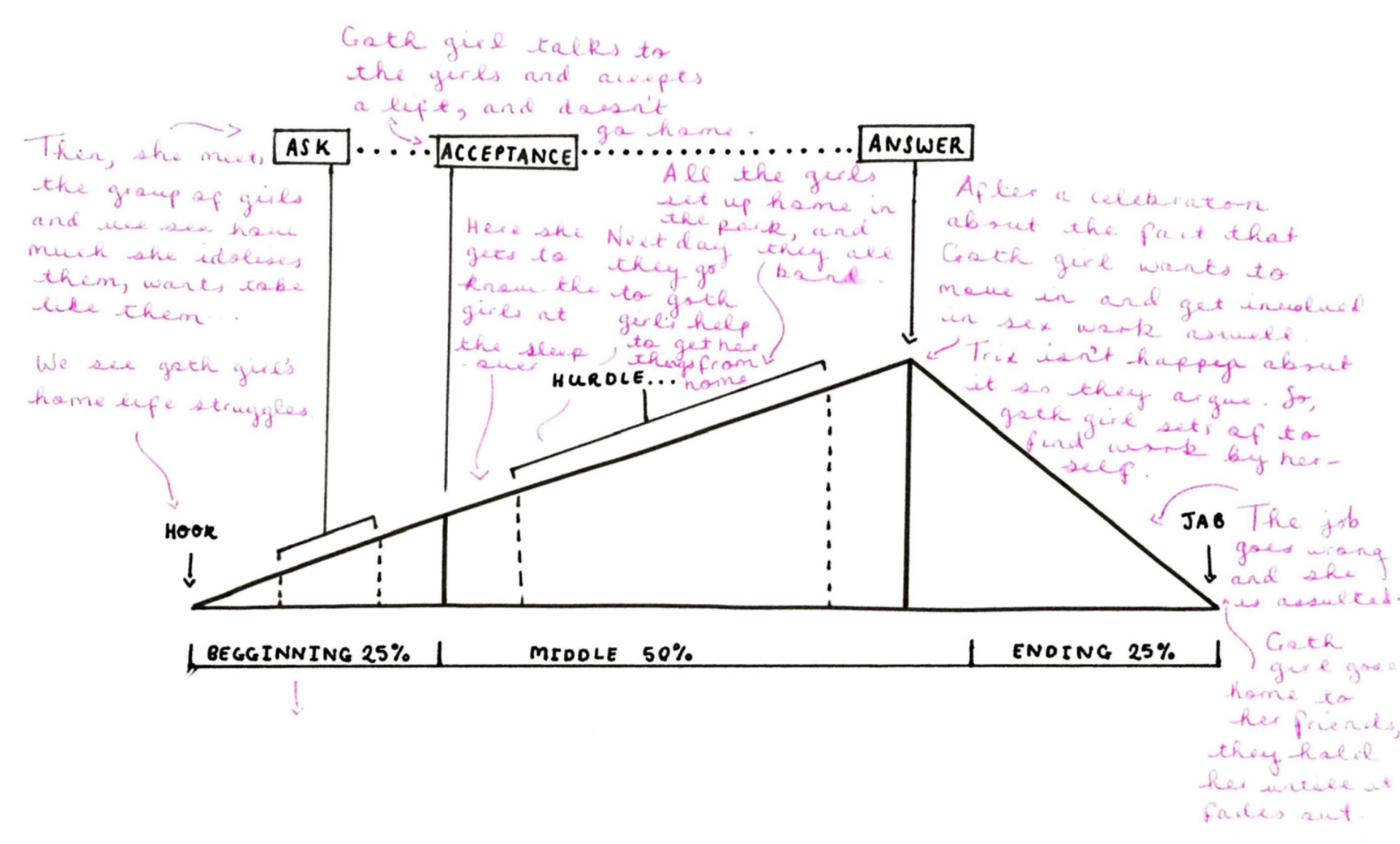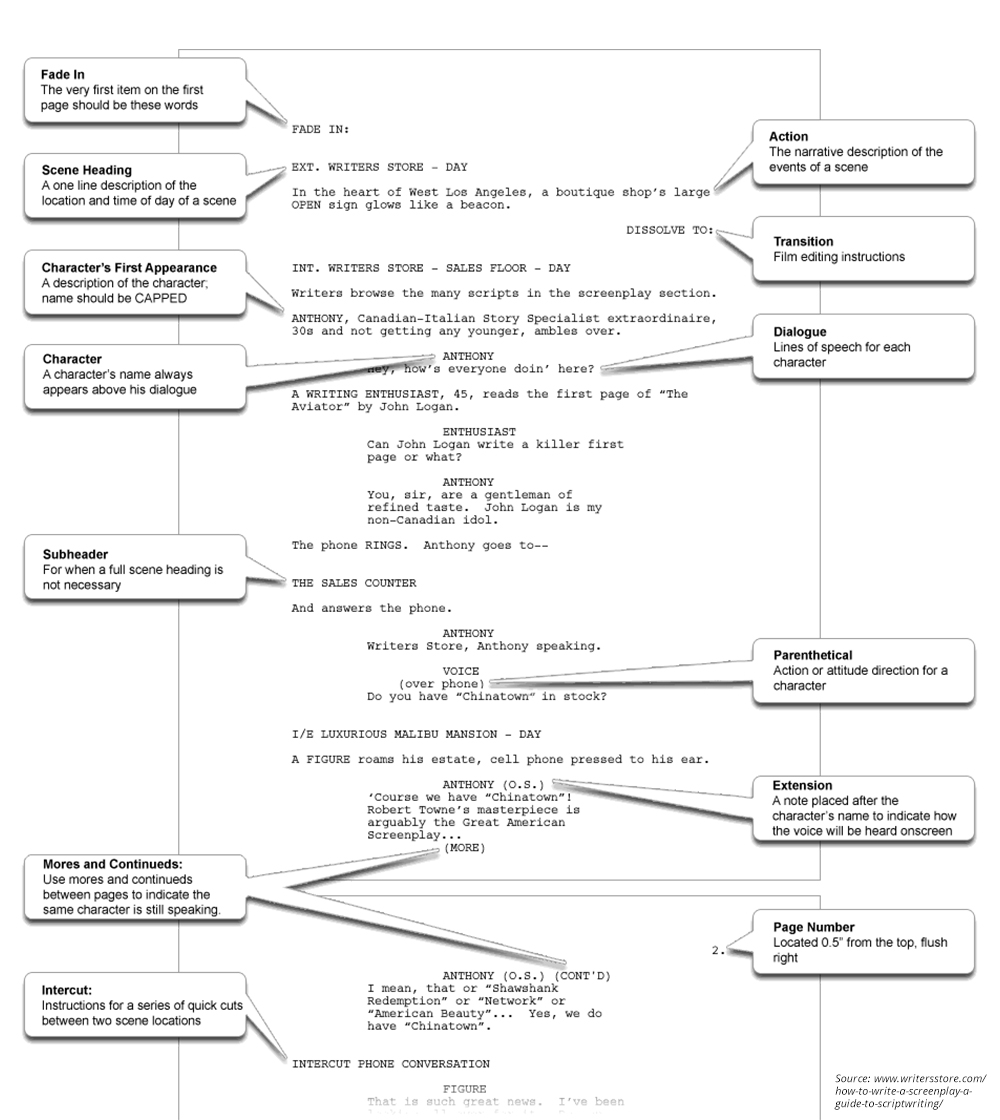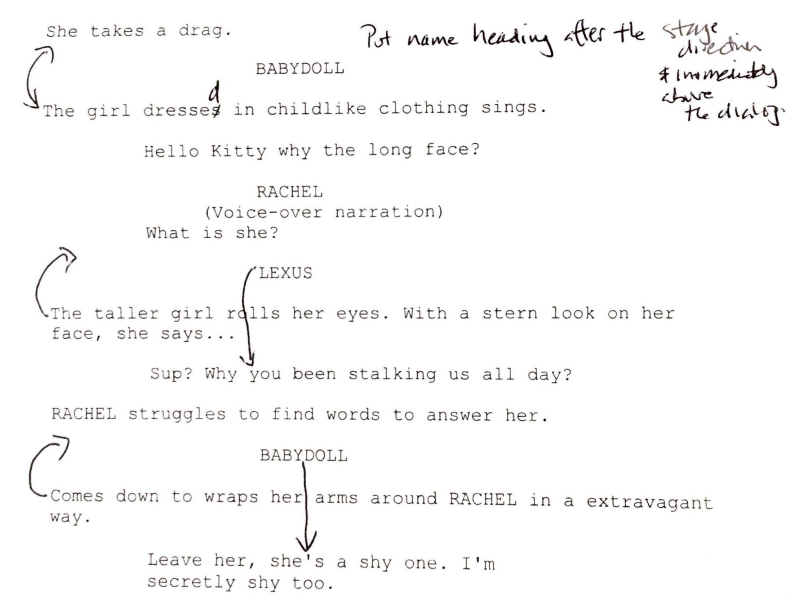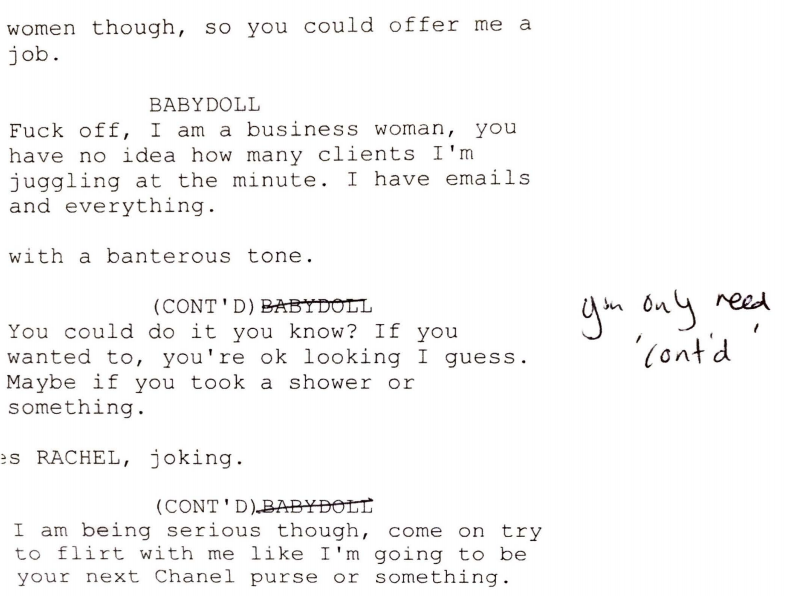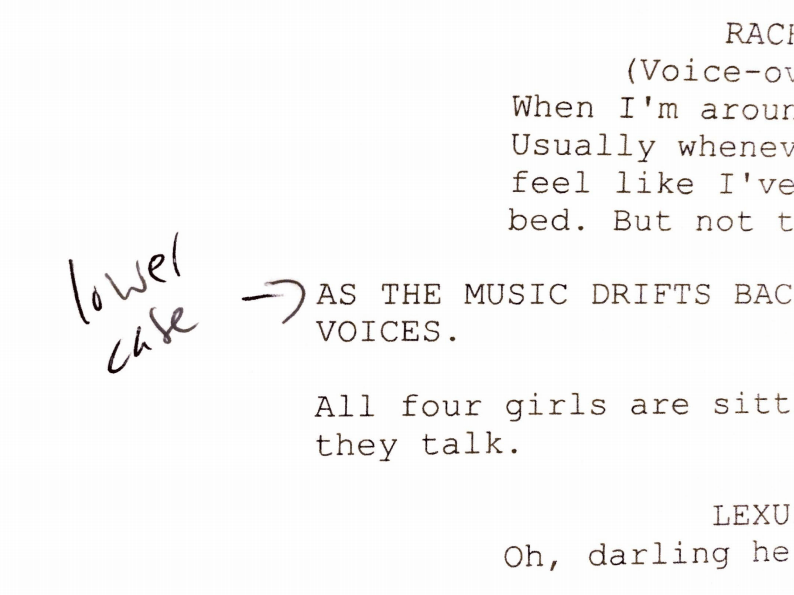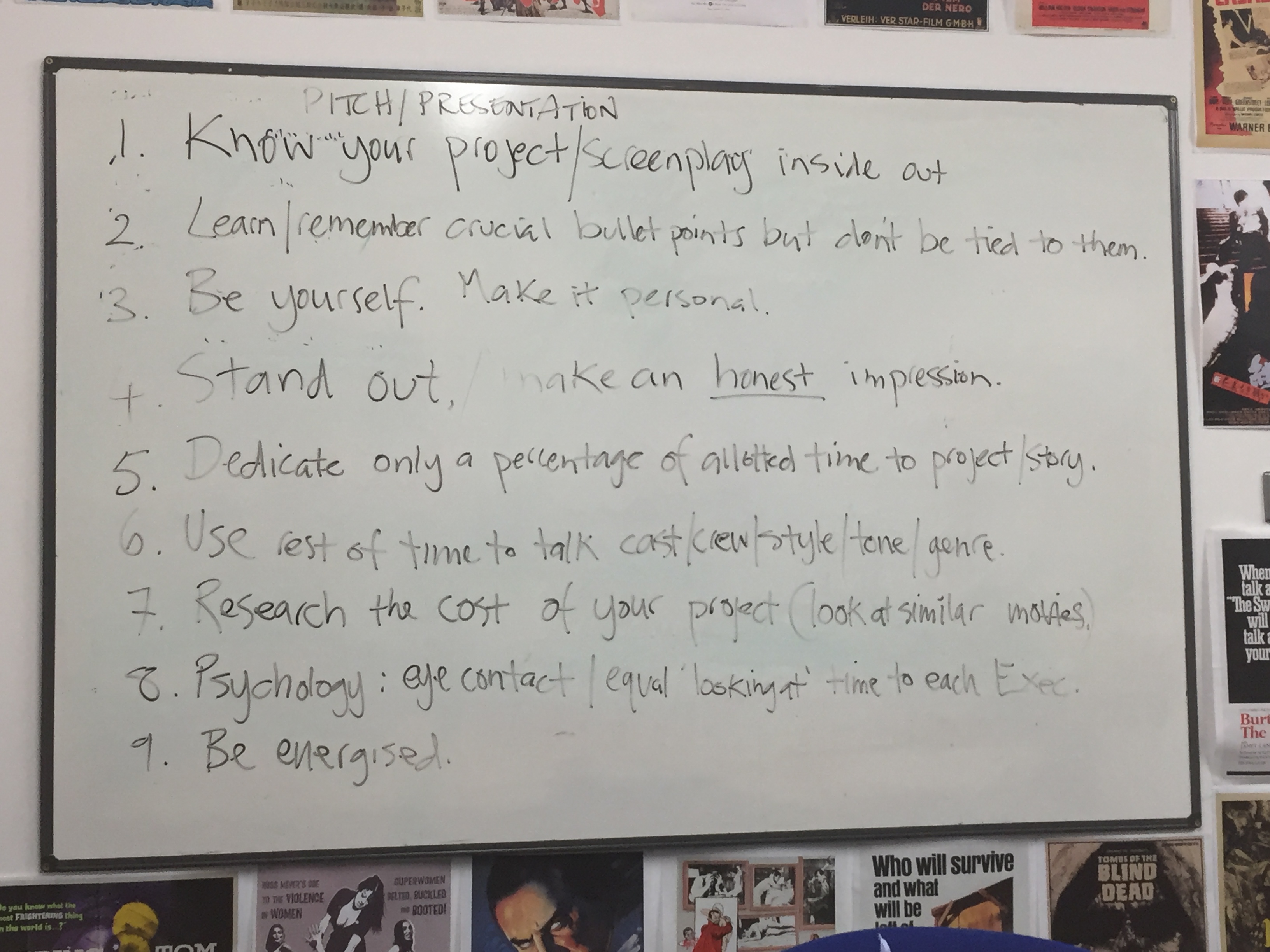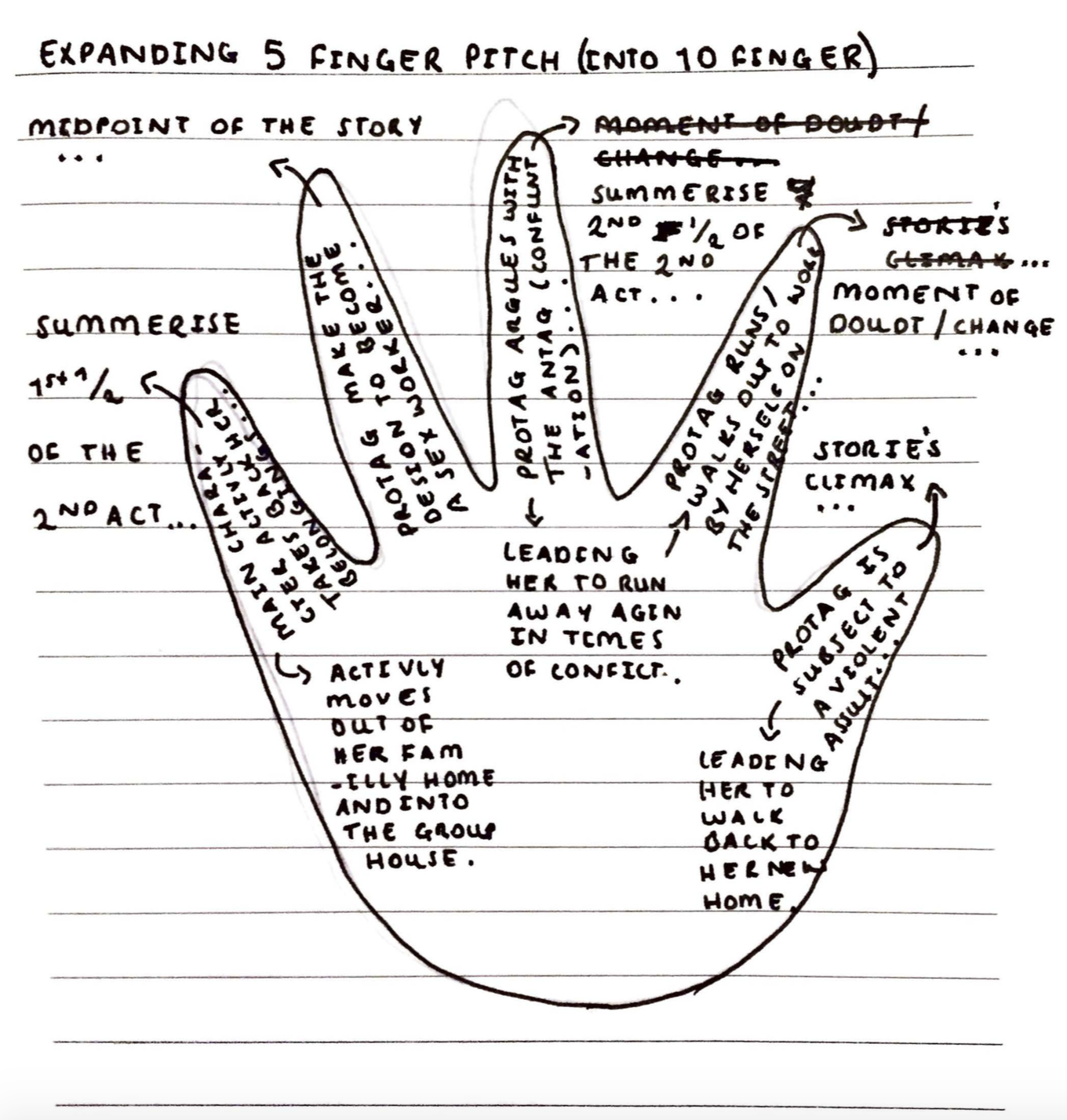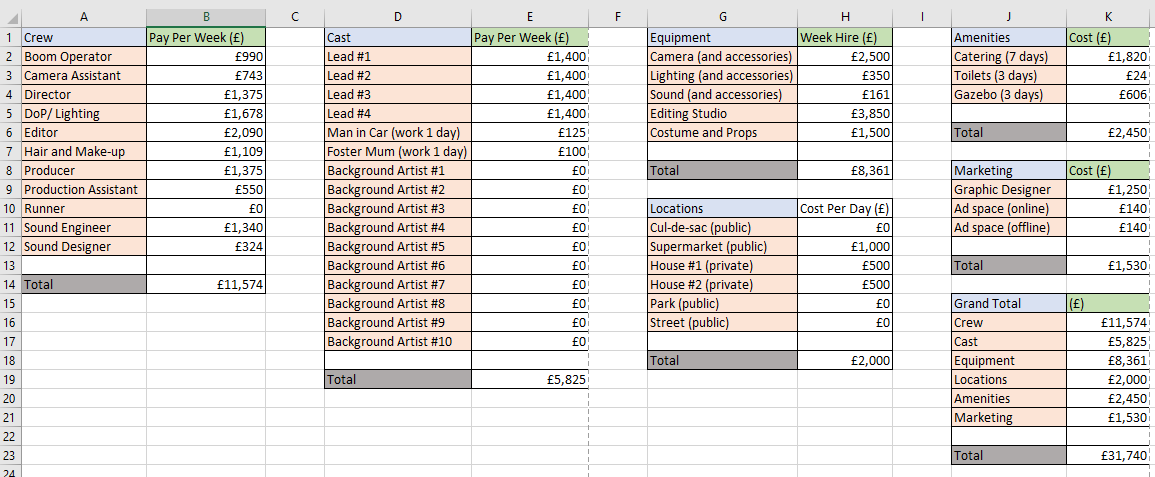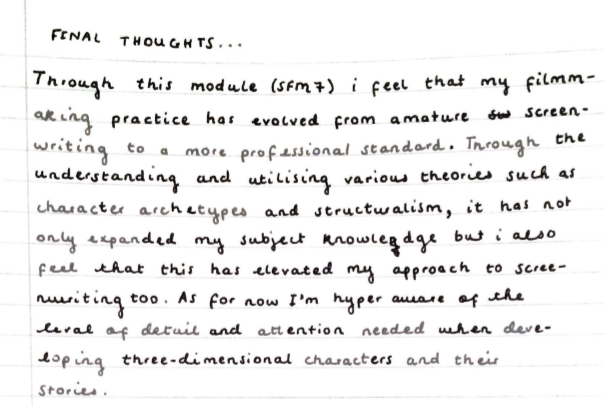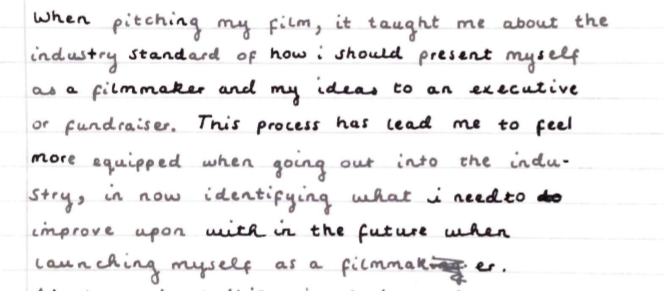Module Introduction
The main focus of this module is to prepare me for my future career and the next steps to take for me as a filmmaker after finishing this course. A research-based module into the possible options for me as a “want to be” writer/director in the contemporary filmmaking industry. To do this, I will be undertaking a professional development plan to support the tradition from education to employment. To also figure out a refined strategy to cultivate an audience, networking within industry placement/mentorship that correlates with my progression plan. To also produce a professional standard, digital portfolio or website to support my transition into a career path.
To start the refective process, I will be identifying three personal goals for this module that I feel would reflect my current vision of success…
- My first, main goal is to work with an acclaimed mentor, whom I look up to. Networking to not only learn from them for creative pursuits but also help me to understand how to enter a contemporary writing landscape, either that be within theatre or screenwriting.
- The second goal is for me to create a plan that is realistic for me to pursue within the next 3-5 years, help me feel confidant enough to move out of my home town and to place myself as a professional into a competitive industry, whilst remaining financially stable.
- Finally, my third goal is to use this time wisely and polish-up/finish my website/digital portfolio. Adjusting it to focus particularly for me as an inspiring writer. Also to make it look more professional from a student filmmaker to a graduate and specialising as a writer ready to work professionally within the industry.
Just as important as the goals, it is important to identify how I might find evidence or measure my success in meeting them, and my engagement with the module. Therefore, I will be making weekly entries evidencing my progress and reflecting upon my development and at the end of this module I will be reflecting upon my three goals and whether I have achieved them or not, and why.
Design Thinking
Within this session, we were taught to implement useful tools when making our business plan. One teaching which we were introduced to, was to consider identifying why when planning my career and to do this effectively we were also introduced to a tool called ‘Design Thinking’. This way of thinking refers to a ‘cognitive, strategic and practical processes by which design concepts (proposals for new products, buildings, machines, etc.) are developed’. However, this way of thinking can be and often is, applied within the making of more creative projects too, by ‘problem-solving offers the potential to all you to identify solutions that you may not be aware of at this time’. The process of design thinking is to approach a problem that involves dissecting it and then generating various ideas, then executing experiments/prototypes to test the said ideas. Then once those tests are complete, the design thinking allows you to then test and test again until it leads you to the best solution possible. Design Thinking looks like these steps below:
- EMPATHISE
- DEFINE
- IDEATE
- PROTOTYPE
- TEST
- IMPLEMENT
One of the key elements that make this tool work is how reflective you have to be when implementing it. To explain why professionals need a “why” when starting a project, Simon Sinek states “People don’t buy what you do, they buy WHY you do it”. Therefore when applying this thought process to my practice as a class, we were tasked with answering the following questions of ourselves…
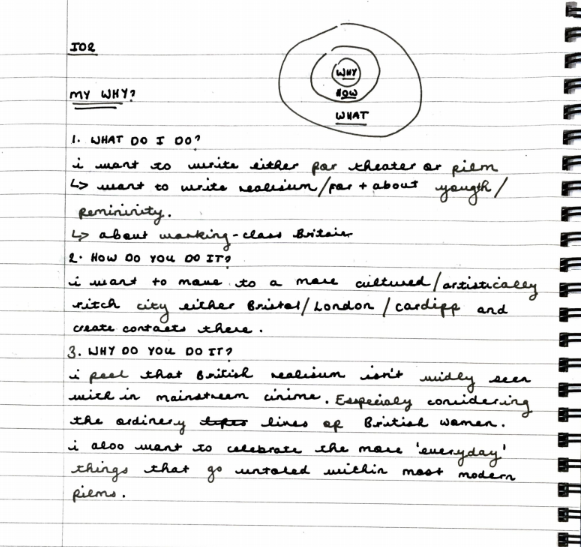
Gibbs’ Reflective Cycle: As another exercise, we were tasked to apply this technique onto an unfavourable situation we encountered with other individuals and how we could have handled it differently if we had applied this method of thinking.

‘It is a ‘cycle’ because the action you take in the final stage will feedback into the first stage, beginning the process again’. Now with this new method of thinking, hopefully within the future, it will help resolve instances in a more progressive manner and can be used as a guide for analyzing a critical incident or for general reflection on experiences. When participating in this exercise, it helped to think about incidences more in-depth and to remember that others have their own perspectives and reasoning why they do what they do. In the future, I think that when occurrences like this happen again, either that be inconveniences or disagreements, it is important to reflect on what could be done better and how. Especially within the workplace and other professional environments.
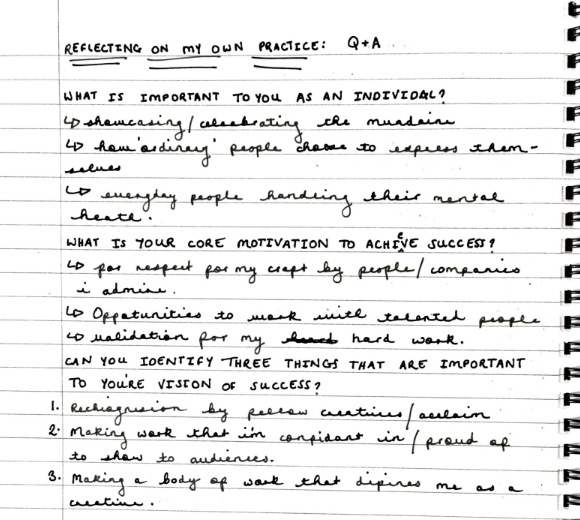
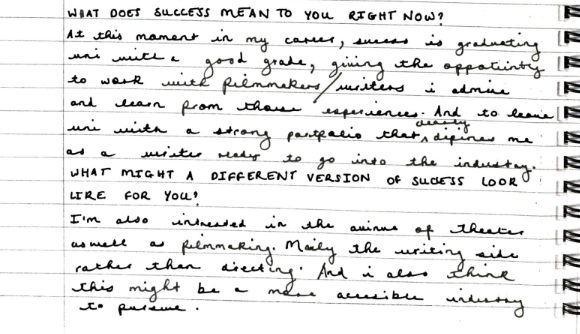
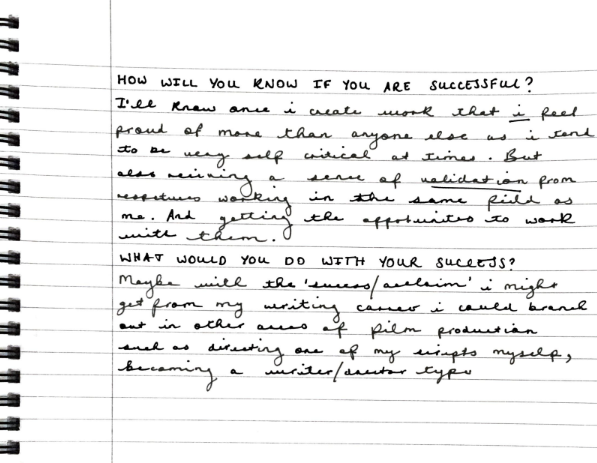
Using these questions to ask myself as a creative, is something that, admittedly, I should have done before. When asking myself these questions I knew I would of thought about the answers before, but never gave myself the chance to put them into words. They were just these vague ideas I had hopes for within my future. But in giving myself the chance to think about my individual ideas of ‘success’ with more detail, it helped me to visualise what I want to do. Thinking about my whys, in turn, make it clearer for me to plan how, when and what the next steps are in achieving this idea of success. And this is so useful when figuring out a plan for my career as a writer and what I must do next.
Approaching My Career Development with Design Thinking
Some questions that you should ask at this stage:
- Who will be reading this?
- Where and when will they be reading it?
- Why will they be reading it?
- What do they want to get from it?
…If you do not reach your reader, what you say and how you say it will not matter in the least.” He continues to use the Design Thinking stages and applies it to the writing process. Such as solving ‘problems’ to solve when faced with the subject matter and also the different methods to use when approaching writing a first draft such as, free-writing, mind-mapping, and outlining. When looking through this article I agree with his stance that the use of Design Thinking is to solve other types of problems, being “the important thing is to find an ideation method that works well for you. Get as many ideas as possible recorded before you begin picking and choosing the best for the text you are writing. Writing can benefit from other aspects of a Desing Thinking stage, such as testing your work, either that be out loud and to others and remembering that it’s NOT a linear process, the key to Design Thinking, as stated in the article. “The most important aspect of Design Thinking is that it is not just a set of steps to complete once. At every point, but most especially when you get to the Test stage, revisit the others…Each draft will get you closer to a solution to the problem you defined at the second stage. When reading this article, although I will be focussing mainly on my career path when applying the design thinking process. It is intriguing for me to see design thinking within my fields of interest, and how it is incorporated into creative work such as writing too. If as a writer you incorporated each of these stages of Design thinking as you wrote, the writing you produce will be much better designed than that of the other works that don’t do so.
In my personal view, most movies are taken based on the director/writer’s “deep attachment” to the story. However, the audience may not be able to see the interrelation between the actual film and the story. This could be paramount to the retrieval of the film and the objective, ie, is it a good film or a bad film. To take away from this, regardless of the format of the art, it is the audience that live vicariously through it. Therefore, it is the creator’s goal to fulfil the desires of the said audience, rather than their own.
Typical traits of this personality type, are that they tend to be ‘natural born leaders’, that are good at drawing crowds together to achieve a common goal. Showing popular figures that have the same personality type as Steve Jobs, Margaret Thatcher and Gordon Ramsey. The majority of people with this personality type tend to be more ‘business-minded’, with the traits of being the ‘ruthlessly rational’ making up only 3% of the population. Based on how my personality type correlates with the industry I want to go into; writing, I am not sure how a more ‘leadership’ role will fit with this environment. In terms of the hierarchy of film production, the screenwriter is not in control as the producer or director and they tend to work alone. However, I feel the traits of the Commander personality type such as being strong-willed/efficient will help me when working alone to self motivate. When working alone with such a personal practice as writing it might be better to do so, mainly due to weaknesses of the commander personality traits, as people with this personality type tend to be headstrong when it comes to their ideas and intolerant of others that they feel are more ‘unskilled’. But, if I were to work with other writers for one project in a team as a leader, then I would be best suited within this environment.
To continue to reflect deeper, the next task to do is to further ’empathise’ by identifying with the problems and issues when working to self-identify my goals within the industry by answering the various questions below for the next part of research…
Before going into more detail about what the instruct I’m choosing to go into looks like exactly with the help of some questions given to us…
What I know for sure is that I definitely want to start to go into the writing arena of film production rather than anything else. But I am open for that to include some theatre work too, and hopefully, with the future of my career, I could get some opportunities to direct one of the films or plays I write. But that is after all the experience I want to gather before anything like that happens. Mainly due to my feeling that at this moment I don’t feel confident enough in my skills as a well-rounded filmmaker to do direct a whole production at the moment. But more importantly, I am more drawn to the field of writing anyway, and this offers me to create contacts within the field in a more accessible way than the competitive role of the director.
- Do you want to:
- Work for a company with a regular salary
- Work freelance as a sole trader on a range of projects.
- Set up a company of your own.
- Pursue further study?
Out of all the possible opinions available to me after I leave university, I think I will have to say that working for a company with a regular salary looks the most attractive to me at the moment. As this could lead me to work in more assisting roles in this particular time in my career, and the opportunity to work under professionals within the industry sounds more exciting to me for this offers me the chance to learn even more about the industry, gaining more experience whilst staying financially stable.
- Identify a version of a successful you.
- What are the roles you’re doing?
- Who are you working for?
- What do you love about your role?
- How do you know you’re successful?
Looking at these questions I have to look in more detail, as to what my career will look like when I leave university. What I know at the moment is that the roles I want to pursue will look like more assisting/mentoring/apprenticeship roles. This is because I still think that there is a bit more to my craft and I need a more solid portfolio/CV before I try to pursue a professional writer’s job. I’ll want to work remotely for either an established writer that I admire the work of or within a production company near where I would be based.
What I love most about writing either that being for film or theatre is that when writing there are so many opportunities for me to express all aspects of myself through other characters. Leading me to think through all sorts of perspectives. What I have noticed most about myself recently is that I have a love of words and how people use them in their ordinary lives and this realism within cinema particularly is rarely depicted, either that being how people stumble over their words or repeat themselves, they don’t tend to be their most eloquent. Rather in films, people speak perfectly most of the time and unless used for stylistic purposes, I am not the biggest fan of seeing this within film or theatre as I find it harder to belive characters who don’t talk like anyone I’ve ever met.
And, finally, I’ll know I’m successful when I can learn from the best and they help me develop/improve upon my work and my contacts at the same time as being financially stable living in Bristol. Leading me onto other steps within my chosen protection.
Map paths for how you got to work in that role…
Knowing Your Industry: Writing
Below are some various pathways for me post-graduation:
- Education: Find a masters https://www.findamasters.com/about/about-findamasters.aspx Post Graduate Search: https://www.postgraduatesearch.com/
- Employed: In a film making related role by a company.
- Self Employed: Working as a sole trader selling specific service
- Limited Company: Working as the director of a limited company, also providing a creative service:
For me personally, I think that employment by a production company will be best for me after university. This is due to me not feeling that I am experienced enough within the industry to go freelance or being an entrepreneur to a limited company. However. I do feel confident within my work to want to go into the industry right away. To learn from experience. Therefore, I feel that working for a company with a salary will help me to gain said experience while being financially stable, living in a fairly expensive city to live in, Bristol.
Writing for film, more indie work…
Options available to me within Bristol/Cardiff area…
- Work as an assistant or shadowing writers within film production companies, based in either the Bristol or Cardiff area. Such as https://omni-productions.co.uk/. This is a company, now based in the beautiful Underfall Yard on the Bristol Marina. Founded in 2002, Omni Productions have gone on to win numerous awards for its hard-hitting dramas and brand campaign films. Although the amount the many production companies based in the area, this one in particular for the heavy reliance on narrative would be my first choice to want to work with. However, I think I think that most production companies have a reliance on working to produce content for brands as a priority for funding. Whereas, for me, I don’t see myself wanting to work within advertisement/branding etc. At this stage within my career, I want to focus on creative writing without the restrictions of working with advertising for corporate clients.
Or writing for theatre…
- Working as an assistant or shadowing writers within theatre production companies, based in either the Bristol or Cardiff area. Such as https://lightboxtheatre.co.uk/ or https://www.steppingouttheatre.co.uk/. The Stepping Out theatre company formed in 1997, based in Bristol, and with seventy-four productions to its credit. As stated on its site “Stepping Out Theatre is the country’s leading mental health theatre group. It has produced a wide range of work on mental health themes and is open to people who have used mental health services and their allies.” This production company interests me out of the many within the Bristol/Cardiff area due to its focuses on young people and their mental health. A lot of theatre companies do a lot of different work but lack the main focus unlike this one and this niche is relevant to the work I make. LightBox theatre company is another intriguing one for me to work with. As stated within their about page the company works to try to ‘discover and bring to life stories that are untold or overlooked.’ This priority of illuminating realistic stories that are often neglected within the cinematic landscape is also a priority to my own practice. As I often write stories that try to celebrate the mundane. They also go on to say “We love connecting with real people’s lives and stories and reaching new audiences. We also believe that theatre has the power to create a connection and give voice to people who feel unheard, which in turn reduces isolation and disadvantage.” For this reason of the theatre company to have priorities so close to my own as a writer, I feel that this would be the first choice when wanting to work within the area.
Introduction to Mentoring, Planning for Mentoring
One of the main elements of this module is a mentoring scheme. Mentoring is an opportunity for me to network with a specific writer I admire or organisation of writers that I feel that can offer me an insight into either theatre or filmmaking industry and then reflecting on my mentor experience and documenting it on my blog. One of the main goals of mine, going into the process at the end of this mentoring experience, I hope that I might develop a professional relationship with my chosen mentor that may extend beyond the mentoring. Of course, this is not guaranteed so I will be continuous of making the most of the time given to me. (Rural Media can fund up to 10 hours of mentor contact at agreed rates.)
The mentoring might look like some of the examples below…
- Five one-hour conversations with your selected mentor. (They may claim time to prepare for the conversation)
- Two extended visits supported by a number of email conversations.
- Online email conversations supported by several Skype conversations.
- A short placement working a few hours a week.
Selecting My Mentor:
When selecting my mentor, it is important to have more than one opinion as a possible mentor for me as no one is guaranteed as we are dealing with busy professionals working within a competitive industry. All the possible mentors I have chosen below correlate with the roles/post-uni career path I am working on planning to go into. Either that be working as a writer within theatre or film. The skills/knowledge I hope to gain from this mentoring experience is one that also correlates with the skill set needed for me within the realm of writing. Either that being having the confidence to offer my work up for industry professionals and the opportunity to take their criticism within a professional manner. Then taking their critique and applying it to my work. Or possibly gaining their contacts, to other writers, directors or producers that make the work that I am interested in.
My first choice was Alice Birch. A British playwright is best known for the acclaimed playbook, BLANK and the winner of BAFTA Award for Outstanding Debut by a British Writer for her work writing the screenplay for Lady Macbeth (2016). I chose Birch due to how she depicts British realism mixed with such tragedy and humour is something that influences me and what I try to capture within my work too. However, after a couple of weeks of trying to contact Birch through her agent, she is, unfortunately, taking maternity leave at the moment. But her agent did say that I could contact them in the future for a mentorship opportunity, so that could be a possibility within the future.
Another choice for a mentor was Britsh film writer/director, Clio Barnard. She won widespread critical acclaim and multiple awards for her debut, The Arbor, an experimental documentary and feature The Selfish Giant (2013). This feature that Barnard wrote and directed is one of my favourite Britsh films to come of the 2010s thus far, mainly due to the amount of realism it portrays, either that being from the accents/slang used to the subject matter at hand, the manipulation of child labour within the poverty-stricken areas of Britain. Barnard is a mentor I’ll hope to have, not only due to the subject matters within her film but also her background of writing and directing her own films which is a possible avenue I hope to go down in terms of my career in the future. So having her talk about how she ‘craked’ the industry will be of importance to me. Especially due to her background with more indie productions with subject matters of more ‘untold’ stories within the cinematic landscape, so in hearing how she got the production funded and her contacts etc would be very relevant to help my future productions too.
Jimmy Dean is an award-winning director whose short films have screened at international film festivals. His latest short film V had its World Premieere at the BFI London Film Festival and was funded through Film London’s London Calling scheme. Dean is more of a less experienced filmmaker, due to him just graduating from university. However, his films have received wide acclaim in the last year or so. I came to know his work from seeing his short horror V on ‘short of the week’, a site showcasing the best short films being made in recent times, produced by Sundance. I loved it due to the naturalistic Britsh, working-class dialect and applying that style of realism to a supernatural setting is something I have never seen before and after watching this would want to try out other genres other than drama in my writing now too. I am not sure if I will approach this mentorship alike to the other is offered the chance, for the reason that I don’t think that Dean is as experienced enough in the professional work to learn so much from him. However, I think there are other things to be learned from him such as how to successfully produce a short film and how to go into the festival circuit successfully too. I could also show him some of my work and gain his opinion due to the writing style of his films being very similar, or put me in contact with his writers as networking also.
Kate Cheeseman is a BAFTA-winning director working in both film and television. She has just finished as lead director on series 9 of Call the Midwife and before that directed the finale of season 8. She has also recently directed her fifth short film and is developing several feature film projects one of which has an interest in the States for production next year. Keith my tutor is currently trying to put me in contact with this writer as a mentor. He also bought to her work to my attention, although Call The Midwife isn’t a series I’ve seen or typically been interested in, her previous works of Pig Hearted Boy adaptation and What Happened To Evie television series, that works handle topics of youth culture within Britain is something that I gravitate towards. So her opinions or critiques of my work would be very beneficial to my practice.
Mentor Learning and Goal Setting:
Contacting My Mentors:
Initially, when it came to establishing contact with my possible mentors it was said to be done professionally through Rural Media. For the reason, as they’re a media charity, they are able to gain access to mentors who might not respond to an individual request. However, after some trials and tribulations Keith, an established writer within the British television network might be able to put me in contact with some other British writers.
Branding myself and developing my online presence…
Website Development
When making websites for creatives it is important to consider what the role of my website is. For a creative, a website is considered to be their shopfront, an online portfolio and for the most part, is a more refined and cultivated version of oneself as a professional, that clearly defines them and their identity their creative voice. At the moment I haven’t updated my site in a while, therefore there are some things I need to include.
Firstly, I need to update my about page, unlike my current status of being generally an overall filmmaker, now I am specialising in writing. I also will need to make my “why” more clear for the audience or possible employers, to get who I am and my voice as a writer. Then, I need to update my contact information, I am not to be located/based in Hereford in the future and create a separate work email, not to include my university email anymore. I will also consider making a blog to link on my site, due to both keep up with personal writing at the same time as trying to gain an online presence. I think that some would be interested within the behind scenes of writing for film or theatre, highlighting the journey from university into the professional world. This would also help to add a more personal element to my site. An important element I also need to add to my site is e-commerce. Mainly for the purpose that if I needed to send scripts to clients, then I need an online proving patrol/where to pay/sales platform. Lastly, I need to update the overall website design. I want it to be slicker/professional looking rather than the cluttered mess it is currently. What I like within a site for creatives, is a lot of white space with the occasional dark small text, letting the work showcased speak for itself alike to what Chloe Sheppard does on her site, below. Although Sheppard is primarily a photographer, I feel that it is easier to design a site for more visual arts rather than writing.

For this reason, I’ll need to research specifically websites for screenwriters and how their design showcases their work in particular. Most writers I admire, don’t have a direct website more just links to their page on their agent’s site, with a downloadable CV and a list of works they’re done/currently working on alike to the example below…
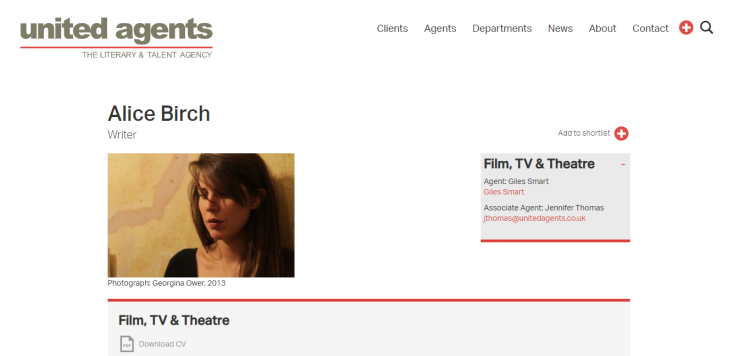
However, due to my not having an agency at this time of my career, I have looked further into other writers that only have a website as a platform to network with employers. I have not managed to find many sites for writers, so I will message Keith to see if he had any advice when it came to websites for writers specifically. He states that it is never a good idea to publish entire scripts online incase of plagiarism (especially if those scripts haven’t been made yet) etc, however, it is common use to publish excerpts or passages. Therefore, when it comes to my site I will add another page just for passages of my scripts that are already in the making or postscripts that are password protected (as I’ve seen this done with other writers sites) and I will give chosen people the access to them either that be employers or other filmmakers. As can be seen below, in the final outcome I just screengrabed a passage of some of my best scripts to add to my site.
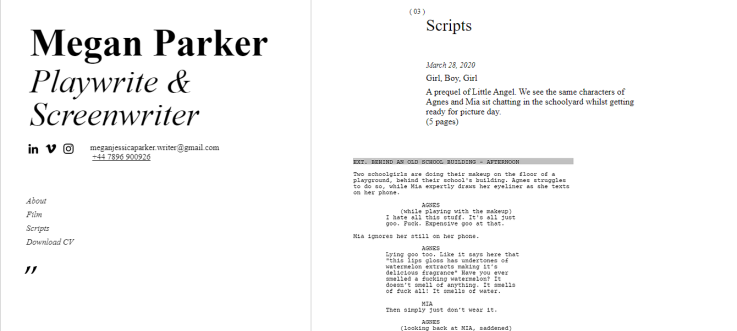
The main things to include/update on my site are:
- Update information about myself/my practice, about page etc.
- Update contact information.
- Add in my recent work.
- Add my CV/education.
- Link social media accounts and/or blog posts.
- Make an online proofing portal/e-commerce.
Ever since I made my website, I have never thought to do an audit, updating or reusing it further. To help me perform one for the first time, I used the article ‘How to Conduct a Site Audit’ Written by Andrew Ansley, containing instructions on how to do so. Stated in the article “No matter how well optimized your website is, there’s still likely to be some issues that need to be addressed.” My site is currently unpublished as there are projects I want to add to it, but they aren’t finished yet and due to me not being settled in a permanent location it would be hard to state clearly where I’m based. However, when the time comes that I do in fact have a fully functioning site then I’ll make an effort to perform audits regularly (every 6 months or so). When I do so it is advised within the article that I use an audit tool. There are many different ones to be used online such as Ahrefs has its own version, SEM Rush has their own auditor, and then some more niche-specific tools like Screaming Frog and Sitebulb exist as well that exclusively provide audit services too. Unfortunately, all these audit tools are paid but are so because of their reputation for being thorough, accurate, easy-to-use, and comprehensive. “It’s important to keep in mind that the difference between a free site audit tool and a paid version is massive in terms of capability and reliability.”
These site audit tools allow you to:
- Scan your website for any technical problems
- Identify on-page and off-page SEO issues
- Check for broken files and internal or external links
- Find weak or duplicate content
- Assess page errors, page load speed issues, and pages blocked by robots.txt
- Generate a checklist of problems to fix
Most tools will create a digital report for you to check off online, along with basic instructions on how to fix the issues. Having a checklist of all technical, SEO, design, and content issues make it easy to keep track of what work needs to be done. This way, you will have an agenda for where to focus your SEO efforts and can be sure not to miss any important details.
But what wasn’t mentioned in the article is to perform audits on whether the sites are mobile-friendly or not. Wix, the website making software I’m currently using as I feel that I find it more user-friendly than most of the other competitors, has the option to design the mobile format as well due to wanting my site to be accessed via mobile devices as well as a desktop. For the reason of some traffic to my website might be from links I post on Instagram and for the most part Instagram users often using the platform are on their phone. Previous to this audit, I completely forgot about the mobile design there for all I will be talking upon within the audit I’ll be applying to my mobile site format as well.
However, I will be doing my best to performing a manual audit myself before I chose to publish my site. Therefore, what aspects of the audits I will be focussing on before I publish my site is the analysis of the site’s design and UX. Many SEO site audit tools will analyze your website’s design and overall user-friendliness (UX). Both of these are important when it comes to how users interact with your site, how user-friendly a site is, will not only help me to look more professional but also keep people staying longer on the page. Especially important when it comes to people needing to stay on the site to read my scripts or watch my films. Components such as site Navigation and Page Depth will indicate whether your site is easy to use and how easy it is for them to find information on your site. For instance, it’s recommended that the majority of your content be accessible within 3 clicks away from the Homepage.
Here is a screengrab of the Home/About page of the previous site I made a couple of years ago…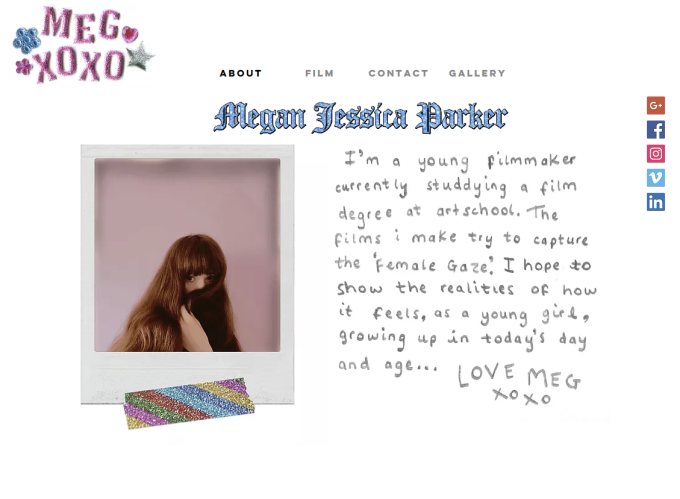
And here is now the site I made after all the improvements made to it…
And I also improved the mobile format too, something that I forgot to do when developing my older website, as can be seen below…
Above is the finished site after all the improvements I made, compared to my initial site. By far, this one feels more professional, a site of a writer. After taking inspiration from the other sites, by using a monochrome colour palette, letting the visual work I have to speak for itself, and by making the fonts slicker looking. After the audit, I worked on a new design making the site clearer to navigate, having particular pages for grouping work together for films I have made and other scripts. Also by making my contact information and name an anchor on the webpage so its always accessible to the site visited. Although the previous site showed more of myself as a brand/personality, I feel that it’s more important for there to be breath and more of the use of negative space to let the work show that personality for itself rather than the site trying to portray it. But to keep a sort of ‘quirk’ to the sites aesthetic, I included some of the text within it as my handwriting in the about section, making that bit have a more personal touch too. Other plans I have for this site is to, obviously keeping it up to date with my recent works/collaborations but in the next few weeks try to book in a photoshoot with a professional photographer to get some images of myself to put in the site’s about section.
Other good practices for SEO content that I can include:
- The content adheres to the overall page goal and purpose
- Content is concise and helpful to users
- Content has well-researched keywords that match search intent
- Content is well-organized and structured according to SEO best practices
- No spelling or grammar mistakes
- No “filler” content (i.e. all content serves a purpose)
- Content includes helpful bullet points, numbered lists, and pictures as needed
- Content is optimized for mobile (short paragraphs with white space)
- Include internal links to relevant pages and external links to reputable websites
- Content is unique and isn’t duplicated or plagiarized
To conclude, a regular site audit is an important responsibility when it comes to optimizing my website. Also by identifying all website issues as they come up, I can stay on top of my website maintenance before it becomes too much to manage. This way, I can tackle any problems, one issue at a time and be sure that my website is set up for SEO success and by not addressing some issues that could come up, could mean a plateau or even decrease in traffic, or a decrease in conversions. Either that being technical SEO issues, slow page speed, duplicate content, broken links, or anything else that could be preventing my website from getting all the traffic in its potential. By conducting a site audit is the first step in identifying any website issues that I may have.
Social Media
My approach to an online strategy when choosing platforms will depend heavily on the audience I’m trying to engage with. Before, going into this module I did have an idea of what my target audience is for work. Always in mind when writing is who is going to listen to this and the same goes for my social media. My films tend to be about and for young adults/teens/coming of age themes within my work, working-class dramas. Therefore when looking into the best social media platforms for my work, I’ll be socially focusing on Instagram as in terms of demographic with 500 million daily users, and such a large audience aged 18-29, it is a great platform for regularly connecting with a younger demographic.
- Social media platforms account for roughly 50% of all time spent online.
- 37% of the entire world’s population uses social media, that’s 2.8 billion people.
- And Instagram has around 800 million monthly and 500 million daily active users.
From these stats, it is clear that social media provides us with an opportunity to reach an extremely wide audience to discover my work. Therefore, I will have to work on how I approach my social media because right now my Instagram isn’t as focussed on filmmaking/writing as I like it to be, it’s more just for me socially. Although I think that this personal touch is important for me to keep within my socials, the main goal for them is to show the behind scenes look to the work I produce. Therefore, from now on the content I post will either have the theme of writing/film/art/ things I’m interested in general, to create a sense of a more cultivated representation of me for future employers/audience members to go to and understand me as a creator more. Because right now, it’s all just a mix between selfies and random days out etc.
As mentioned before, the works and marketing strategy of Chloe Sheppard is a career I admire. From her website to her Instagram profile. The content she posts are all consistent, either that being their soft, muted colour pallet or the subject matters of body positivity and acceptance. Though from her work into her grid profile, all that is there has a specific ‘look’ of vintage, nostalgic aesthetic. Just by looking through a few of her posts you see a clear reflection of who this person is, the art they make and why. The kind of content she posts are mostly self-portraits, promotion of her past work and current art projects she’s working on (currently selling her self-portraits as postcards, and 100% of the profits going to a charity fighting the COVID-19 pandemic). She also manages to keep up to date with current topical events and comments on the importance to the subject-matters of her work regularly in her Instagram Stories. Showing another way to stay relevant to her followers in the platform, and asking them their opinions on the matter at hand etc. The use of all the techniques she used above shows why she has gathered a following of 52.2k followers. Therefore, when applying this inspiration to my grid, I’ll try to make sure that all the content I post will look of the same aesthetic, either that being of the subject matter of British youth culture or muted colouring. But whatever that may be, making my identity as an artist on the platform more clear to my audience.
Another film director/photographer’s profile I admire is of Petra Collins. Her profile is full of more ‘behind the scenes’ of her film/photoshoots she does, and the promotion of her current works, ie editorial shots that’s upon release and snippet teaser trailers of her upcoming short films. I like this approach to using social media due to her audience becoming more engaged with the outcome of her work once produced if they are in a sense apart of the making process when she brings them along on the shoots she goes on. Mainly by her posting on her stories of the current shoot, she’s working on, by showing the audience her dressing the sets/adjusting the lighting or working the fans etc. This is where I feel that her social media is unique compared to most filmmaker/photographers that post, unlike so many others there is a variety in the content she posts. As many other creators just reupload their work, Collins and Sheppard show different aspects to them as creators either that being their opinions on topical issues or what they like to do in their free time. I feel that social media is a unique tool that can be utilised better by creators, for I see mostly that they just used differing platforms as another website for them to just post their old work to. However, I feel that such platforms can be used as a chance for the artists to give a glimpse to their audience into the magic of making films. Offering a strong and unique selling point to gain more of a following as many people don’t get to see such work being created normally.
An element to keep in mind when posting work as a photographer or filmmaker is how Instagram’s aspect ratio changes the work you upload along with the crushing of the quality of the images. This is mainly due to Instagram seeing tens of millions of pieces of content uploaded every single day. Each of those pieces of content needs to be stored on their servers. This represents a huge cost. Therefore in order to limit this expenditure, they have added a video compressor. This reduces the quality and storage space of each video uploaded. However, you can easily limit the effects that Instagram’s compression has by uploading a higher quality video to start with. By shooting in 4k or upscaling 1080p into 4k you force Instagram to use a much higher bit rate. This results in better video quality. Secondly, bad compression can completely ruin detail in the shadows. So what you want to do is to raise the shadows to introduce a little light. Finally, if you edited your videos on your computer, send them to your phone with one of the following methods to ensure you don’t lose any quality:
- Mac to iOS – Use AirDrop straight from the desktop to your phone
- Mac to Android – Use DropBox or Wetransfer
- Windows/Linux to iOS – Use the VLC App and enable “Sharing via WiFi”, then drag & drop through a web browser
- Windows to Android – Just use a USB cable and transfer the file as you would to a USB stick
Another element to keep in mind is that when posting is the different devices the content might be viewed on, either being on a tablet, desktop or mobile. With Instagram, the majority of users tend to access the platform on their phones. ‘Less than 1/4 of Instagram users use a desktop when viewing the platform, with the remaining 3/4 using their mobile phones.’ Therefore, bolder/simpler images are going to be more favourable rather than complicated detailed oriented ones due to the significantly smaller size a mobile device screen is compared to a desktop’s. One other thing to bear in mind as a filmmaker using Instagram as a platform showcasing their work is the maximum length of time for a video to run is 60seconds. Making a perfect place to premiere trailers for work but not whole films.
However, through research of such article (https://sproutsocial.com/glossary/link-in-bio/) and what I have seen filmmakers/YouTubers do to overcome this is to post links to their latest videos embedded in their bios on their page, and state to their audience where to find these links in the caption of the video post. The term“link in bio” is the clickable URL that visitors use to visit what you deem to be your most valuable online real-estate. For some it’s a product page, for others it’s a landing page or “about us” section. But what to remember is to if you may have changed the URL in your Instagram bio to promote a special campaign or promotion at some point. After that campaign is over, you need to change the URL again so people don’t get confused or think you’re still running an old contest or promotion.
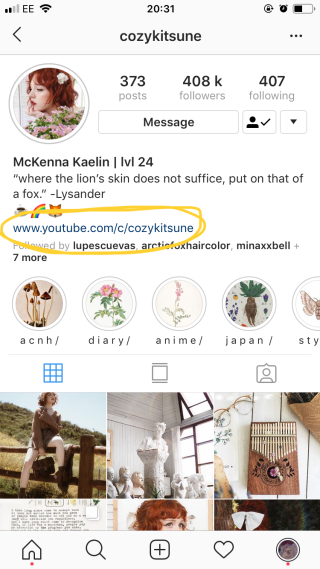
Instagram does this due to the average user spends 15 minutes a day on Instagram. Similar to Facebook, Instagram has a good average usage duration. 15 minutes is enough time for a 1-minute short film to not heavily impact their time. But this could work in a filmmaker’s favour due to it being best to have their video’s watched on only one platform, making their overall view count larger rather than having it and likes/dislikes or comments spread practically across several different platforms.
Instagram Analytics:
Although there are fewer users, to other social media platforms, they are more frequently accessing this platform. Therefore, with Instagram, you want to stay relevant and be posting frequently. Below is some research I’ve done into the analytics of Instagram for the most effective ways to post to cultivate a larger following.
Below is a screenshot of some tips for when posting content to Instagram made by a local influencer. I find these random little things to do when so call ‘tricking’ Instagram’s rather more useful than most of the advice you will find online to help with growing your following. Especially due to this coming from a real person I know who has found out these tips through their own primary research of trial and error.
Therefore, to experiment if these tips will work for my own profile, I will be posting every day for a week conducting all that is advised above to see if this helps me to grow a following for my page…
What I will also do to make my Instagram account as productive as possible is to perform a social media audit. “A social media audit is the process of reviewing what’s working, what’s failing and what can be improved upon across your social media channels.” To help me perform one, I looked at some online articles for advice. Such as, How to Perform a Social Media Audit written by Dominique Jackson. To do an audit it is fairly simple these days due to the amount of all the social media analytics tools available to help you Instagram and google provide. With audits on social media they only have to do a social media audit monthly, or even quarterly in some cases. Within the article, they state that in order to stay organized, you’ll need to create a social media audit template, a spreadsheet of sorts. Mainly made if your audits need to be accessible for everyone on your team as well as having data to be able to track and compare down the road. However, instead of having to make my own spreadsheet, the article provides its reader with a free social media audit template for me to use. With some basics including…
- Profile information (name and URL)
- Engagement metrics
- Publishing metrics
- Audience demographics
- Referral traffic
- Channel specific metrics
A next step is to analysis how your existing profiles are performing. Important to do, because it shows you what’s working, what needs to be improved and your biggest opportunities. To do so the template given provides me to identify how my profiles are performing such as engagement, link clicks, shares, referral traffic, impressions etc.
Once I start entering the data, it should be pretty obvious to see how my profile is performing throughout the month/year or years. For the reason to see what times of year outperform others, for the opportunity to see what times my profile requires more time and effort.
To start with, instead of using the spreadsheet given to me within the article, I’ll use the ‘Insights’ tool available on Instagram. ‘Instagram Insights is a native analytics tool that provides data on follower demographics and actions, as well as your content. This information makes it easy to compare content, measure campaigns, and see how individual posts are performing. To access Instagram Insights, you need a business account.’ As stated in an article I used for advice on the matter. After making my personal account into a business one will help me to identify what’s going well and what’s not going so well. Below is what my current Instagram Insights look like…
What I can conclude from looking at my current Insights is that I don’t have a high enough reach (reach meaning the number of unique accounts that have seen any of your posts). Most of my following is locally located and a very small percentage is international. So to expand my reach I should use more trending hashtags and for me to follow more like-minded profiles to mine. What I also found out that usually the posts that do well are my more fashiony ones, where I post outfits etc. And the posts that don’t do so well are the ones where I post stills from films I like and talk about them in the captions. Therefore, it might be difficult to centre my profile in a more filmic theme when these posts don’t do so well. However, I could somehow combine the two. For instance, I could post content to do with how I costume my films or me replicating costumes from films I like etc. To both combine the fashion posts that do well in terms of engagement with my followers, whilst still keeping my content focussed on me being a filmmaker, my brand. In terms of my follower’s demographic, they are what my target is when making my films, 66% are between the ages of 18-24 and majority being women at 64%. It states that my following spend the most time online on Thursdays at 6-8pm, making this the best time for me, specifically to post.
Another step to take is to identify what posts do better than others, helping to improve my social media content strategy. “If your posts aren’t engaging and resonating with your followers, you won’t succeed.” I can do so by comparing likes/comments etc. If you want to go a bit more in-depth, you can categorize your top posts:
- Videos
- Promotional
- Educational/information
- Entertainment
- Rich media (images and gifs)
This will give me a clear picture of exactly which type of content is working for my audience. From there it’s just a matter of fitting more of that type of successful content into next month’s ‘social media calendar’.
Some other advice given in the article is that my brand should be immediately recognizable from my website to my social media profile. Consistency is crucial. There’s a section in the social media audit template given for branding. Including…
- Bio: Enter in the bio for each profile
- URL in bio: If you have a URL in your bio, add the link here.
- Verified: Is the account verified?
- Matches style guidelines: If your brand has style guidelines in place, make sure all your social profiles follow them. From your cover photos to profile image and any other visuals associated with your profile, check it all.
As stated before, I have a strong idea of my chosen demographic. Due to Instagrams average user age being fairly young, that’s why I chose it. However, sometimes the people that end up following and engaging with you will be completely different than what you expected. So for this step, it is suggested that you want to audit your followers too. You can get this data a variety of ways. Some networks such as Twitter and Facebook give you information about your audience but as far as I know, there isn’t such tool on Instagram that I can find but there are some other third-party sites that help to gather data about your followers.
After gathering all this data in front of me, the point of the social media audit is to give me a better understanding of where I currently am and to make plans for the future. What is going well on my social media and what is not going so well. Whether it’s growing my followers on a certain profile, getting more engagement or broadening my audience, I have all the data I need to make informed decisions on how to reach my new goals with the right social media analytics tools.
YouTube Vs Vimeo
YouTube is one of the more popular social media platforms, boasting 1.8 billion monthly active users. With a older audience demographic of users aged 35-44 years old. With a staggering 2 million video views every minute. YouTube is a great place for your film to be watched, there is certainly the constant and regular audience for it. When comparing it to Vimeo, that has only 170 million monthly active users. It is a fraction of YouTube’s monthly active users, but it has 90 million registered users under its various different subscription plans. But when it comes to marketing my videos, which one is best for my business? Here I’ll be exploring the pros and cons to using Vimeo vs. YouTube for marketing my films/work.
YouTube is by far the largest video sharing platform on the internet. With millions of videos spanning many types of content and themes. There is no limit as to what you can find on YouTube. Therefore, anyone with access to the internet and a camera is able to upload their own content. And alike to YouTube, Vimeo is a video sharing platform that was started back in 2004 by filmmakers that wanted to share their creative work and personal moments from their lives. The idea caught on and attracted like-minded people. Today Vimeo is the preferred tool for 70 million creators such as film artists, animators, and musicians. Vimeo, while smaller than YouTube, has built a community geared towards a more “artsy creative” niche.
As mentioned above, when it comes to audience reach, YouTube has the most monthly active users. Furthermore, YouTube is owned by Google and is the second most searched site just behind Google itself. YouTube is also available in every country and in more than fifty languages. While their reach is limitless, the size of YouTube is also negative. There are so many options for viewers and the competition is extremely high. Even if you’ve produced an amazing, high-quality video, there is a high possibility it may get lost in the thousands of videos uploaded everyday. Because YouTube is so big, free, and has so much competition, its viewers are not always the most professional, constructive people either. However, today there are 240 million active monthly Vimeo users. Because Vimeo is smaller and more niche, your videos have a better chance of being found and followed within their community-driven platform. There is less competition than on YouTube and sometimes quality over quantity is better. Unfortunately, Vimeo can’t keep up with YouTube’s constant growth in users. You’re more likely to have more video traffic on YouTube. Because Vimeo’s audience is smaller and has more of a community mindset, the user interactions tend to be more constructive and less aggressive than in the YouTube comment section.
Another comparison to make is the pricing of both websites. YouTube is a free service, literally, anyone can upload and share videos without having to pay anything. Businesses can also take advantage of using YouTube for free. For those with budget constraints, like me, YouTube is a clear winner here. However, Vimeo offers a basic version for individuals but with limited features such as 500 MB of storage per week. There is a 30 day free trial for business plans which are paid in annual subscriptions based on a tiered pricing model. Although more expensive, I think this would be a preferred route for me to upload my films due to all the points mentioned above, the audience I’ll be cultivating will me more like-minded professionals. And there are some advantages to Vimeo’s paid subscription model, for instance, you don’t get any annoying popup ads, unlike YouTube who makes their money through advertisements.

A valuable element to mention is that YouTube has 300 videos that are being uploaded to YouTube every minute, and they need to be processed before they can go live. Compression speed and quality must be balanced in order to successfully handle that upload volume. Because of YouTube’s size and business model, it is often associated with quantity over quality. YouTube video quality is good, but due to its sheer size and volume, it’s not the best. Whereas, since Vimeo has restrictions on their upload quantity and size, their Plus, Pro, and Business subscribers will have much higher quality looking videos due to a higher bitrate. The same video uploaded to both YouTube and Vimeo will be higher quality on Vimeo.
Here is an example posted on Medium.com of Vimeo vs. YouTube’s video quality.
For most of the reasons above, I feel that Vimeo is the best choice for my chosen career. Mainly due to me wanting higher quality videos without any ads and my target audience is comprised of creators and artists, Vimeo would also be the preferred platform for my video marketing strategy.
Top Tips for Vimeo Marketing:
As I prefer Vimeo over YouTube, it is certainly a good option for marketing my videos within a specific niche and I prefer quality over quantity.
- Know Your Target Market: Because Vimeo’s audience tends to be a more niche group it is extremely important that I understand who my target audience is and what they will want to see. Because there are fewer people on Vimeo, you need to be strategic on what you upload and who you are uploading it for in order to make the most of your content.
- Engagement: Since Vimeo’s audience is tighter knit than YouTube’s, engaging and responding to viewer comments is very important. When people comment and provide feedback on your videos, respond and start a conversation. By actively interacting with Vimeo’s community you will be able to build a network and loyal following.
- Promote: Due to the fact that Vimeo has a smaller community, it is extremely important to cross promote your Vimeo videos on your website and social media channels like Instagram. The best way to include your Vimeo videos on your website is by embedding them with a social media aggregator. A social media aggregator will automatically cluster your Vimeo videos daily to the feed and show your viewers’ comments. Luckily this is an available option to embed your videos hosted by Vimeo on Wix.com. Viewers can enjoy your videos without ever having to leave your website.
Similar to what I did for my Instagram profile, I’ll also make an effort to apply theses techniques mentioned above when uploading my future works to Vimeo.
My Mentorship
Another part of this module is the mentoring scheme. An opportunity for a professional in my field of interest to offer insight into the filmmaking industry. After some trials and errors with picking a particular mentor for me, Kate Cheeseman is the one to respond. Rural Media can fund up to 10 hours of mentor contact at agreed rates.
Before I go into the first meeting with my mentor I’ll need to Identify 3 goals you’d like to get from working with them…
- I would like some advice for my next steps as a writer after leaving university and entering a professional workplace, as I have never done that before.
- Also if they could give me some pointers on how/where to start, mainly within writing for indie films or theatre productions.
- Other advice I would like to have is ‘Do’s and Don’ts’ when approaching the industry. And just technical firsthand advice when it comes to writing for the screen.
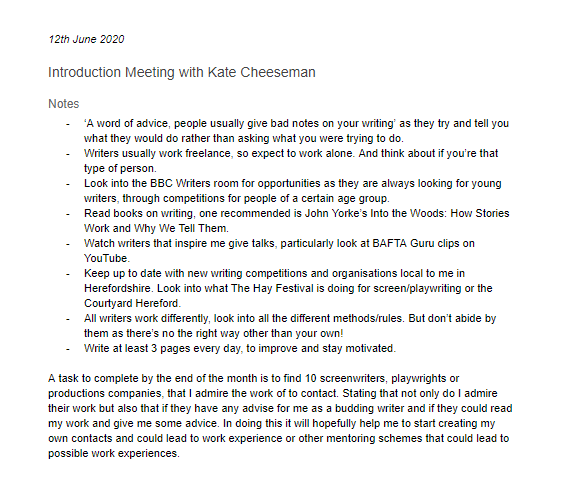
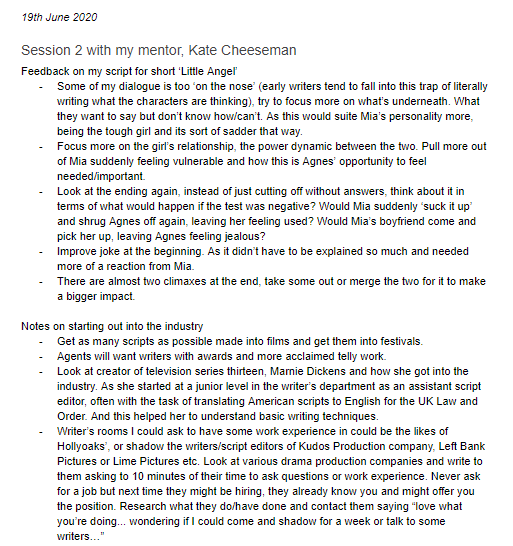
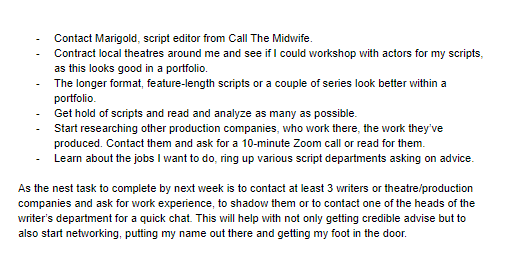
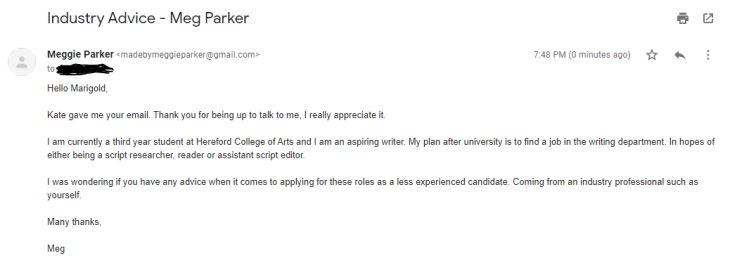
Preparing a CV and Preparing for Interviews
As another step to prepare me for finding work after university, making a polished CV is crucial. Therefore, I’ve taken to seeking some advice from industry experts on the matter, specifically for filmmaking.
Rural Media have many CVs being sent to their inbox, some good but the majority are not so good. But the main deal-breaker was that it was apparent that these not-so-good CVs did not make the effort of customising their CVs specifically before applying to each job application. “On average 15 people each day apply for our jobs, 10 of those will not have made an effort to customise their CV or researched the role. That leaves you a 1 in 5 chance that your CV will catch the eye of the recruiter.”- Dan Haworth-Salter
Film is a notoriously competitive industry. But to stand out compared to other counterparts is to understand that those who have thoroughly written an rewritten a polished, tailored CV made for each application stand a higher chance of getting an interview than someone who doesn’t make that effort at all.
What should my CV look like for an inexperienced Screenwriter?
For some advice as to what my CV should look like as a writer, I read some articles below to help me plan mine with pointers specific to me as a screenwriter that’s just starting out.
Finally, the articles asks you to think about relevant experience and how you can include that. “If you’ve ever written copy, social media, journalistic articles or any other kinds of writing, include a brief section about how that helped you.” For instance, use skills learned such as creativity, writing to deadlines, taking notes and only those areas that are specifically relevant to my writing career. Therefore, this is applicable to me as I don’t have much experience in the workplace. However, I could add my experience with other forms of writing, such as not only my university scripts, but past poetry I’ve written and entered into competitions. And my high marks for my blog work in my past modules. Furthermore, I will mention this success in my future applications.
However, what to keep out of my writer’s CV, as stated within the article is other work experience such as, your day job, unless it’s relevant, i.e. you’re already working as a writer, or perhaps a script editor/dramaturge. But keep that information for the discovery process of getting to know your agent or producer etc. To help fill out my CV with more relevant work is an opinion to spend a week or so getting work experience at a theatre, or script-reading for a competition. As this could be a way to demonstrate that you have a passion for the industry and an awareness of the field.
Regarding including an image of myself isn’t relevant, unless you’re applying for a job as an actor, model or presenter, CV etiquette suggests you don’t need to include a photograph.
Things to focus on when making a CV is the flowing…
Genre – when adding my polished scripts onto my CV, I’ll make an effort to include the ones that best represent me a as a writer, either that be in terms of the genre I mostly write in/hope to work in ie drama, or themes/types of stories I hope to continue telling, the female experience/British youth culture.
Format – the portfolio I make should show my preference for TV, features or theatre, but even if you’re totally devoted to a career in film, a very polished television series is a great way of showing you can complete a fully-rounded project with a beginning, middle and end.
Tone – the tone of my pitches should fit the brand of myself as a writer. For instance, as it states within the article, “if you’re a comedy writer your mini-pitches should be funny, if you’re a thriller or espionage expert, your pitches should be hooky and dramatic.” To do so make an extra effort to polish these very short outlines constantly.
When it comes to the design of my CV, its worth mentioning that there are many paid templates to buy. Although, these can look very visually appealing, its best to let the work speak for itself, in terms of showing my personality as a writer. As these paid templates tend to be more distracting. Less is more when it comes to the design of a writer’s CV. A simple CV template (in Word, Pages, etc.) will more than adequately do the job. And an important factor is to create a pdf to send, rather than the original document, so the formatting can’t shift when opened on a different machine.
The basics in terms of the autonomy of a writer’s CV…
- Name and contact details
- Produced writing credits
- Unproduced portfolio of writing including awards and development status
- Complete scripts – list projects and status, e.g. ‘pilot script and bible’
- Incomplete ideas – list projects and status, e.g. ‘treatment’, ‘outline’
- Other writing experience, social media, copywriting…
- Script/writing courses
- Industry-related work experience in brief
- Other work experience, very brief
- Writing-specific referees
For right now, I’ll be making a basic CV applicable for many of the entry-level positions in the script department. Either being assistant script editor/researcher/reader. As this is where I see myself most likely applying to after this degree. Below is a link to the finished document…
Below are examples of other screenwriter’s CVs of more experienced and established industry professionals and how they compare to my own I’ve just made.
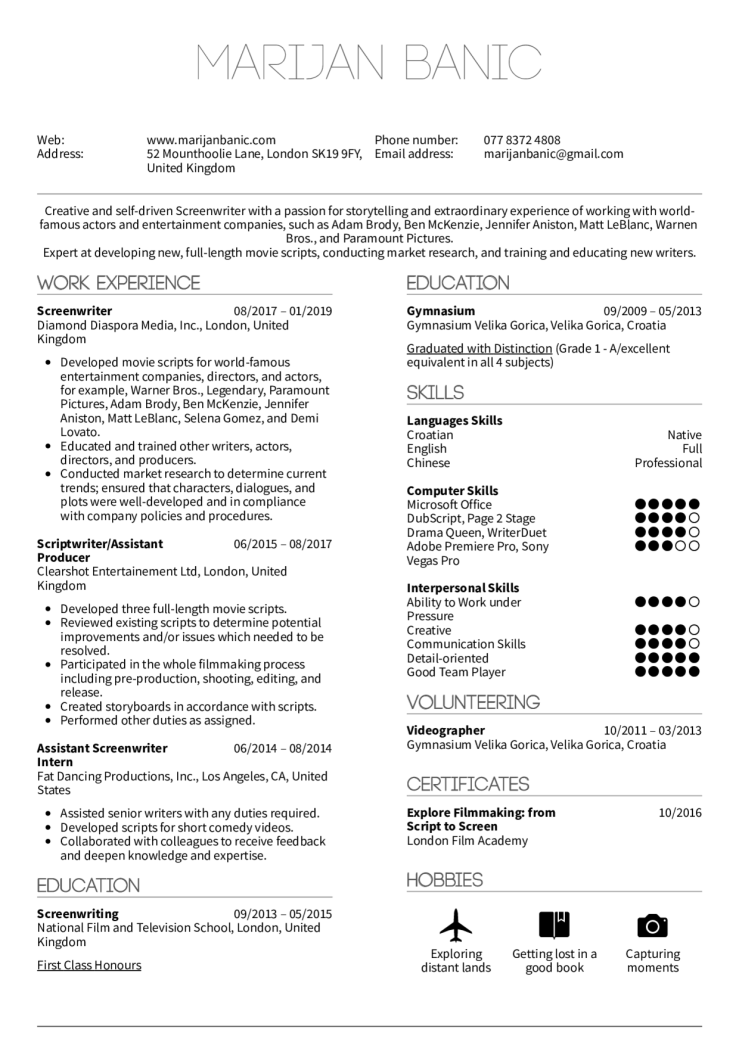
Comparing the CV I just made to the ones above, the format straight away looks more refined. They both use a rating system, working to measuring their skill set, Marijan Banic uses out of 5 marking whereas Marshall Shepherd uses a bar to measure their strength underneath said skill. I think this style of formating my skills in terms of measuring them somehow is a more insightful and honest approach when adding said skills. For instance, I consider myself to be more skilled/proficient in software such as Adobe Premiere Pro than I am with Premiere Rush or Final Cut Pro X, therefore I’ll measure that skill higher than the other. This is a good system to use as I can highlight ones I feel more confident in, especially in case it seems I’m equally as good in all of them when I feel there is some work to be done in one area. My preference of CV is the first as I feel the choice of font, layout and use of icons/images work to create a more interesting application to look at, helping to stand out to employers. My current CV looks more like Sheperd’s as I previously was inclined to use more negative space as I thought this looks more sleek and professional. But reflecting on mine compared to Banic’s, my lack of relevant employment history makes my CV look too sparse and now seeing the two together, I like the more compressed look of Banic’s. As it seems more impressive of an application compared to Shepherd’s even though their content/experience is very similar.
In terms of their content compared to mine, it’s clear that they’re more accomplished than me with a lot of relevant employment history. That’s not something I can currently change but to take away from looking at Marijan Banic’s CV is including other valuable additions such as hobbies, certificates and volunteering. These are all things I can continue doing as a student or do straight away when I leave university to help build a more impressive CV in the meantime before it comes to applying for jobs in my field of interest. As an effort to do so, I’ll include such things as looking to do more short courses (that offer a certificate when competed) and/or volunteering work with indie film productions or theatre companies to my Business Plan.
Cover Letter Advice
Once, I’ve polished my CV as best as I could, now I have to work on writing my cover letter or email. As this is my opening pitch, an opportunity for me to display my personality and tie in my experience with the requirements for the role on offer. For some extra advice on the matter, I looked into the article by The Muse ‘How to Write a Cover Letter: The All-Time Best Tips’
- To begin with, tip number one is that, again make a tailored cover letter for each job application, most employers want to see that you’re truly excited about the specific position and company, you’re applying for. To add an extra personal touch, consider how to greet said employer. It states that its best not to use generic salutations like “To Whom it May Concern” or “Dear Sir or Madam” as they seem less human and more robotic. If the place your applying to is a more casual work environment then use a first name, if its more formal look into alternatives such as, using the title of the head of the department etc. So when I write my cover letter, I will make an effort to find out the name of the person who will be reading my application. And then depending on what type of work environment it is, I will use their name, or their title.
- The next thing to consider is the opening line. As my name is already on my resume, there’s no need to repeat it here. It is best to mention here the job I’m applying for, to make thing easier for the hiring manager. The article gives an example of the following “I am excited to apply for [job] with [Company].” But to show my personality from the get-go is to consider introducing myself with a snappy first sentence that highlights my excitement about the company I’m applying to, my passion for the work they do, or my past accomplishments.
- A common issue that many job seekers may run into is that they use their cover letter to regurgitate what’s on their resume. Don’t just repeat yourself. Instead, expand on those bullet points to paint a fuller picture of your professional self and your prior achievements, and demonstrate why I’d be perfect for the job and the company.
- Another important factor when it comes to writing a cover letter when I’ve come straight out of university is to consider not hyper-focusing on my educational backgrounds. Because the majority of hiring managers mostly care about your work experience, either that being volunteering/apprenticeships. That being said, I am fresh from university without much experience. So it best to try not to apologize for my missing experience. As stated in the article, “When you don’t meet all of the job requirements, it’s tempting to use lines like, “Despite my limited experience as a manager…” or “While I may not have direct experience in marketing…” But that isn’t going to help your case. Instead of drawing attention to your weaknesses by apologising, emphasize on the strengths and transferable skills you do have.” When it comes to writing my cover letter, I will refrain from apologising and highlighting my insecurities. Instead, I will write to come across as the perfect candidate for the role, regardless of skill.
- Another edge to gain on competitors is to add testimonials, either that be from tutors/mentors or colleagues. But in the article, it’s advised that to use this sparingly and gives an example of how to include such a sentence within the cover letter…“When I oversaw our last office move, my colour-coded spreadsheets covering every minute detail of the logistics were legendary; my manager said I was so organized, she’d trust me to plan an expedition to Mars.” As I have no workplace related experience, I will probably use a testimonial from my mentor and tutor. As they can give a good account of my work ethic and such.
- More advise given in the article is that it stays “Don’t Let Your Fear of Bragging Get in the Way” As I tend struggle writing about my own achievements, what the article suggests I do was to write about myself from a different perspective, either that be from a favourite boss, best friend, or mentor say about you? I could ask a tutor to help out if I need that extra help too.
- When editing its key to keep the cover letter short and sweet. With some exceptions, the rule is to not go over a page. As stated within the article “In one survey, more than two-thirds of employers said they preferred a cover letter that’s either just half a page (around 250 words) or “the shorter the better.” To tailor to the company reading my cover letter, I will try to keep my letter as short and sweet as possible. However, I won’t let this hinder my opportunity to show off. So regardless of length, it will get my point across.
- Ending with the obvious, remember to spell-check and check your grammar, either that being through a computer scan or getting another pair of eyes on it. “Remembering that even one spelling or grammar mistake can be all it takes to turn off the hiring manager—especially if writing skills are an important part of the role you’re applying for.” To ensure that I have the best spelling and grammar possible, I will use software such as Grammarly. Furthermore, I will run it past another person, such as my mentor. To ensure that everything is in order. As to not set myself up for failure.
But before I send off my CV, its important to make an effort to give it to another person I trust to give it an extra look over it with a fresh pair of eyes and give me their feedback, either that be with an industry professional or a friend/family member. For now, I’ll be asking Kieth on advice and feedback on my writer’s CV I’ve just made.

Below is my finished CV after taking all the advice above on board, with the added comparisons I made earlier to the other industry-standard applications.
Above is a link to a PDF of my amended CV, I have changed it based on Marijan Banic’s CV. I prefer this compact and graphic design compared to a more standardised ‘list of achievements’ spanning a few pages. In my own personal opinion, I feel that those kinds of CV’s are seen as too much information and a chore to read. Personally, I prefer setting the CV within a few pages as possible, with graphics and rating systems to convey things that would otherwise take up space with needless writing.
Interview Advice
Another aspect to remember when preparing to find employment after university is that after my CV gets me through the door, there is the interviewing process. Things to bear in mind before the interview is, who is the interviewer? How long will it be? Is there anything else I should take with my CV?
For more advice on the matter, specifically the interviewing process within filmmaking, I looked to a video on the site ‘My First Job in Film’. Some advice in the video was to absolutely make sure that you do the research for the job your applying in. To have extensive knowledge about the company and role that I’m going for, as this will help me to feel more confident when being interviewed. Another way to research for the role that what to apply for is to use a site like Creative England, who provide a break down of all the different roles within film and how they work. However, a site that was more useful to me, was My First Job in Film’s resources to look at a breakdown of the role of the assistant script editor as an example of a possible option for me to take as my own first job in the film industry.
As stated on the site the assistant script editor role can be found on “one-off and long-running episodic television series, sitcoms and children’s television. The entry-level role in this department starts with the assistant script editor.” It provides me with a breakdown of the whole department, list of the responsibilities for the role/qualifications needed. The article is jam-packed full of useful information to learn before I go for a position in said role. https://www.myfirstjobintv.co.uk/resources/careers-guide/detail?page_id=30 And from reading this I can gather what my future employers might be looking for when hiring for such a role, I can also use all this information to make a sort of template of questions they might want to ask. Such as…
From also reading “Top 10 Personal Attributes of the Assistant Script Editor” and what the department is like to work in, it’s also important to think about how I’ll come across when being interviewed. Will my personality fit within the type of department I want to work in? And how I can best display these valued personal attributes within the interview? For instance… +2
I want to look into the general rules of thumb when heading to an interview, the basic dos and don’ts that can be applied to any professional industry. To help me, I looked at a video talking about the matter. https://www.youtube.com/watch?v=thzOhKXRETw Within the video it gave basic tips such as…
- Prepare to dress in the appropriate clothing attire, no hoodies/ripped trousers.
- Tips on body language, a firm handshake and sit up straight, not to slouch or angle away from the person interviewing you as poor posture can make you appear to be disinterested or defensive.
- Have a friendly demeanour to everyone you’re in contact with at the company, retain eye contact making you look interested at what the other person is saying whilst looking more confident and smile regularly to create a warm impression.
- Remembering not to fidget, as this could distract the interviewer from your answers and/or make you look nervous.
- Speaking in a clear, articulate, well-paced tone will also help you not to look too nervous.
- When answering questions, don’t go off on a tangent about an un relevent topic, make all your answers to the point, but thorough enough to not be too short that will leave the interviewer guessing.
- Even when taking on negative experiences, either past jobs/bosses remain positive and constructive about the experiences.
- Always be punctual, never late. But if there is no helping it, be polite and contact them to let them know.
Finally, advice that had always been given to me when going for an interview is to always have questions prepared for myself to ask the interviewer at the end, as this makes you look keen and interested in the position. To do so, I have looked into some more advice online, such as the video ‘Questions to ask at the End of an Interview | Career Interview Tips’ by the channel Cass Thompson Career Advice. The main tip I got from watching the video is to prepare at least 3 questions for the end of the interview. As if I only come with one prepared and it gets answered during the interview I’ll be stumped to ask one on the spot. But make sure that I do ask questions I generally want the answers to, either that be concerns with the position or just things that I generally what I want to know.
One question is a success-driven one. A forward-thinking question about your own success at the company, for example, “How have past employees been successful in this position?”. Or ask about past challenges in this position to show that I’m not afraid of them and could easy problem solve, it shows how am I going to do well here and my best for the company. The second question should be one that’s more culture related. What is the environment of the company like to work in, this helps for me to see if I would actually fit/work well in the department I’m going for and if it’s right for me. An example of a culture question would be “Tell me about the typical workweek in this position.” The third, and arguably the hardest one to ask is the feedback question. “Based on what we have talked about today, is there anything that leaves you with hesitancy with hiring me for the position?” The reason to ask this is that when the answer, it gives you the opportunity to fight for why you’re right for the role. If they say that you lack experience is this area etc, I could say that I love a new challenge and having the opportunity to learn something new. This question also gives you the opportunity to show that you can handle criticism too.
Business Planning and SWOT
One of the most important parts of this module is the planning and development of my business model. To help me start to figure out why, when and what my next steps are when business planning, the School for Creative Startups has developed some key questions when creating your own:
- The proposition: What do you do that people want? How do you know that your product is answering a need or fulfilling a desire?
Relevant to my filmmaking, I think my unique selling point to the sort of films that I write/ make is that they offer a realistic and relatable portrayal of the everyday British person. Arguably, this hyper-realism style and sincerity is wanted more within today’s landscape of cinema, since the turn of the century, due to the success of films being made like Moonlight/ Marriage Story. As more emotion-driven films, rather than relying on other aspects such as effects.
- The customer and market: Who are your customers and where do you find them? What are their attributes and what are your market segments?
As found in some of my research on various social media platforms and their demographics, Instagram and Vimeo are my chosen platforms to gain the most following from audiences that my films are targeted towards the most. With that being a younger demographic, mostly women with similar politics to my own and the themes I write about.
- The competition: Who are you up against and what can you learn from them?
Filmmaking is a very competitive industry. However, I feel that most filmmakers in my area particularly, want to go straight into producing and directing, which in my opinion are more competitive roles in the industry, to want to start out in. However, I want to focus more on my writing before I start to focus on directing my own work. Even though I feel this is a less popular approach to starting a career within the film industry. Other writers/filmmakers that I have discovered tend to have a large following by maximising the potential of the online market and in doing so, they are constantly generating work to promote, and in doing so creates traction and interest from larger audiences.
- The industry: What do you have in common with your competition? Which trends are impacting your industry? How can you predict future trends?
What I have in common with my competitors is that I have a strong aesthetic to my work, and I remain consistent throughout all the projects that I write. Trends within the screenwriting practise these days, tends to be writing snappier, shorter scenes. This might be due to people having a shorter attention span, with less of a need for drawn-out, long scenes or need for too much exposition. To look at future trends within the industry, the development of new technology has an important part to play with the content people want to consume. For instance, interactive filmmaking is becoming more and more popular, with shows on Netflix, such as Black Mirror’s ‘Bandersnatch’.
- The channel: What are the different routes to finding customers?
Routes other than social media would be collaborating and working for other filmmakers, or production companies. This way it gives me the opportunity for their audiences to look at my work and vice-versa. It also networking and putting my name out there in the industry more, and this might give me other opportunities for collaboration.
- The relationship: What financial relationship do you have with your customers? Do you want to sell your product by subscription, via a payment plan or as a product people buy at a fixed price?
When it comes to working on short films at the moment, the work I produce is available free online. Either that be through services such as Vimeo or YouTube. However, when working with other filmmakers/ writers on larger projects, I will be paid for my services.
- The pricing model: How much should you charge for your product or service? What are your customers willing to pay? What are the other business costs to factor into your pricing model?
As a screenwriter, unless I’m apart of a production company, there are no fixed salaries. I will be paid from project to project. Of course, the more notoriety I get, the more I can charge per project but starting out I will have to begin at the lower end of the pay scale. Some online guidelines provide insight into average numbers for this work. For instance, Chron.com states that “Earnings for a script from a novice writer will likely be an estimated $56,500 for the project… with proven writers earning upward of $106,000 for a finished script.”
- The key partner: Who is your key partner? How can suppliers, distributors and marketing companies become one? Who can you bring on board to help you deliver your product or service?
N/A
- The asset: What is your key asset? What do you have to your advantage, to help you win customers? Is it physical, intellectual, human or financial?
My asset as a screenwriter would be my unique insight into the themes and scenarios of which I write about. My written work is very personal to my life and experiences as a young woman. This allows me to write realistic and relatable content for my desired audience.
- The key competency: What activities must your business be good at in order to prosper? What skills and experience do you bring to the business?
As well as staying true to my personal values and aesthetic, I also have to remain flexible when it comes to collaborating with others and be sensitive to their artistic vision. As the film is a very collaborative industry, it is imperative that I should have good communication skills and a friendly demeanour. As it is also an industry where the work and projects that are undertaken are very personal to those that participate in creating them. It is also important that I have good time management as the manner of filmmaking, as a creative practice, usually consists of many people working alone, but alongside others to reach a mutual goal. Therefore, it is important to keep up with scheduling and deadlines, as everyone’s schedule lines up with each other.
These set of questions helped me to think of my writings/skillset as a product. Helping me when trying to sell myself to employers in the future. In terms of helping my business plan, outlining key elements of my individual practice helped break down the fundamentals of my brand. However, it was hard applying some of the questions to my writing practise as it is not a physical product to sell.
What is SWOT?
SWOT Analysis is used to assess where you stand within your current career before you decide on any new strategy. To find out what’s successful, and what’s not as successful. Ask yourself where you want to go and how you might get there – and what obstacles may hinder your progress. This article I looked into, from Mind Tool.com, helped me go through my own SWOT analysis, provides a video and infographic to help me do so… https://www.mindtools.com/pages/article/newTMC_05.htm
What SWOT stands for is Strengths, Weaknesses, Opportunities, and Threats, and then assessing these 4 aspects. Mainly used to “reduce the chances of failure, by understanding what you’re lacking, and eliminating hazards that would otherwise catch you unawares.”
How to Use a SWOT Analysis?
Once all four aspects of SWOT have been analysed and examined, there will be a subsequent list of possible actions to undertake. Therefore, your strengths have to work upon, as well as your weaker aspects. Furthermore, any threats have to be dealt with in order to progress and any opportunity has to be taken advantage of.
Before any advancement is made, you should analyse whether there are any correlations between the areas of the SWOT table. For example, could some of your positive aspects, such as a strength, be used to open up an opportunity. Furthermore, could opportunities arise due to the erasure of certain weaknesses.
Below I found some other examples/templates of SWOT being done…


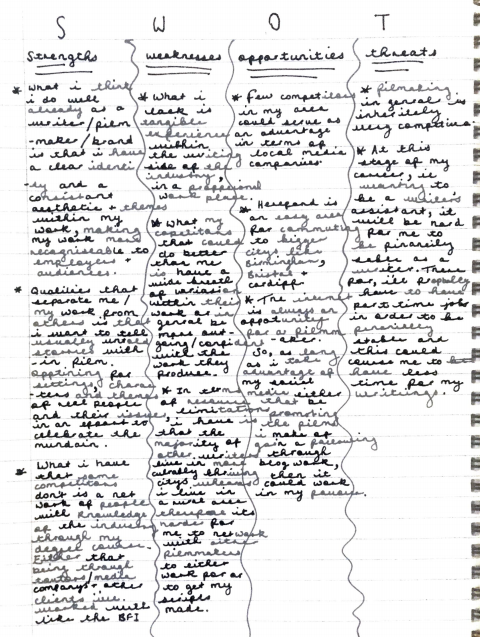
Personal Development Planning
The Personal Development Plan (PDP) is a key element of the module assessment. The importance of creating my own PDP is to clarify what I’ve previously researched the screenwriting industry and how I’m going to plan my next steps when entering into the professional world.
Below, I’ll be filling in a template of what I want my PDP to look like. But before I do so, I’ll look back at a site I used when making my CV, My First Job In Film. This site provides me with a detailed breakdown of the role of assistant script editor, an entry-level role in the writing department, perfect for my own first job in the film/tv industry. The site also informs me about the other roles in the script department and career paths in the department too. As stated on the site, “When you start out, there are a considerable number of choices open to you. You may decide drama isn’t for you – so you could switch to factual or documentary research, working your way up to assistant producer, then producer/director then series producer/edit producer. You may decide that after reading thousands of scripts: you want to peruse a career as a scriptwriter or diversify your knowledge to the role of script supervisor. These roles are highly sorted after and will take a good number of years of production experience to reach. It does vary of course – it usually takes 2 or 3 years of working as a script editor before you are running a department – at the very least. For most, you’d expect to be a story producer or series script editor as a third or fourth job – say on a 4-year trajectory.” Therefore, when I’ll be starting out within the writing industry the idea of me going freelance/finding an agent willing to sign me right away is not realistic. And one of the most important elements when making an accurate PDP is to compromise on what my feasible short-term goals are, to be honest with myself as to what I’ll most likely my options are when I leave straight from university. From looking at this site and researching other roles within the writing department, the entry-level ones I’ll be hoping to apply for after uni as an initial step is the following…(that can be most likely found on one-off and long-running episodic television series, sitcoms and children’s television.)
- Script readers. Read tons of scripts, score them and provide written reports (usually three pages of notes) assessing: premise, characters, dialogue, format, structure, plot, descriptions, pace, originality and theme.
- Assistant/Junior script editor. Reports to exec producer, and works closely with producer, scriptwriter and script editor to provide editorial and research support.
Some other advice I’ve found on this site was a step by step guide as to how to start within the industry, as seen below… This gives me a little guidance in the sort of things I must be doing to start developing/building on my knowledge and abilities as a writer and extra steps to consider in my PDP.

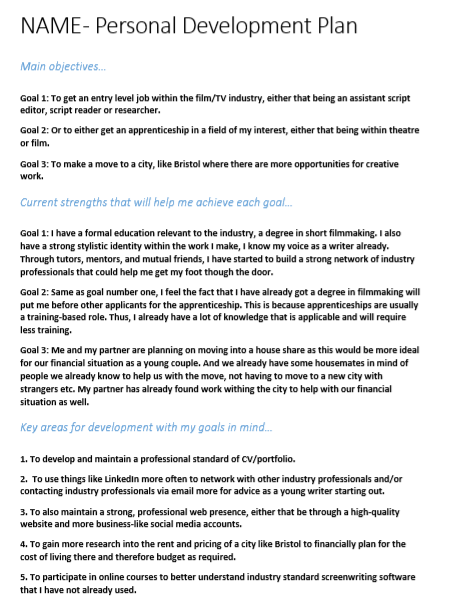
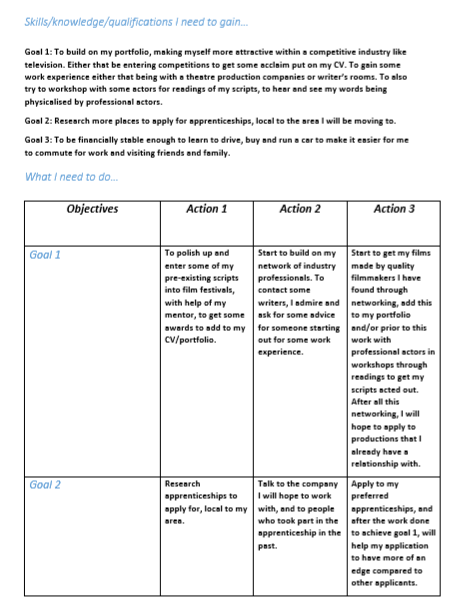
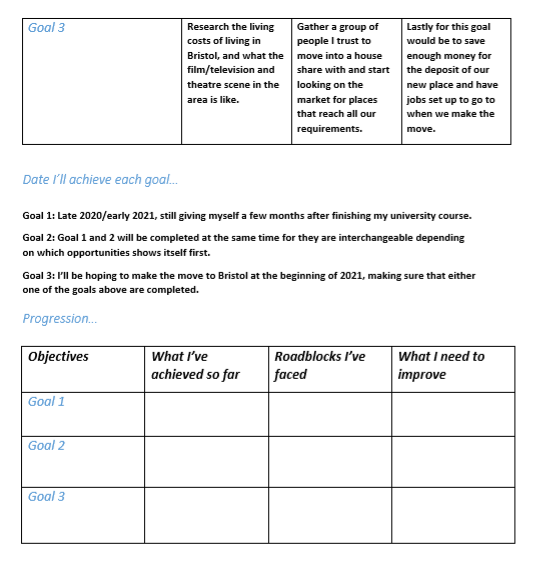
To conclude, the benefits of completing this report are mainly to refocus on building on my current skills for my future career. Either that be through learning and developing, that may include things such as workshops, independent study, networking, on-the-job training, joining a club/support group etc. As all of these opportunities will allow me to gain new skills and knowledge and could be paramount in the future concerning the completion of my targets and goals.
Above I have completed my PDP report with the help of using a template available on Reed.co.uk. What I liked most about this template is it offered a section of the report that I didn’t think to add to mine at first, at the bottom of the template was a progression table. To include an option to help track my progression is so helpful because keeping up with your progression is a good way of measuring your success. Not only is it a way to layout your newly learnt skills and knowledge, but it also acts a motivation to succeed and allow you to sit back and contemplate your progress and change and adapt the plan if things aren’t progressing as planned.
All in all, it helped me to give myself thought-out goals that can be achieved realistically, that help me stay motivated with a sense of achievement through the succession of completing short term goals. Creating a Personal Development Plan has also provided me with an easy to follow structure and counsel I need to be driven and actually advance in the direction to fill my capabilities of being a writer.
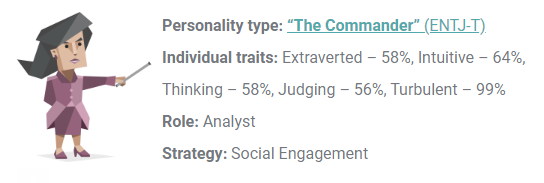

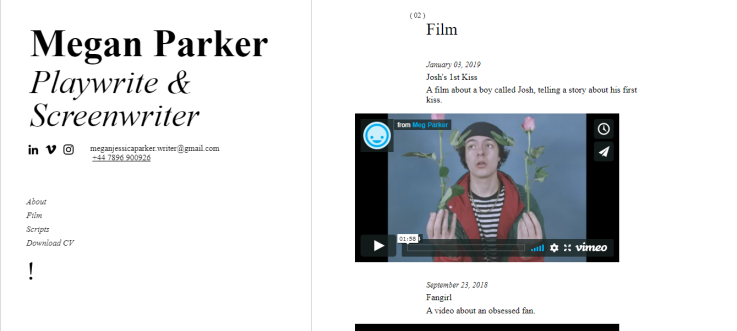















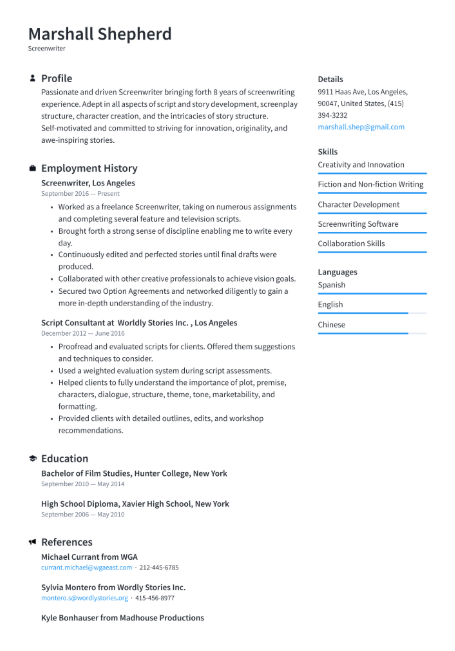





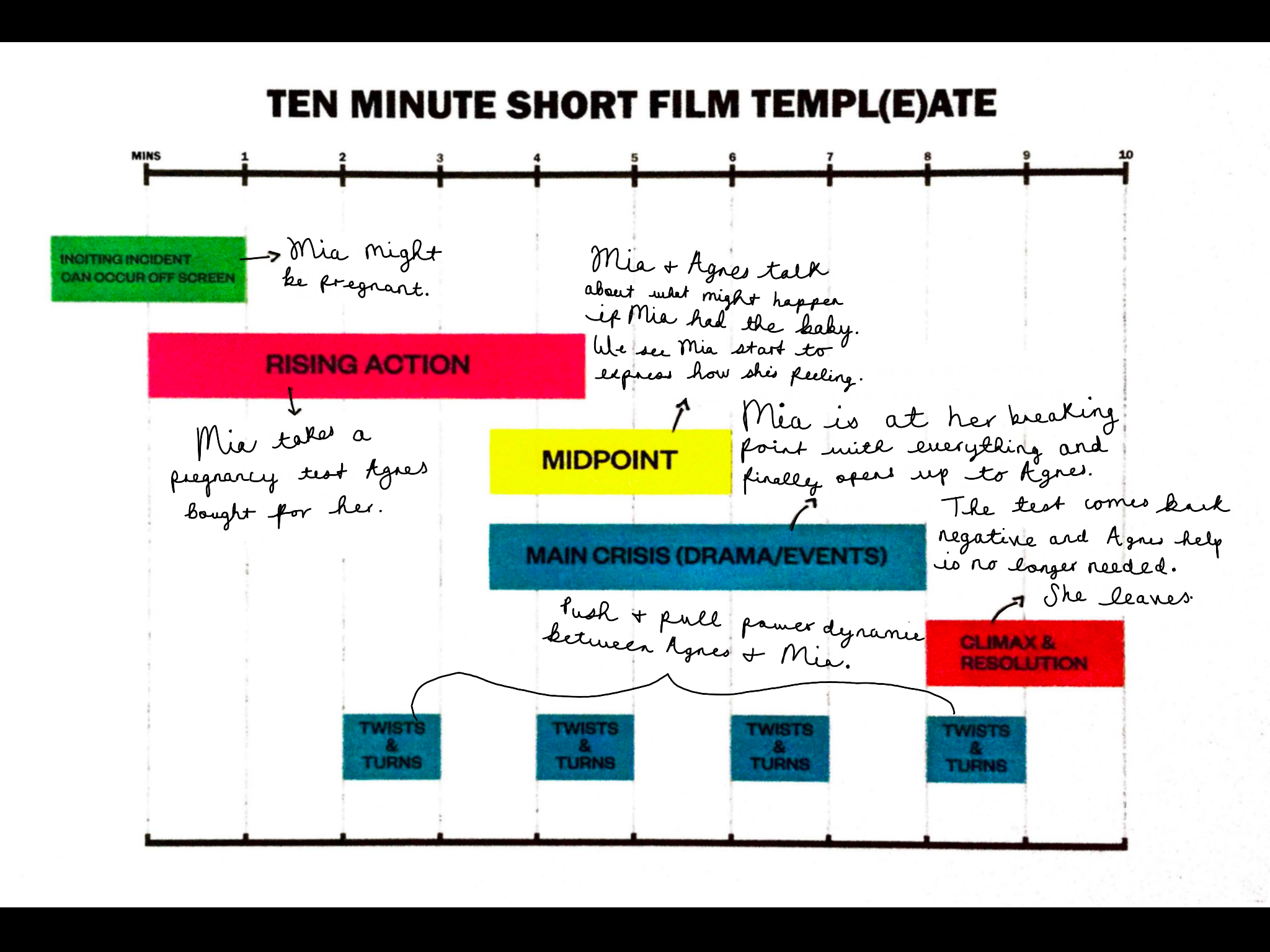
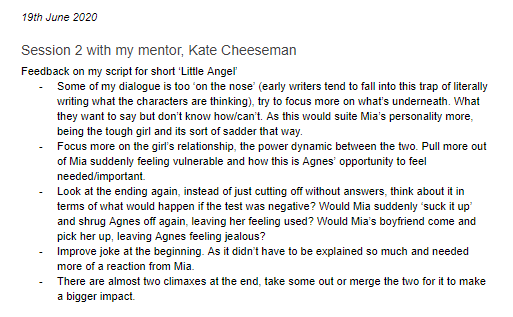
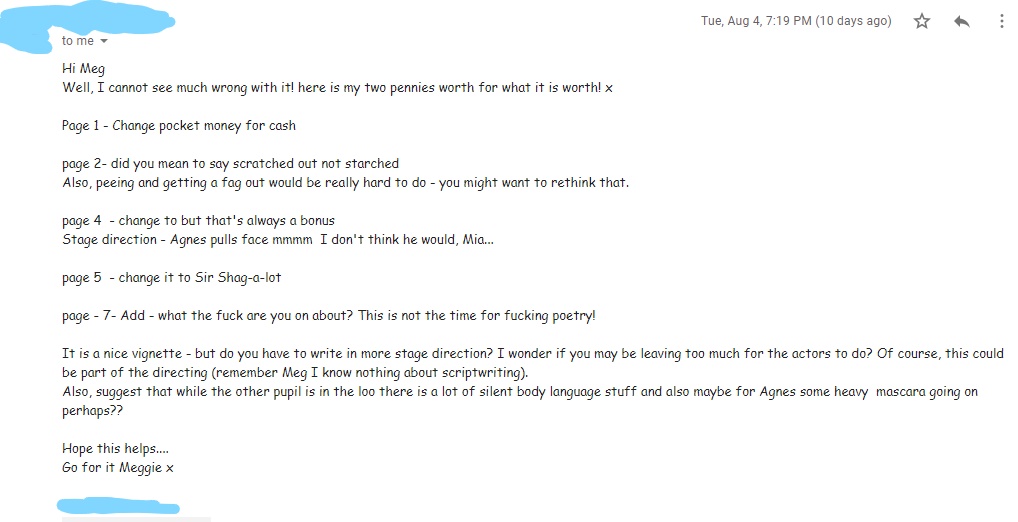






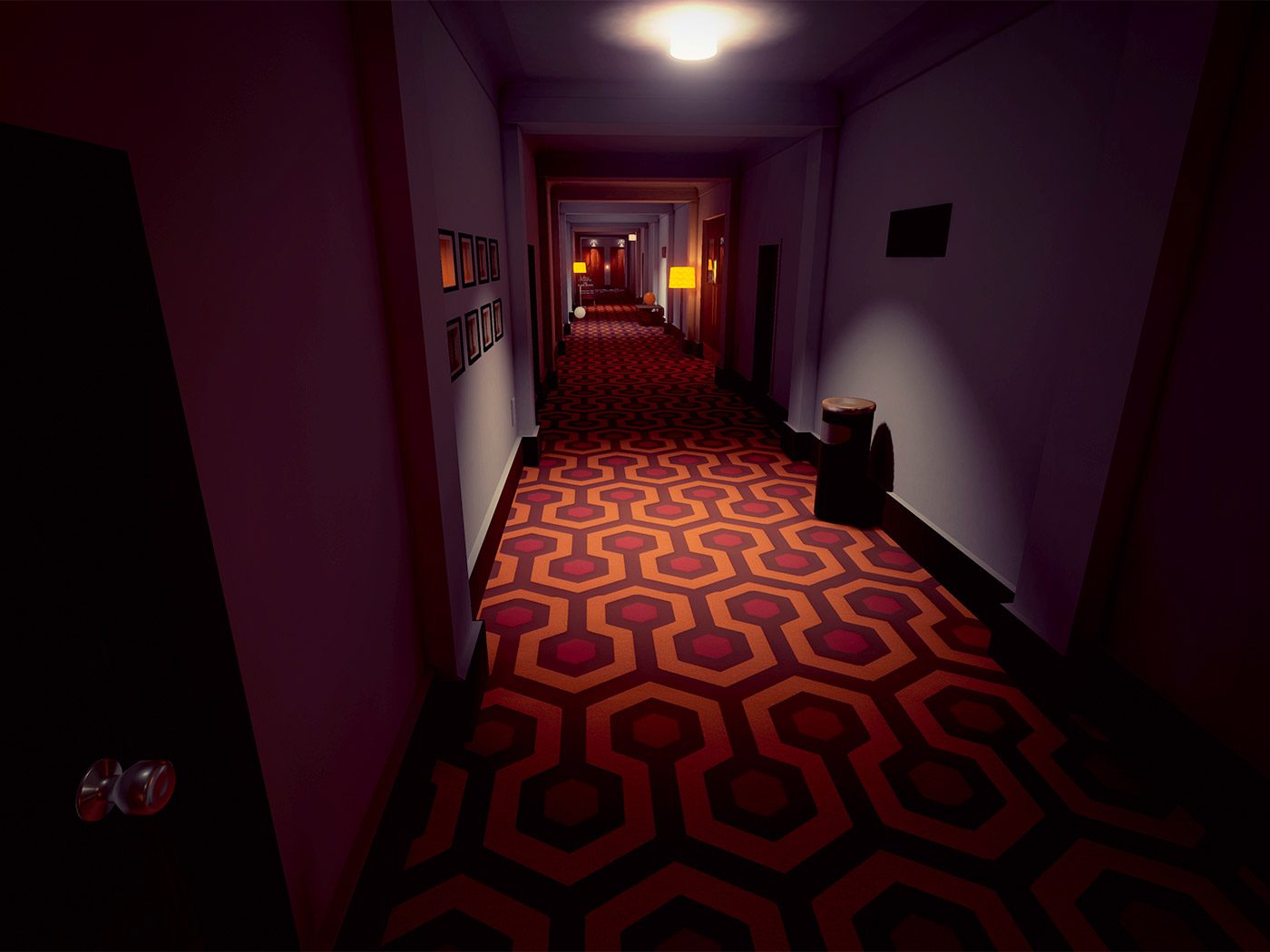


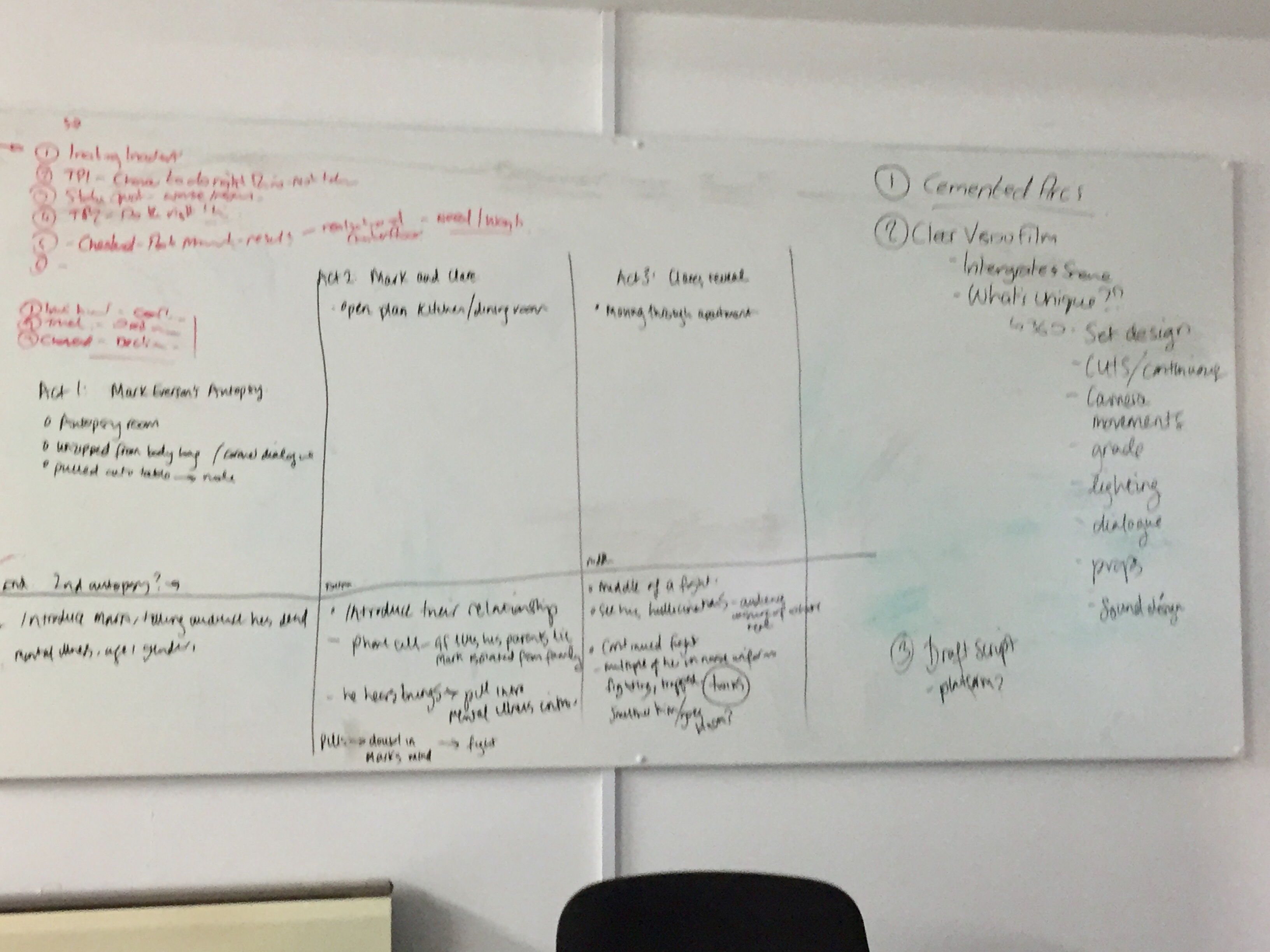
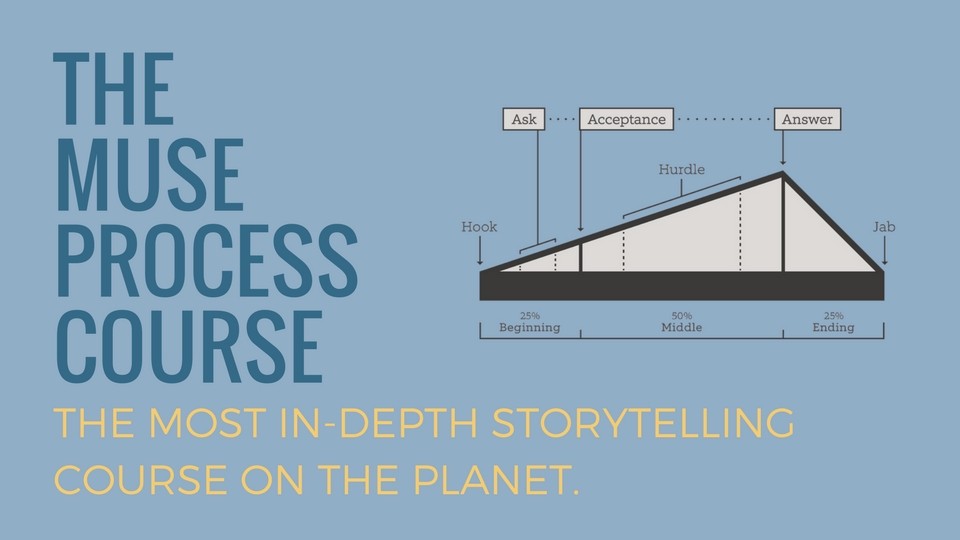
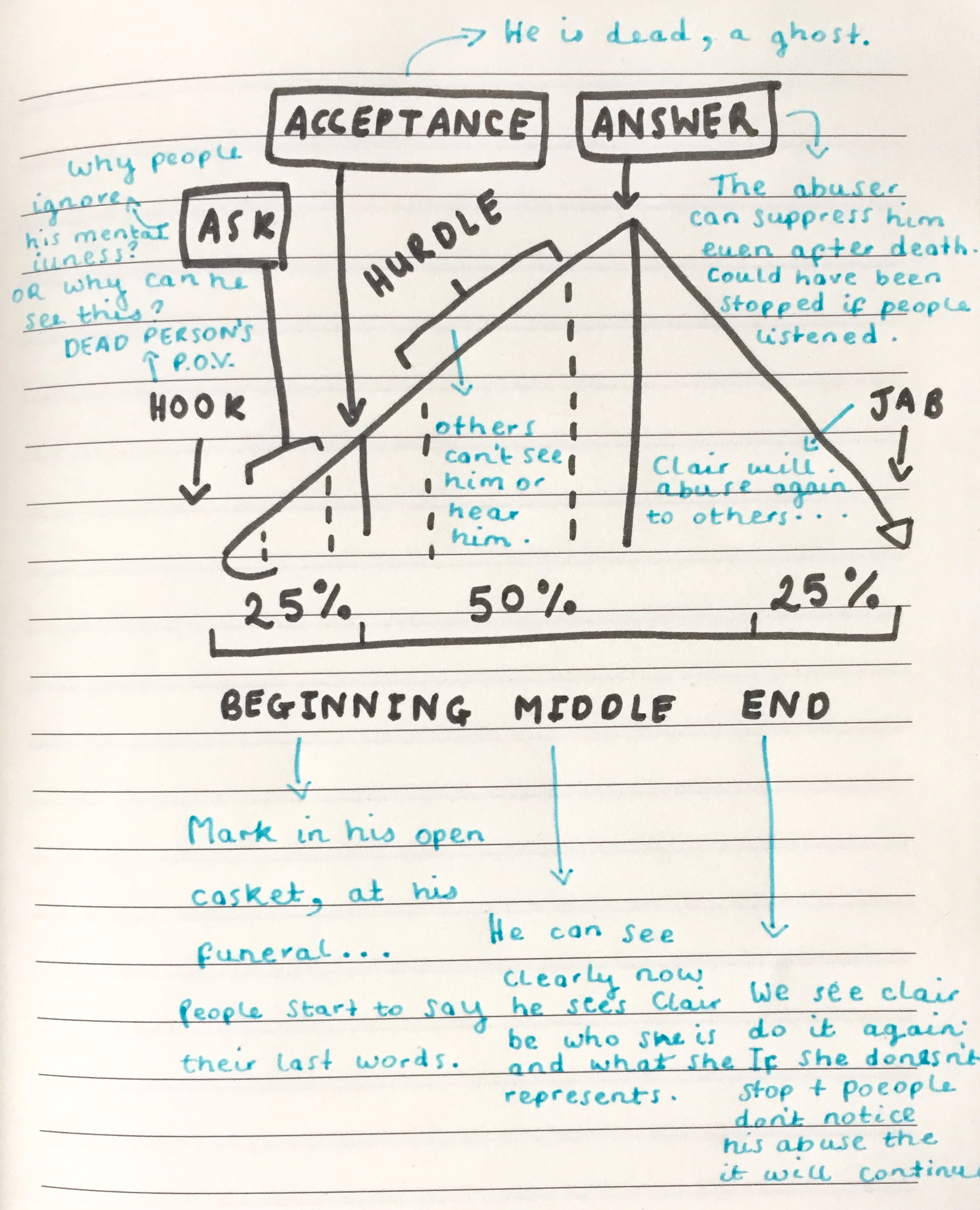








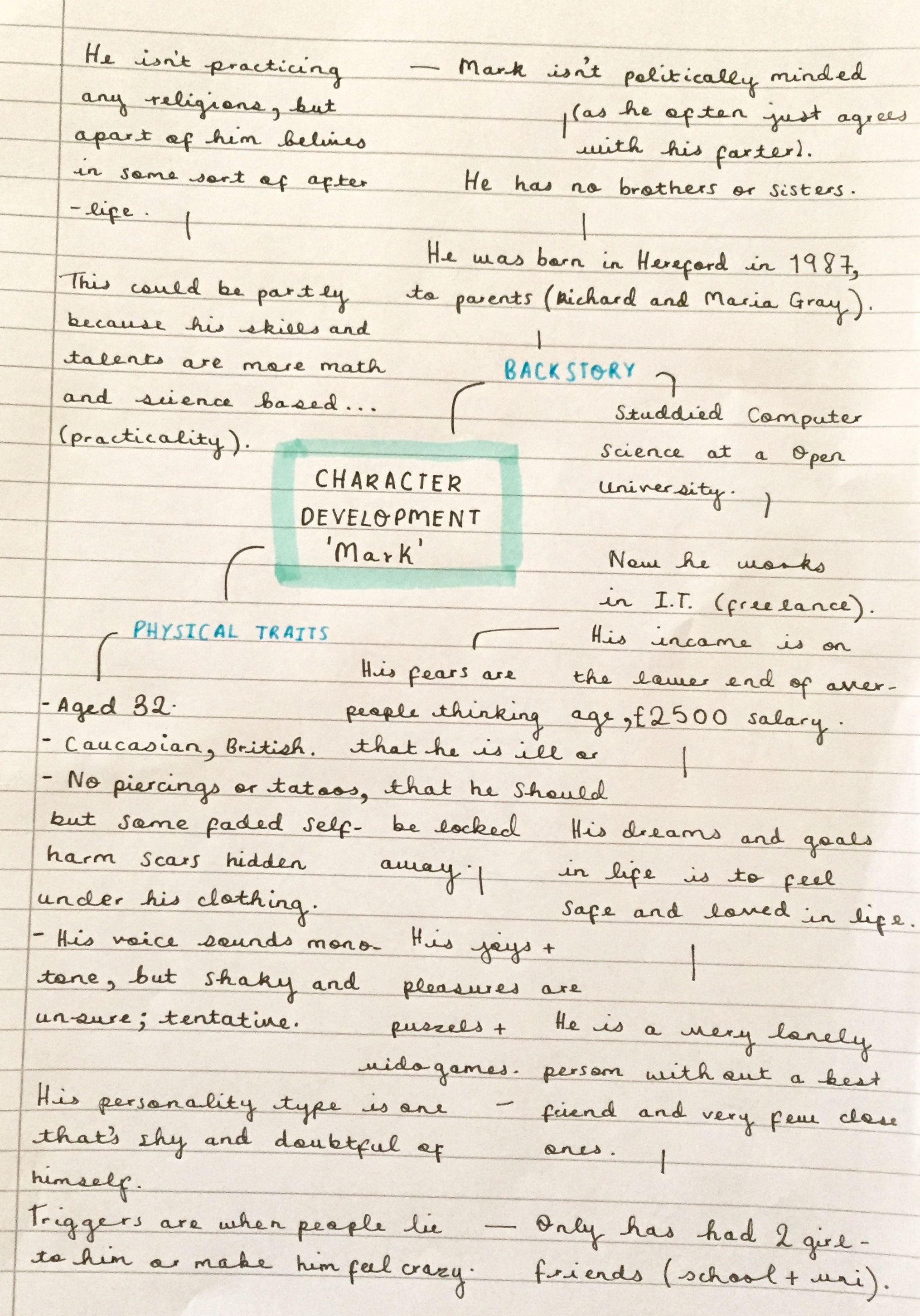
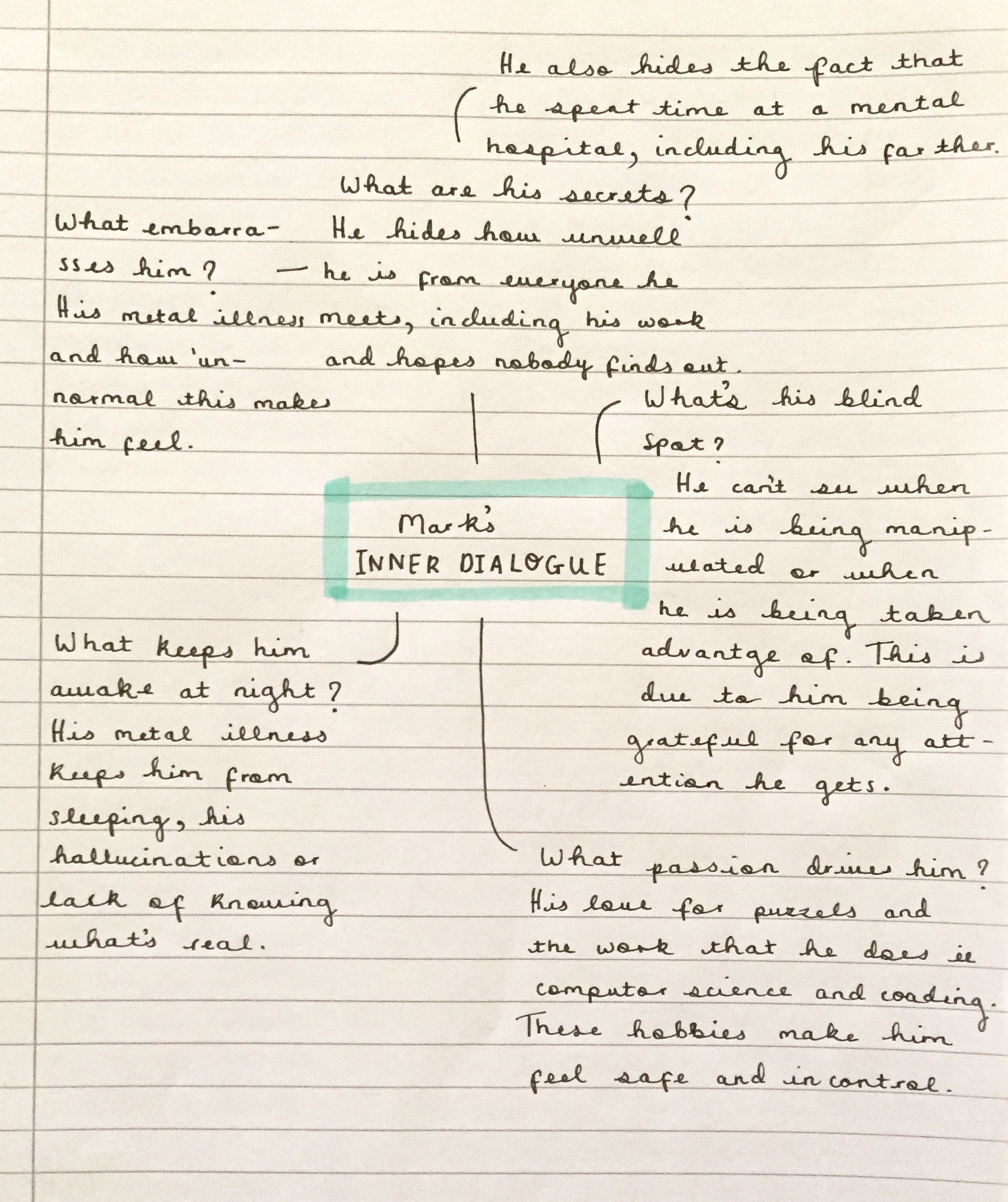
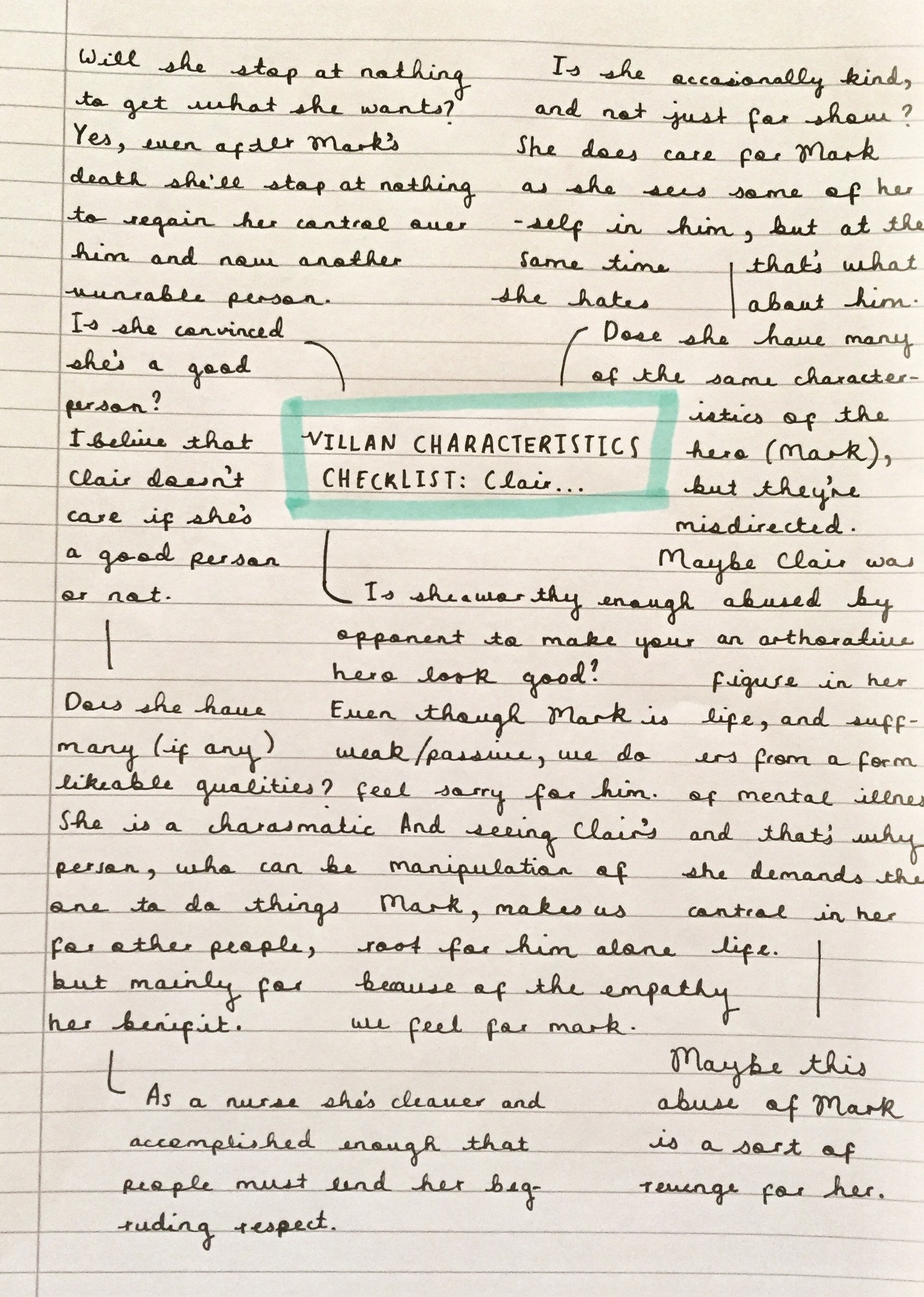





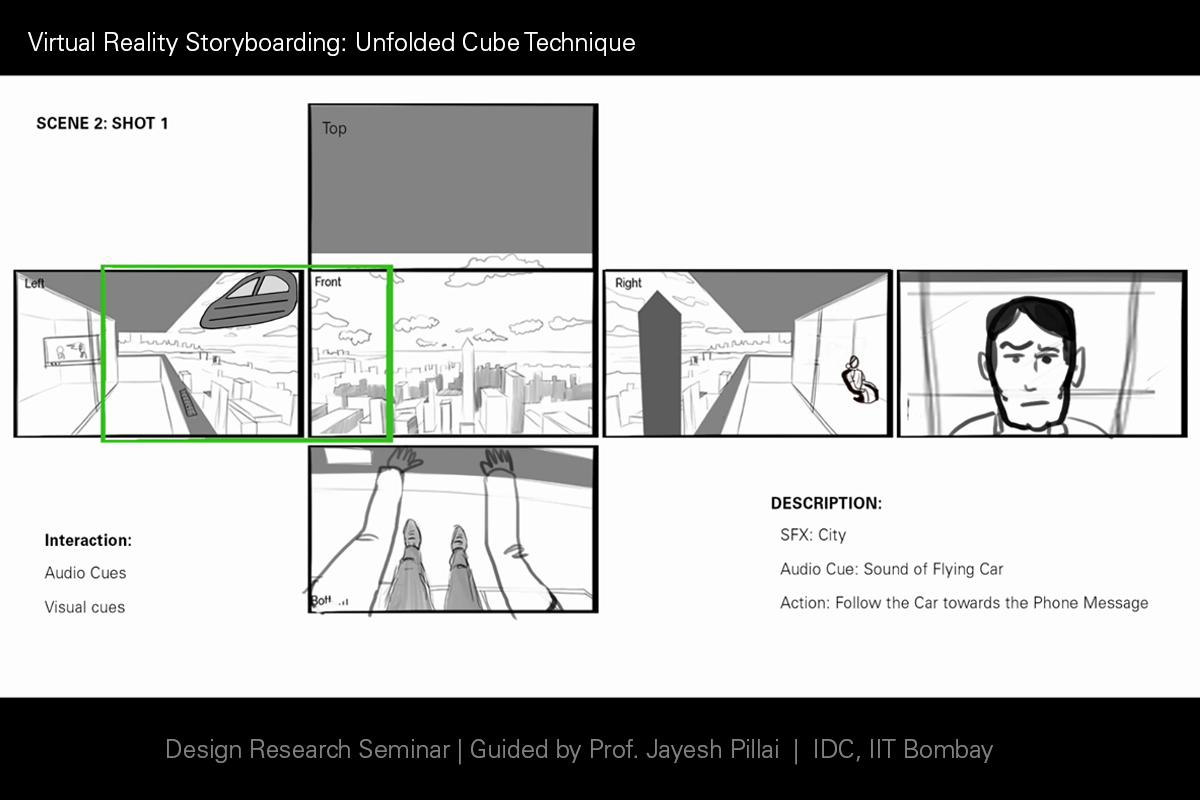
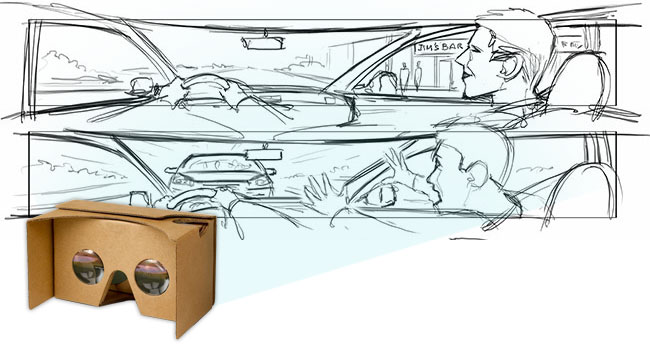
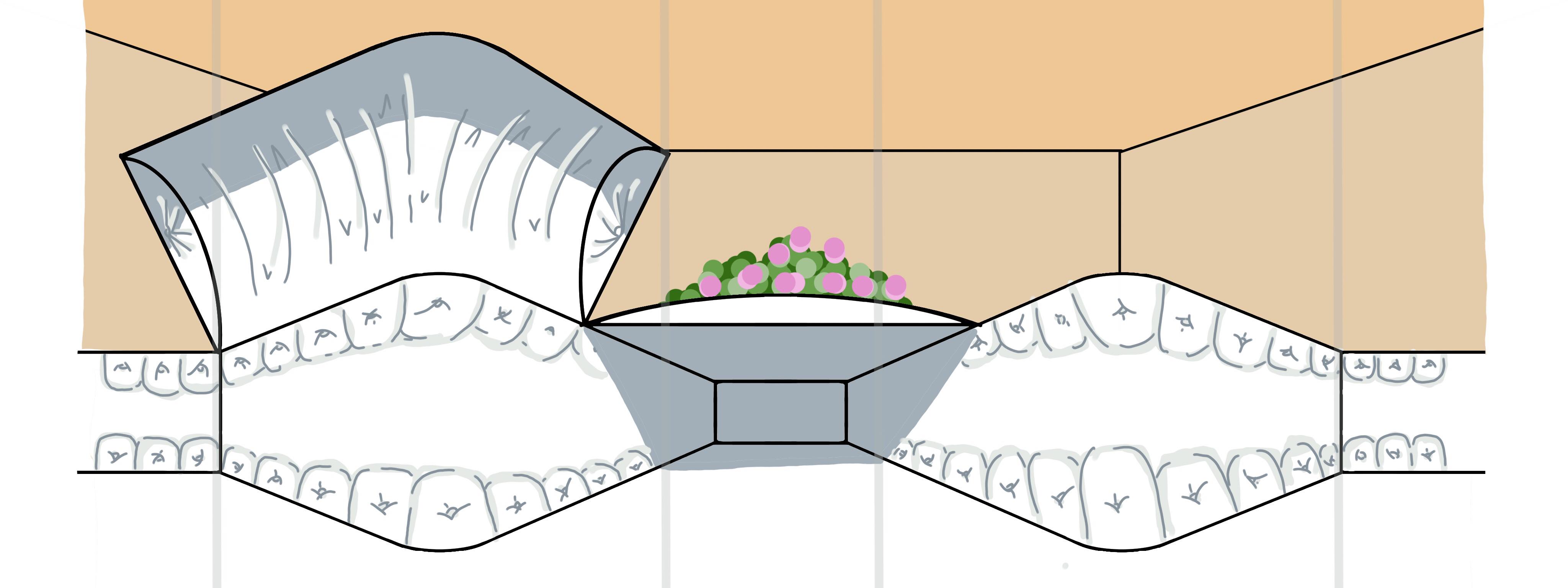
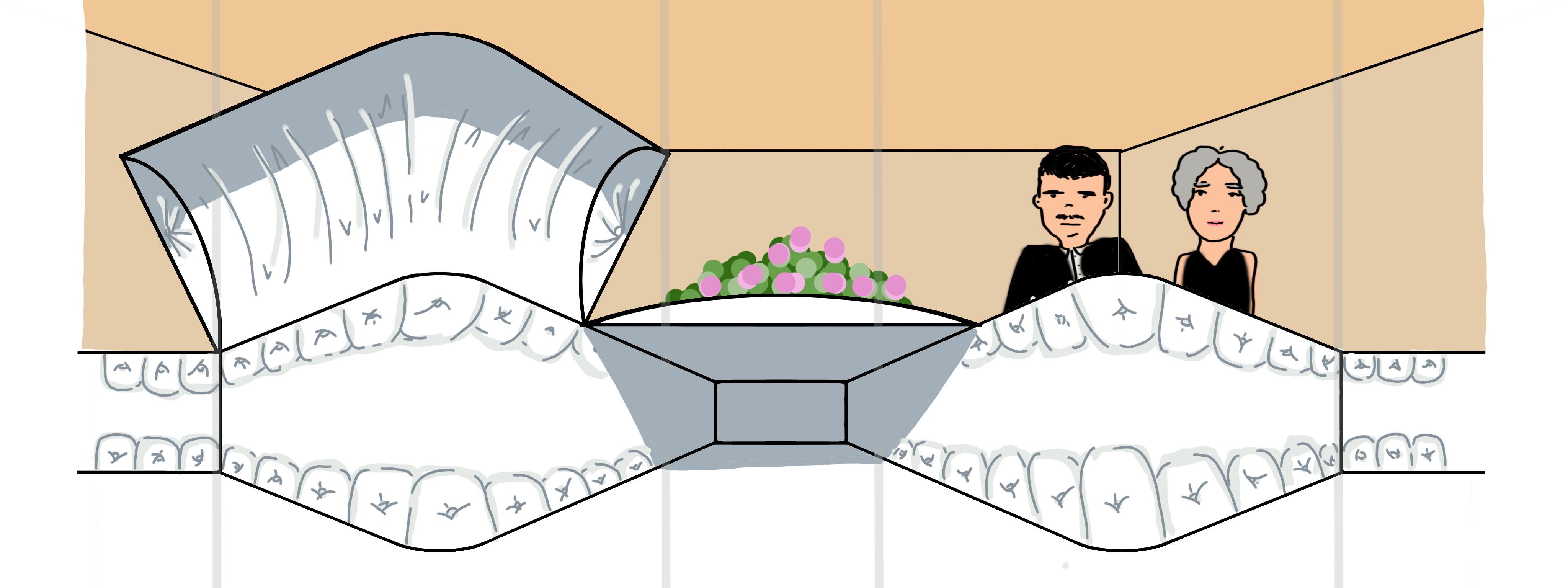
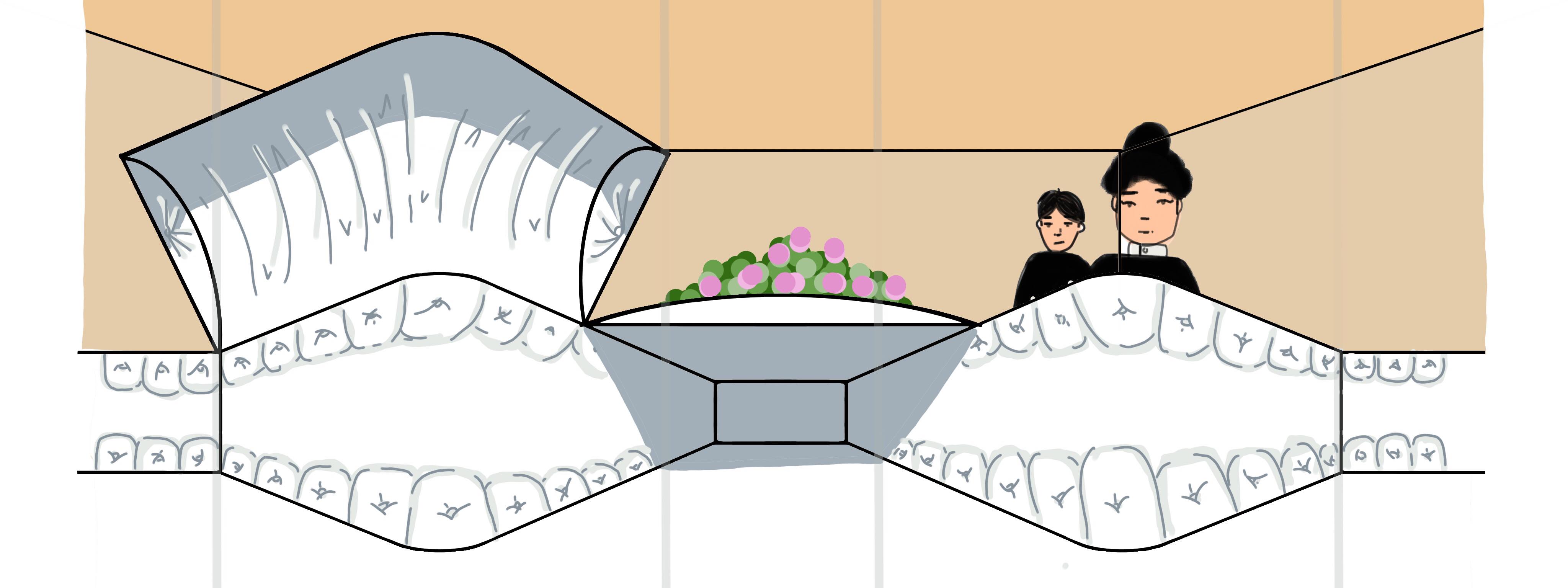
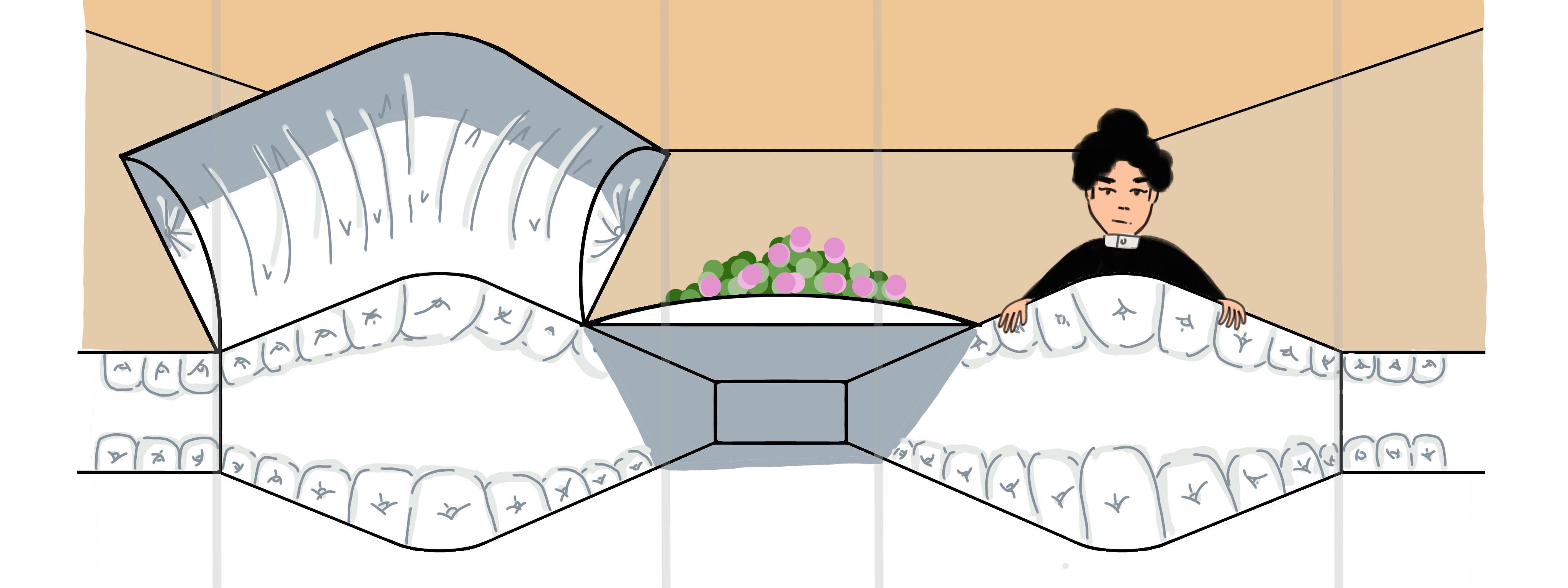
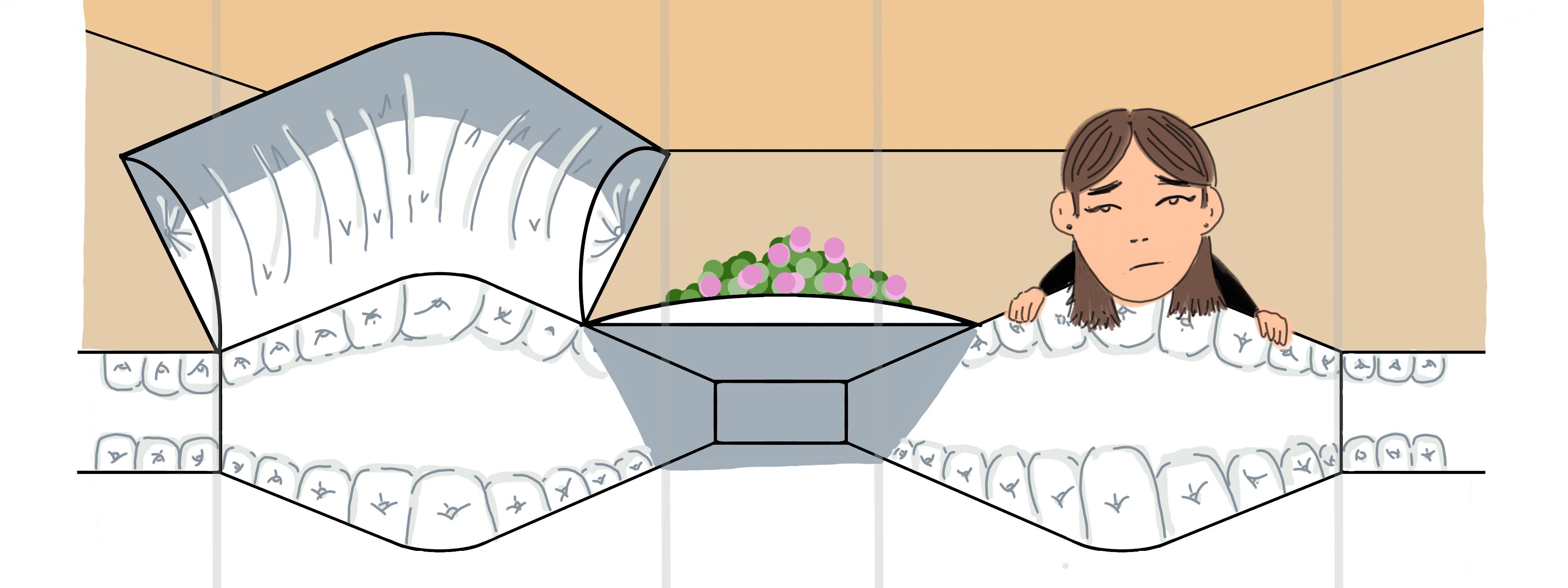
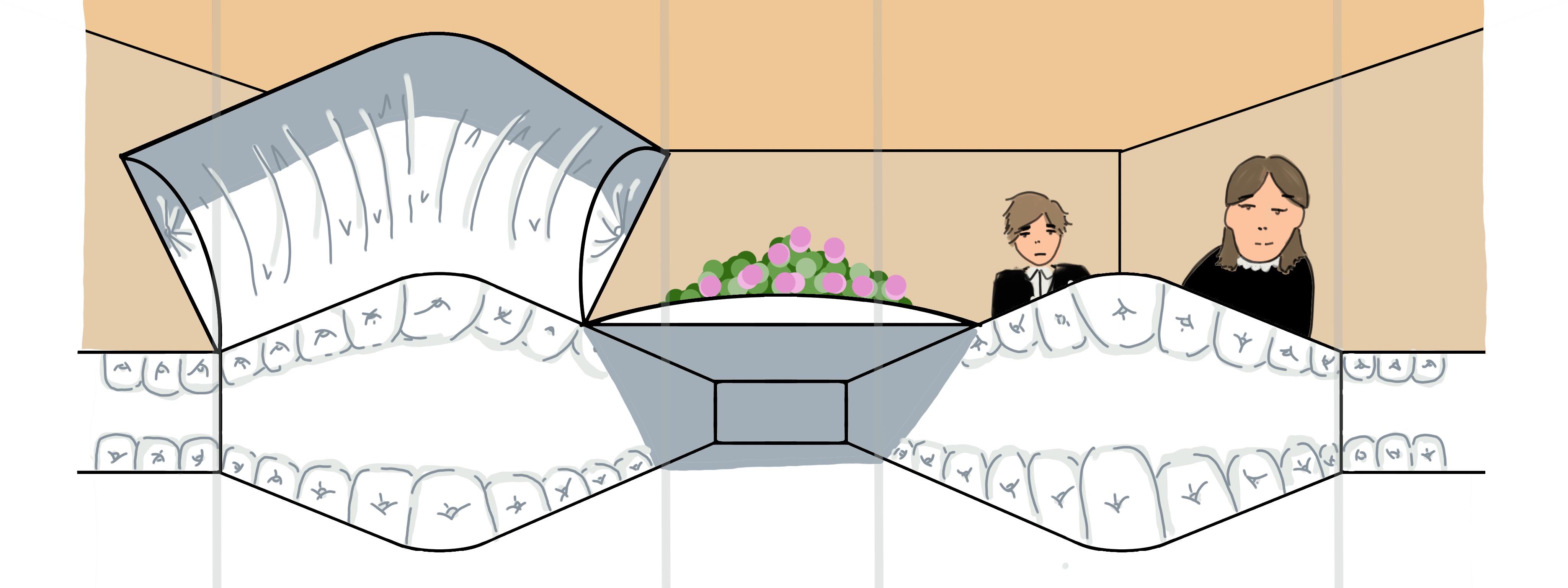


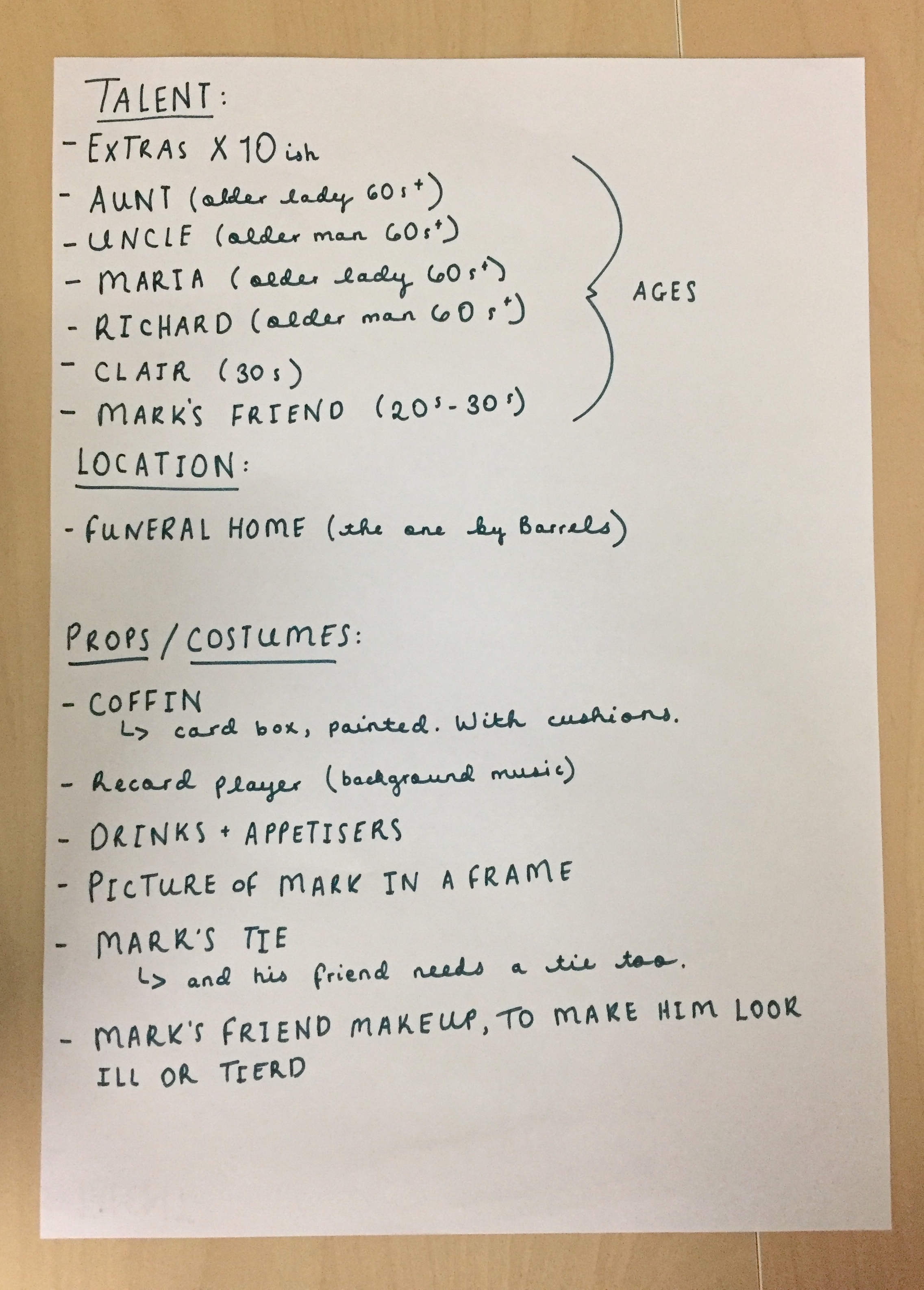
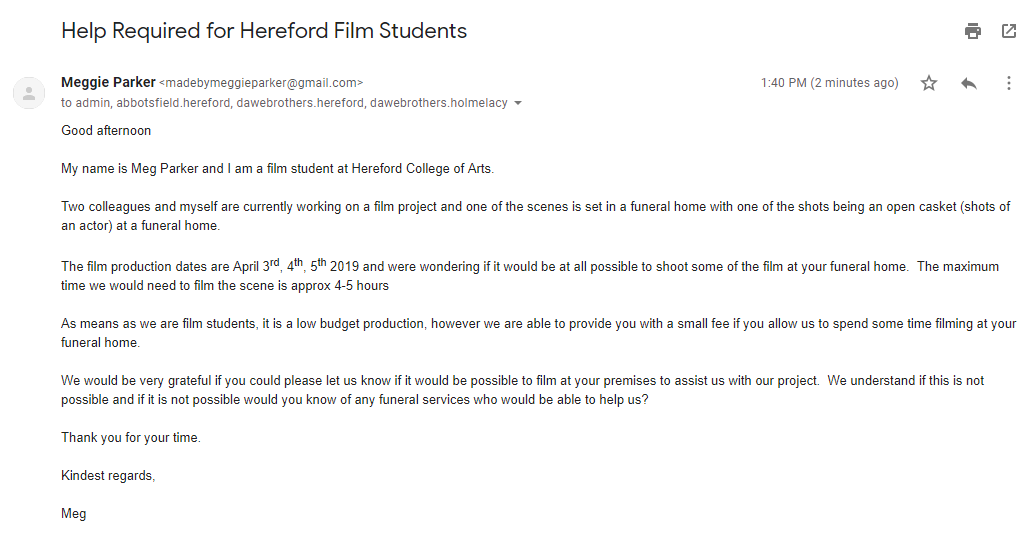
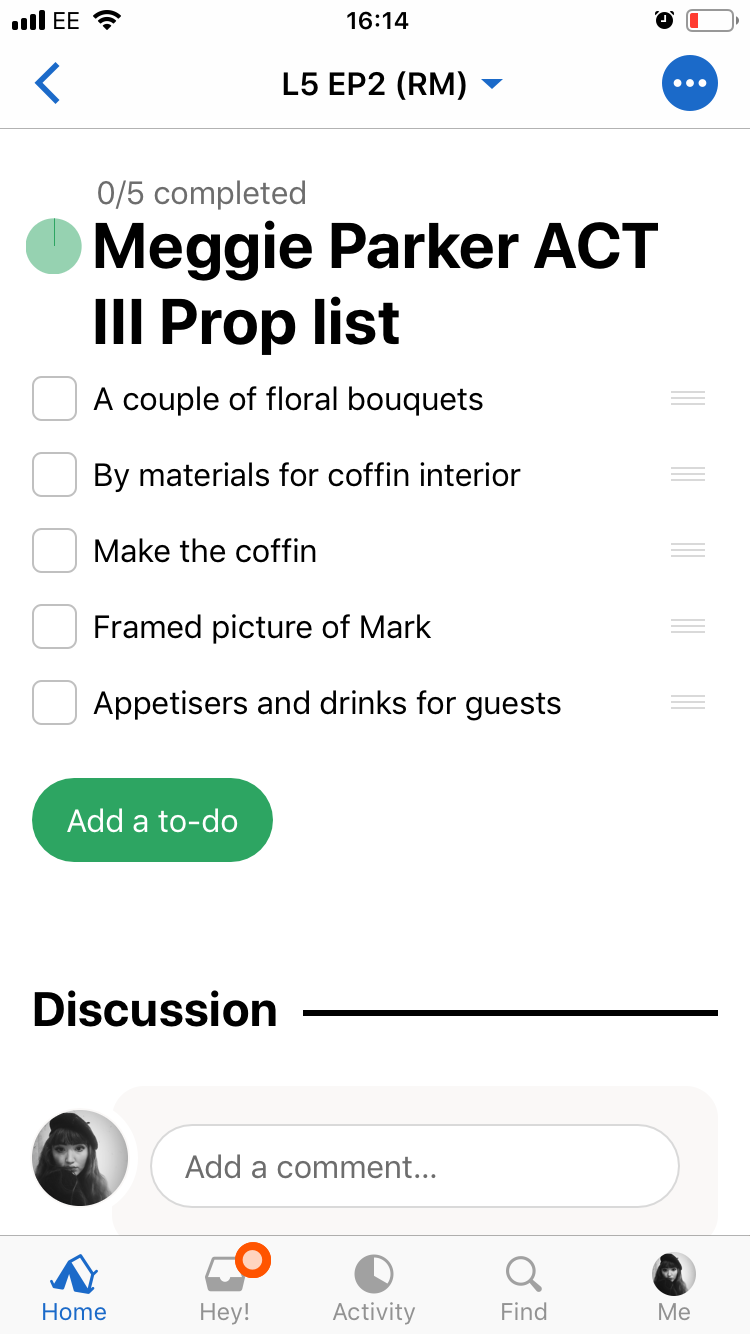
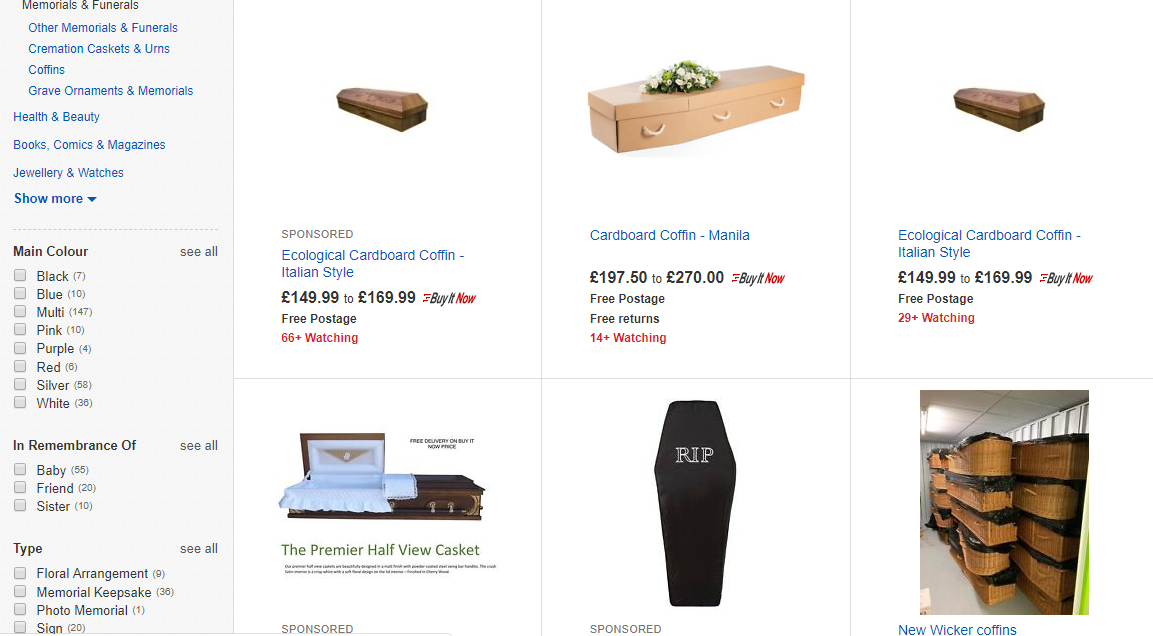
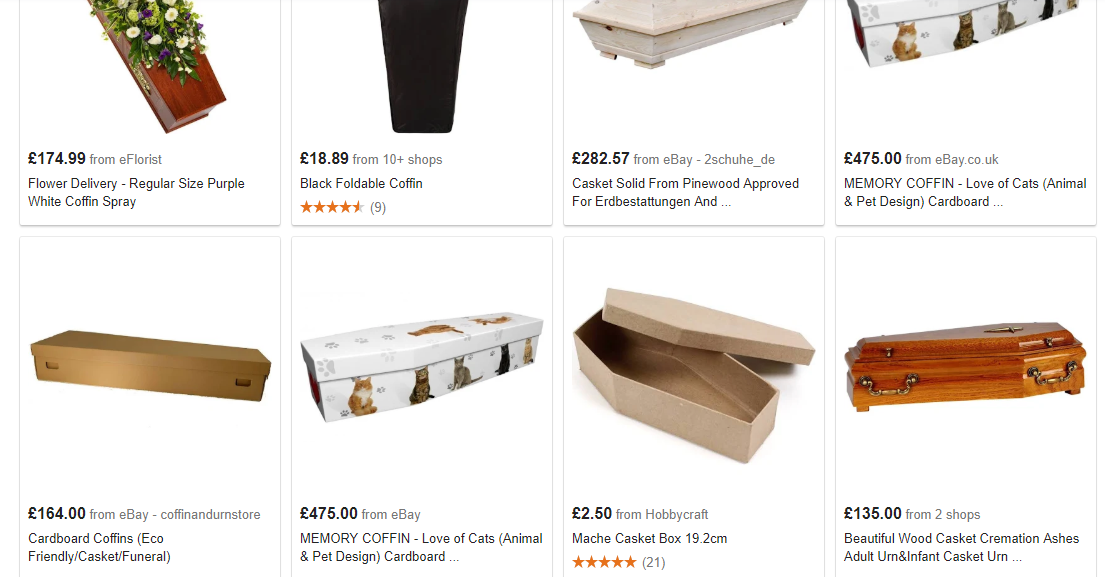






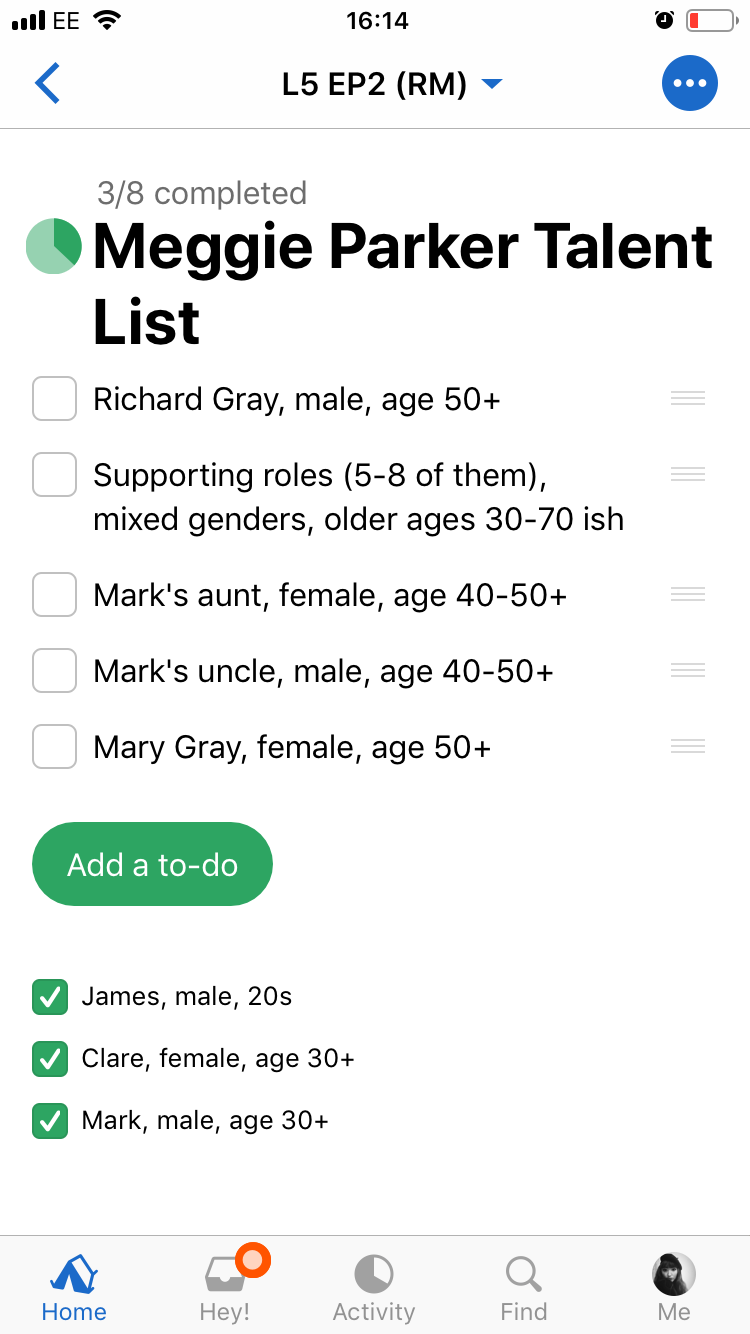
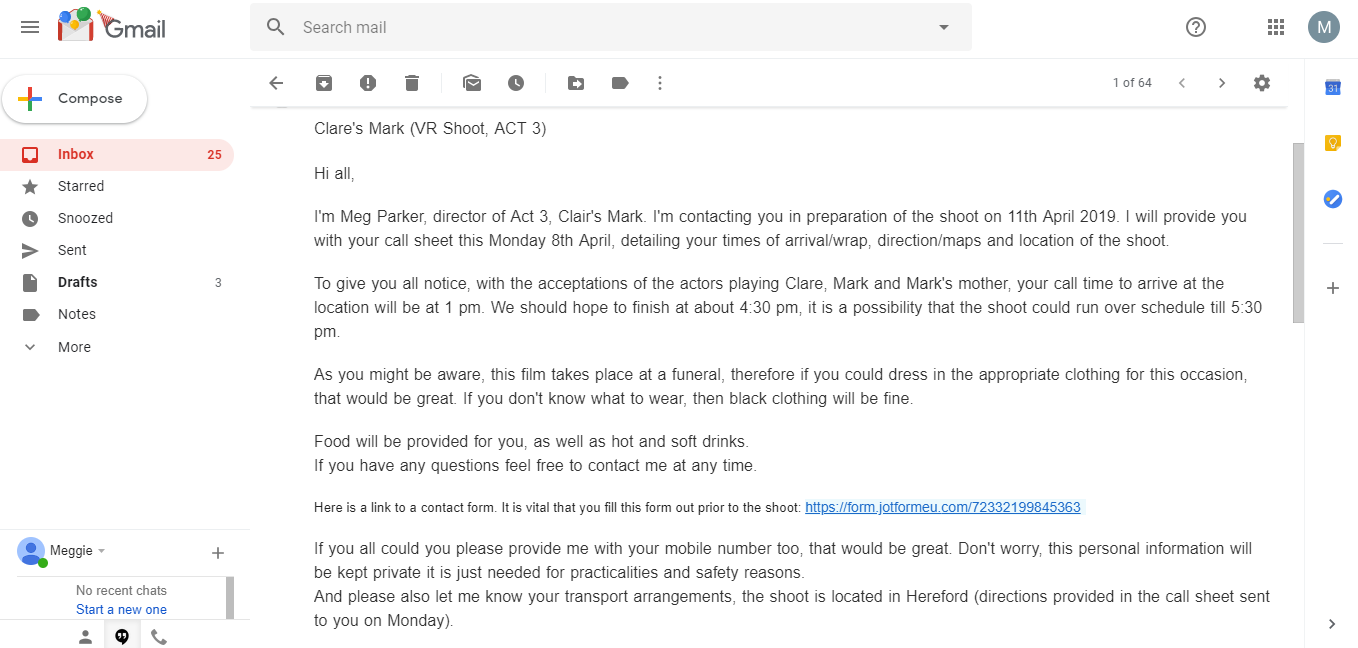
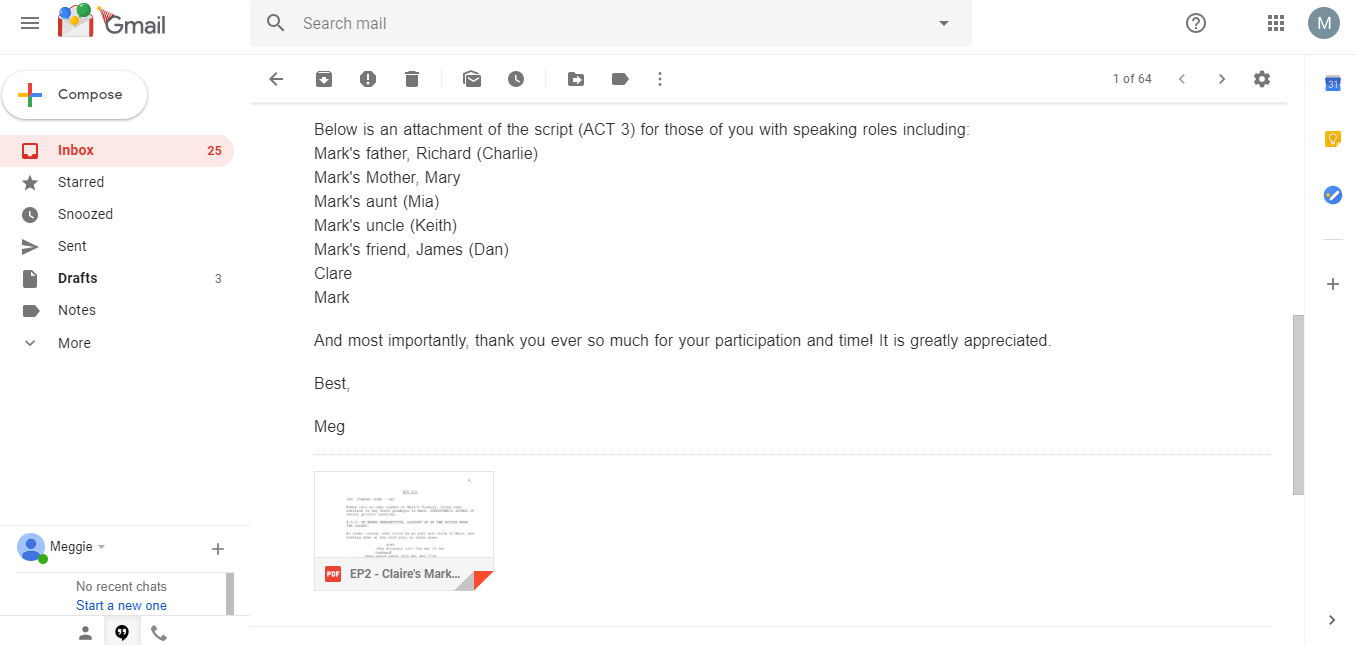
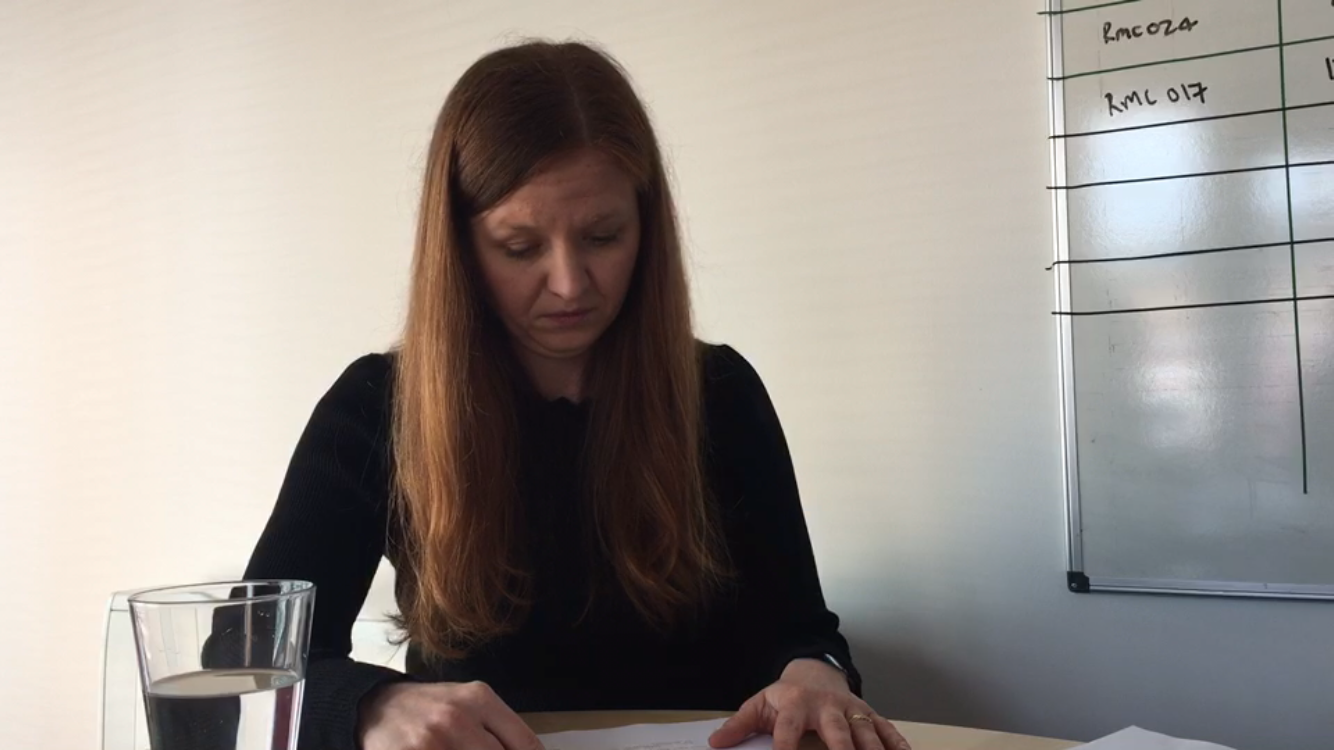
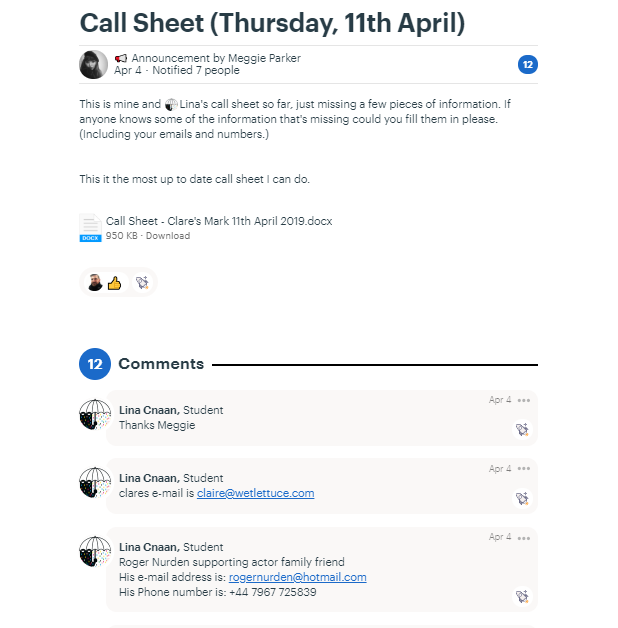 Production-packs includes…
Production-packs includes…